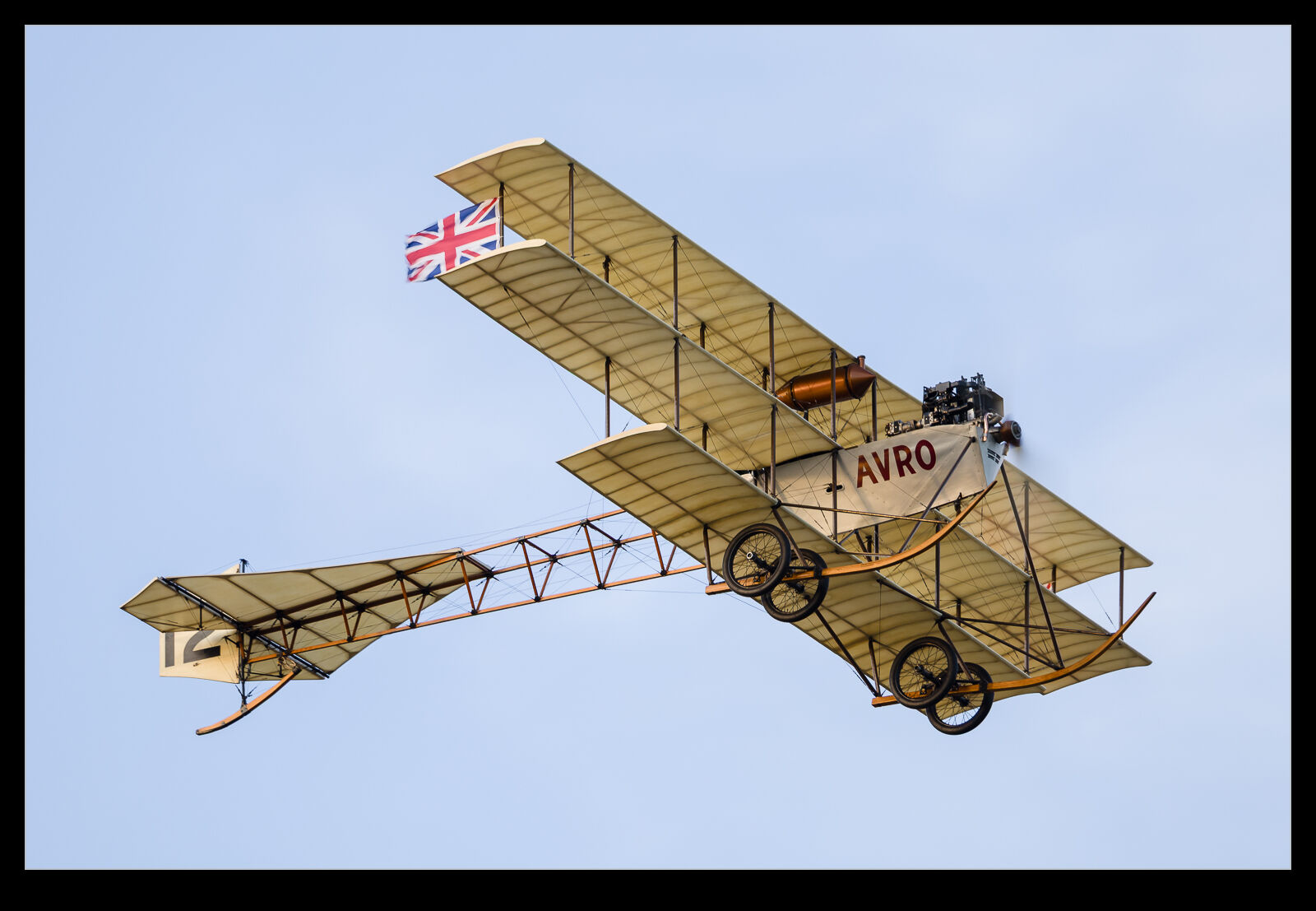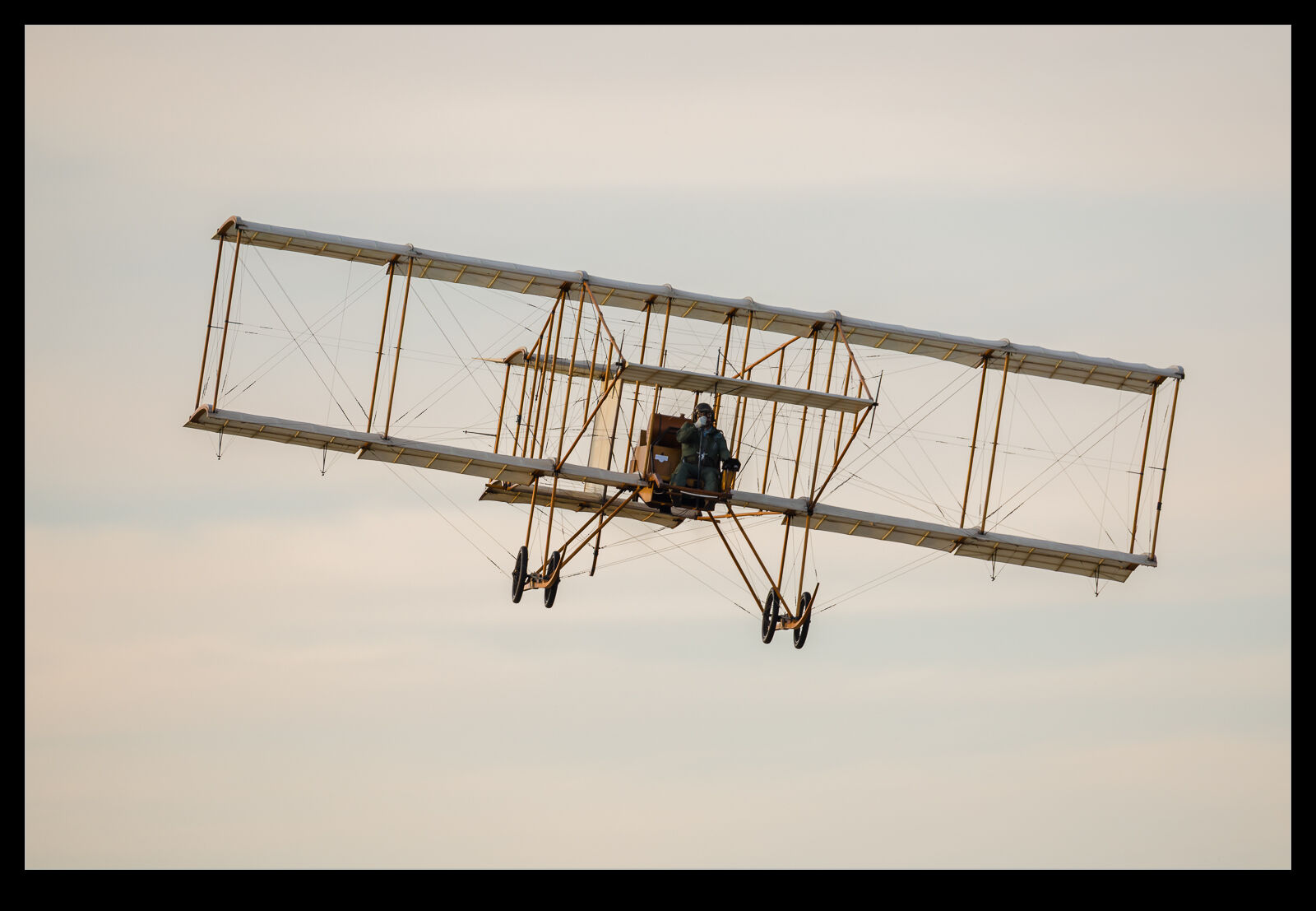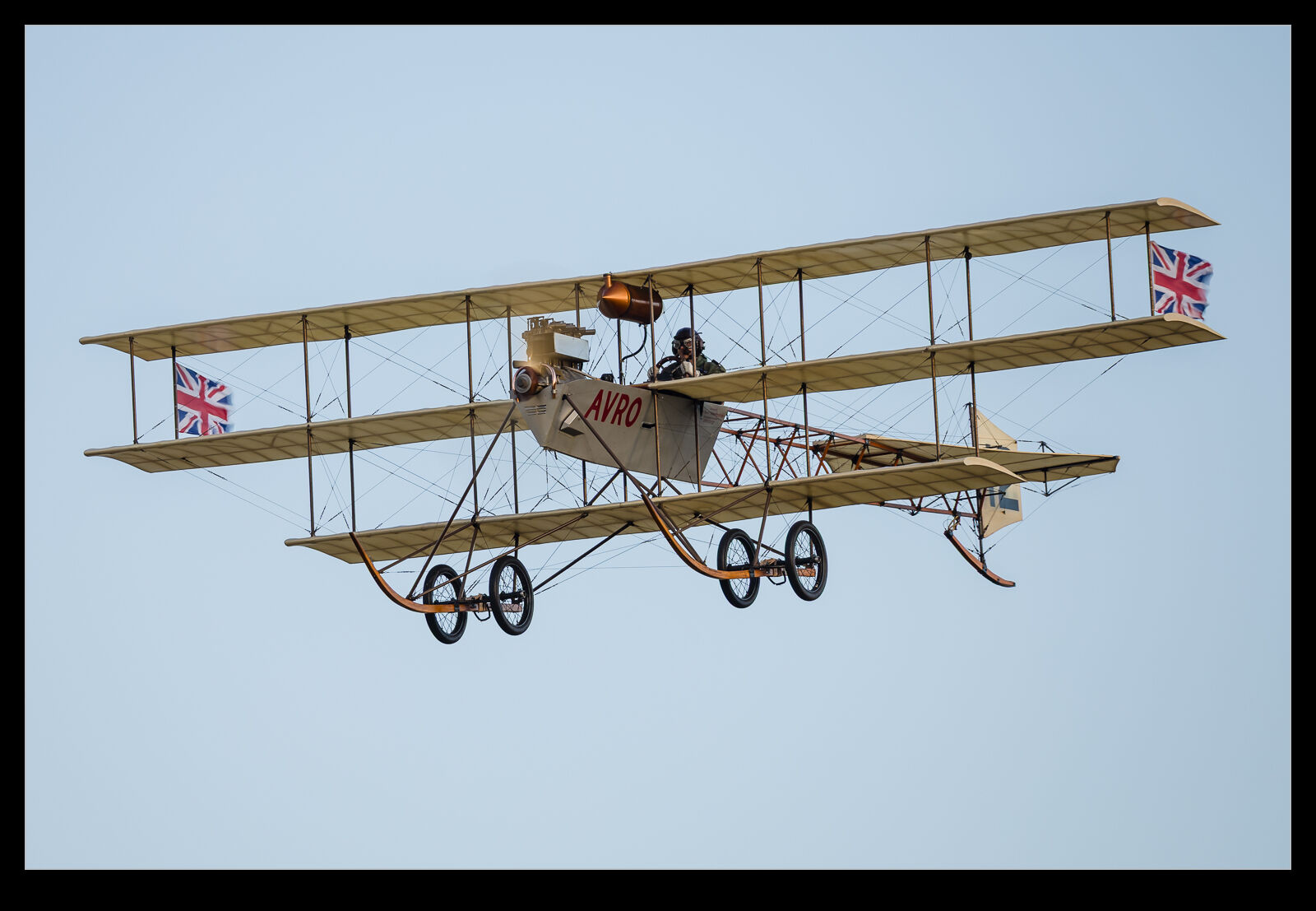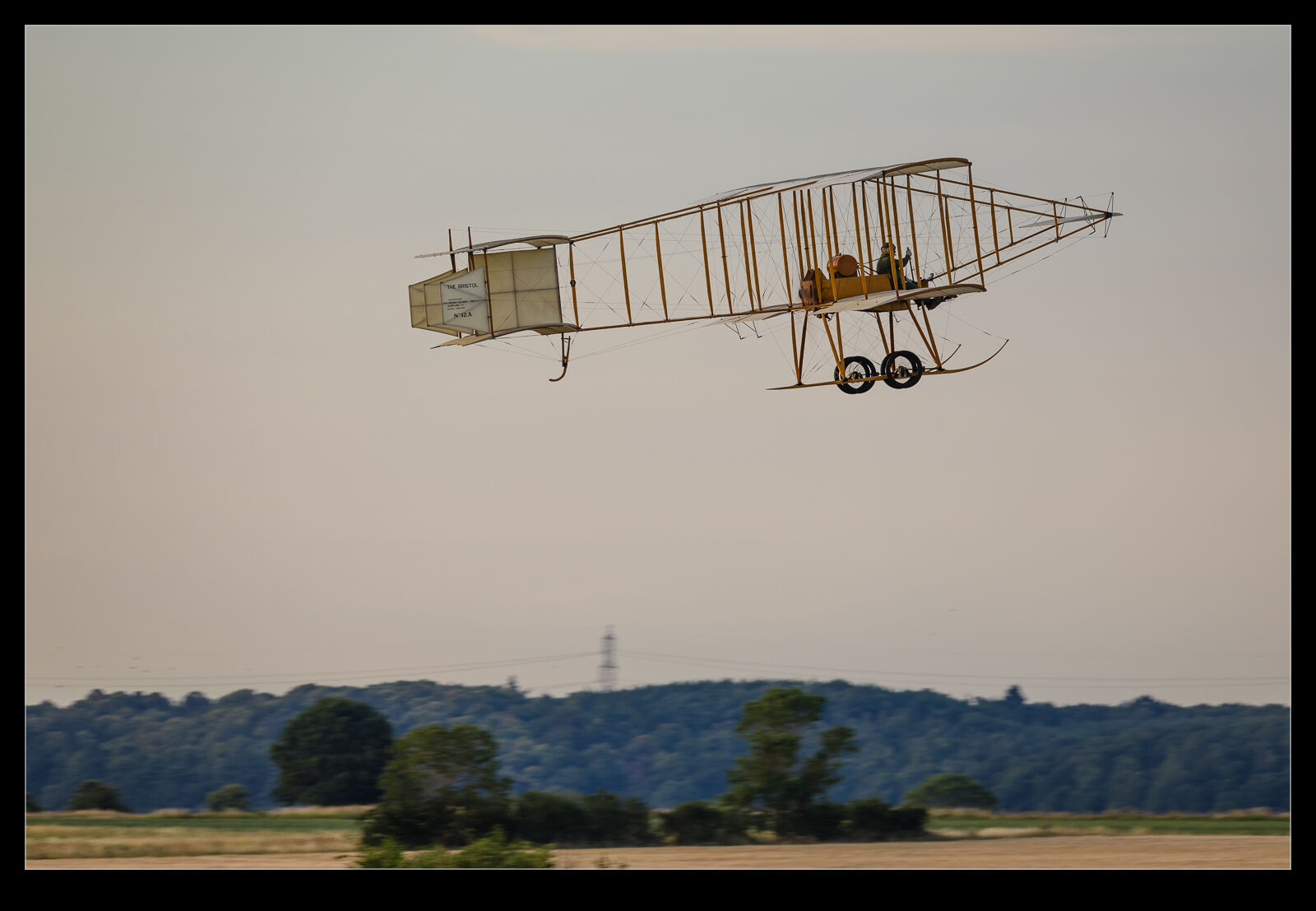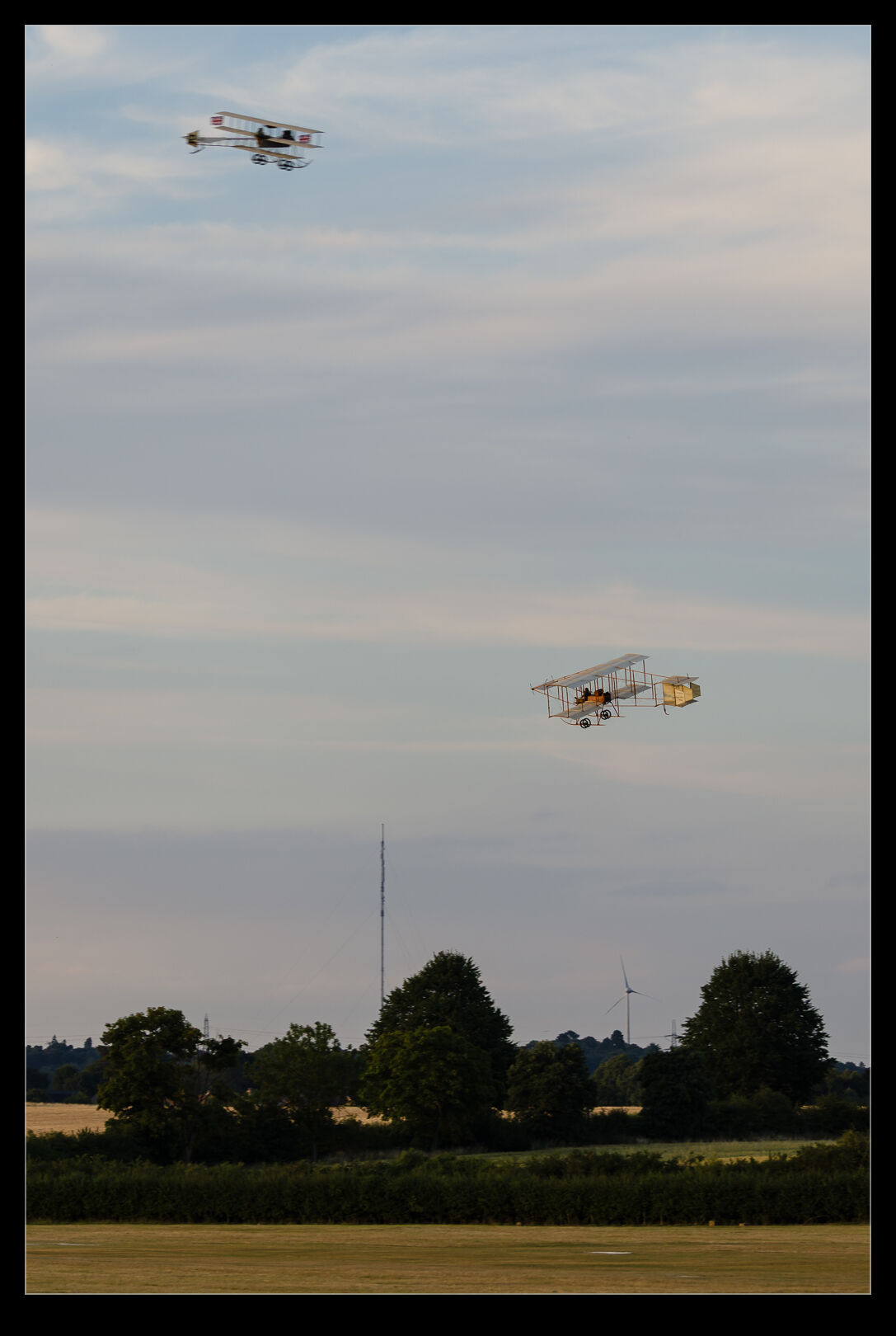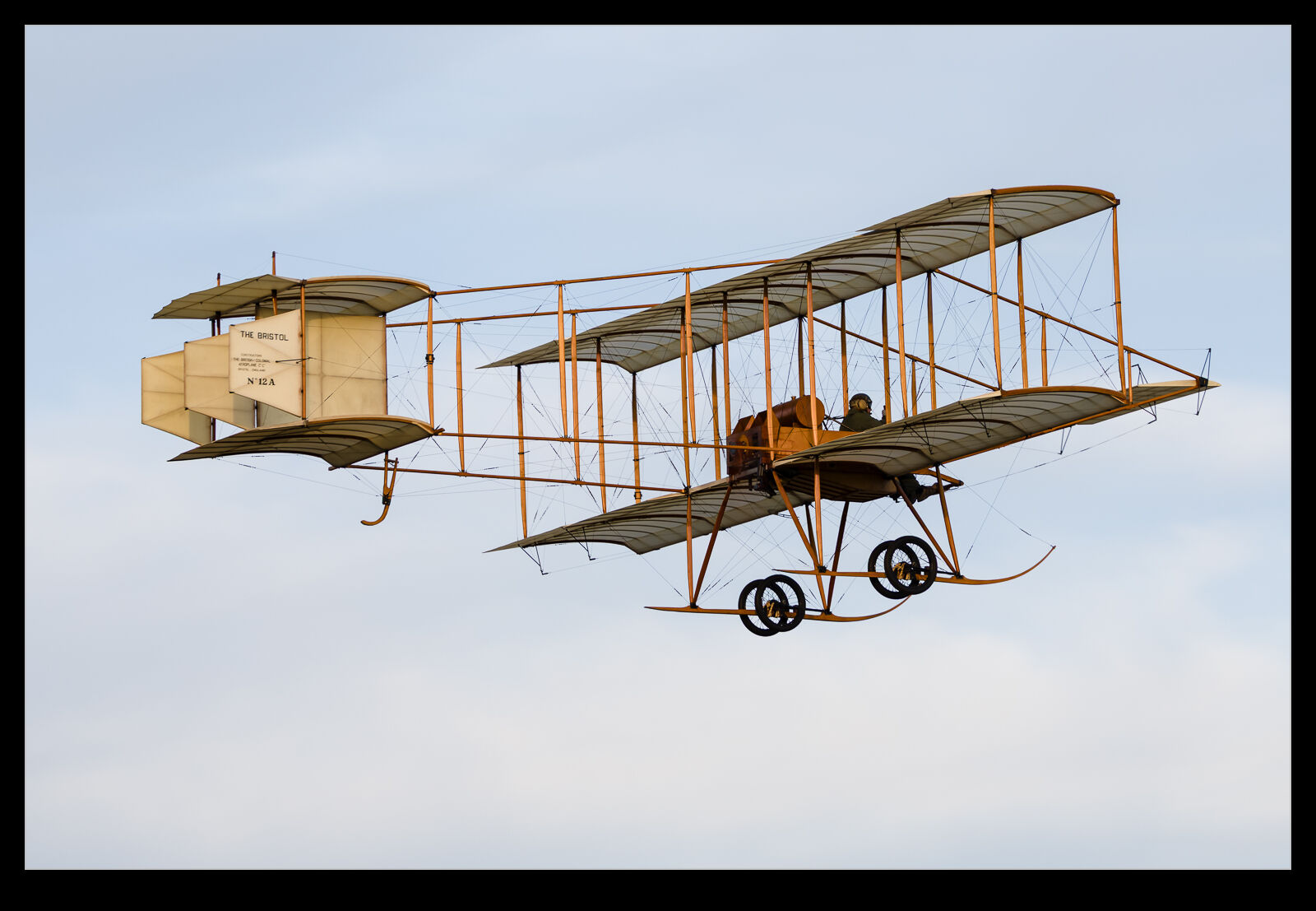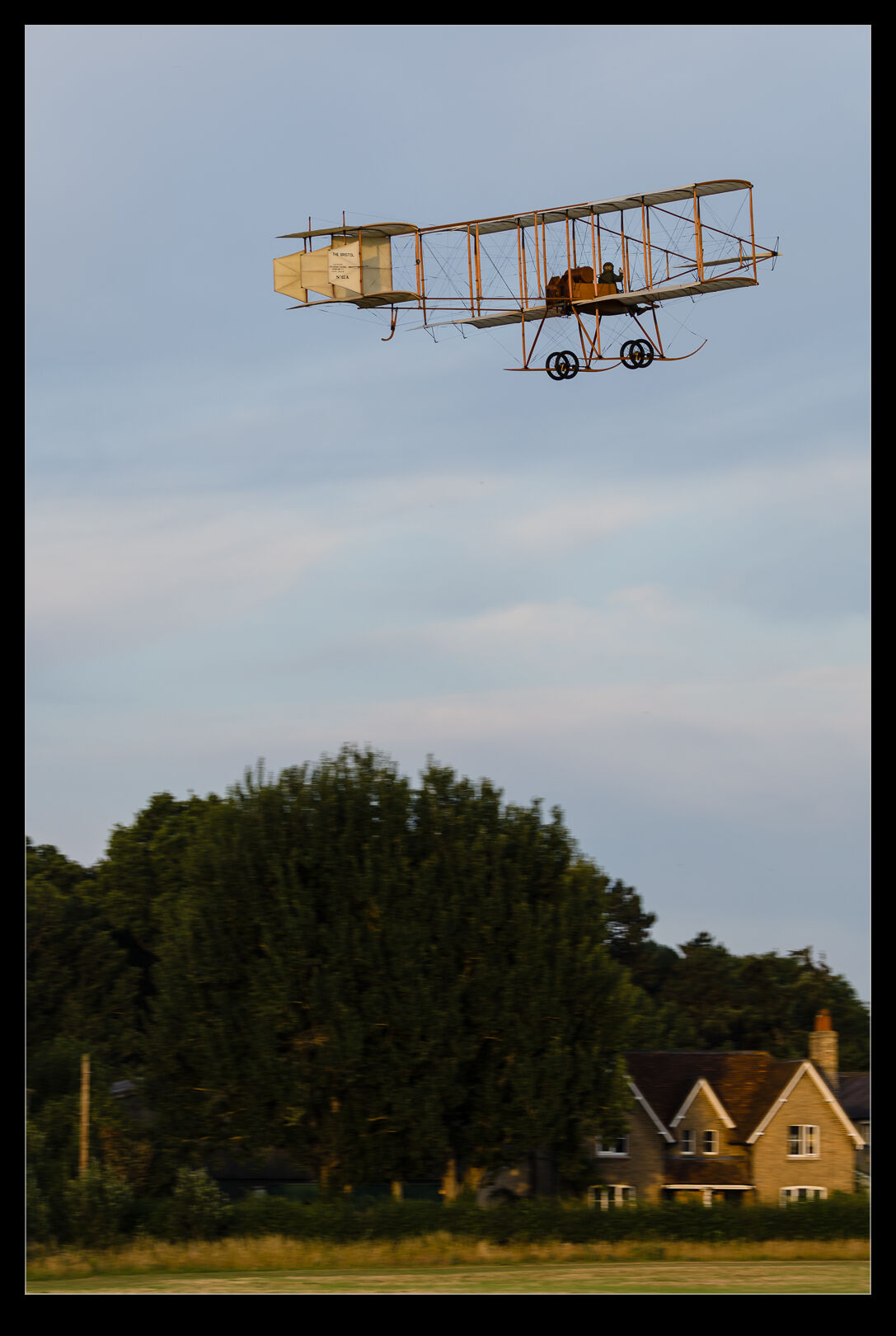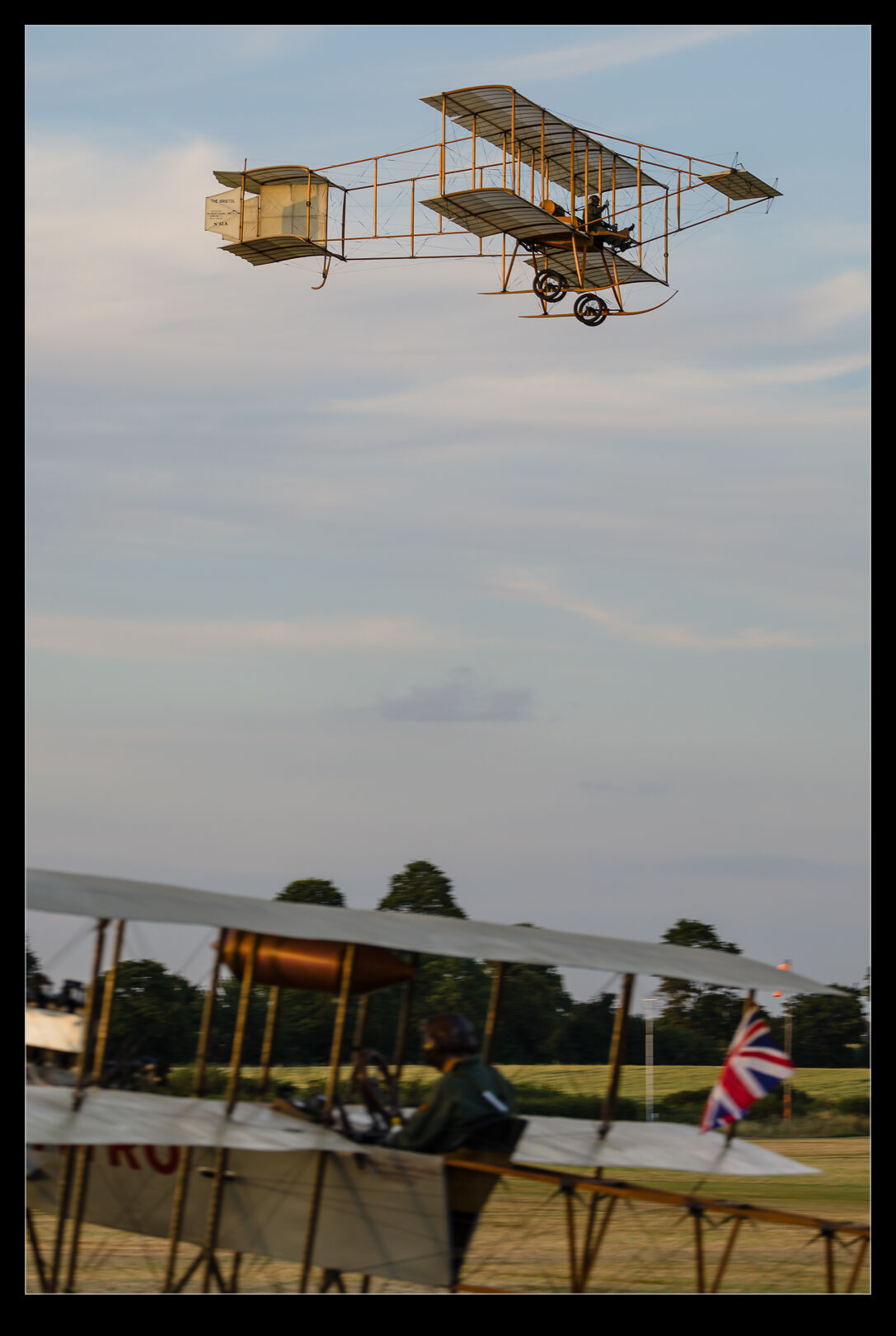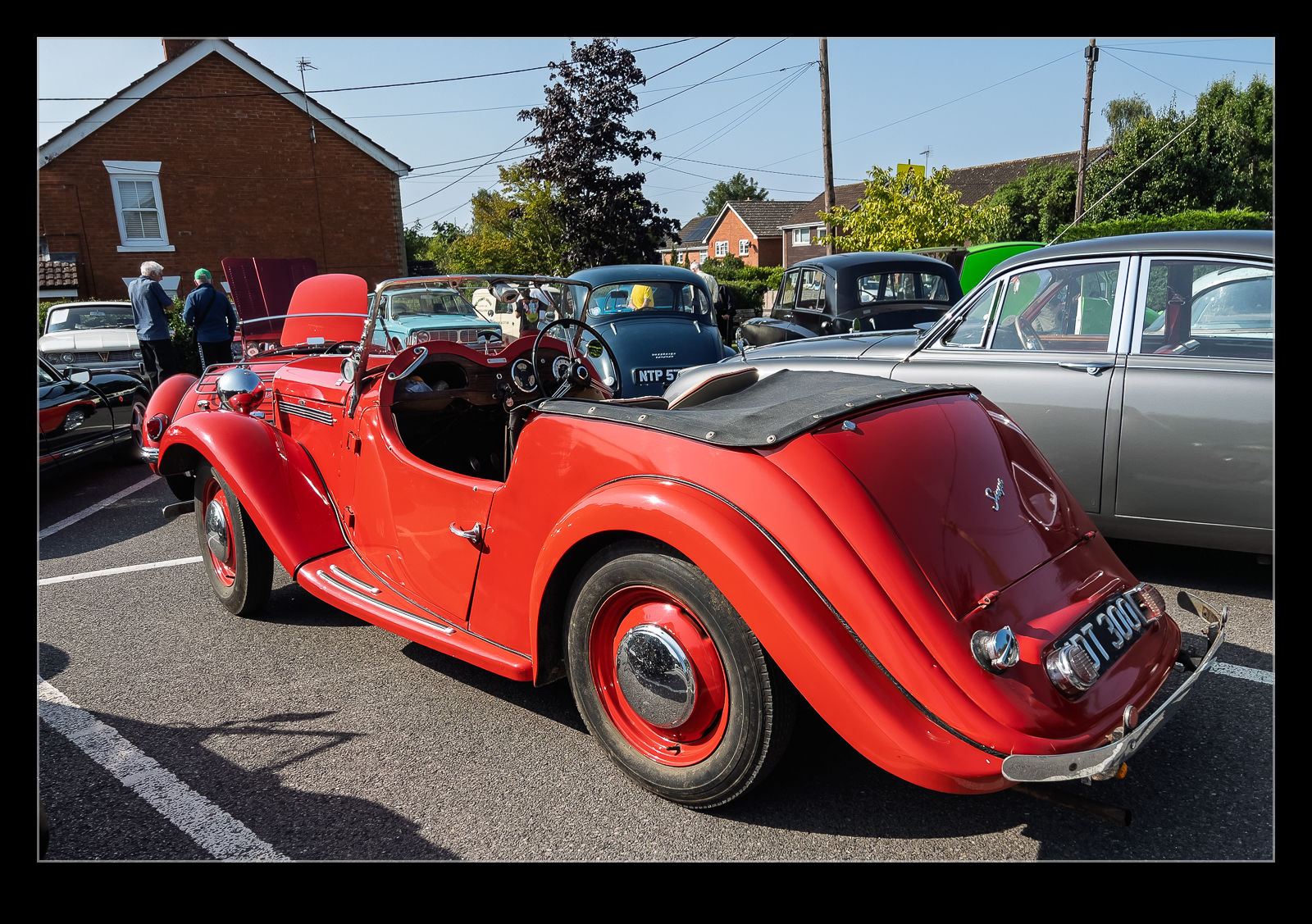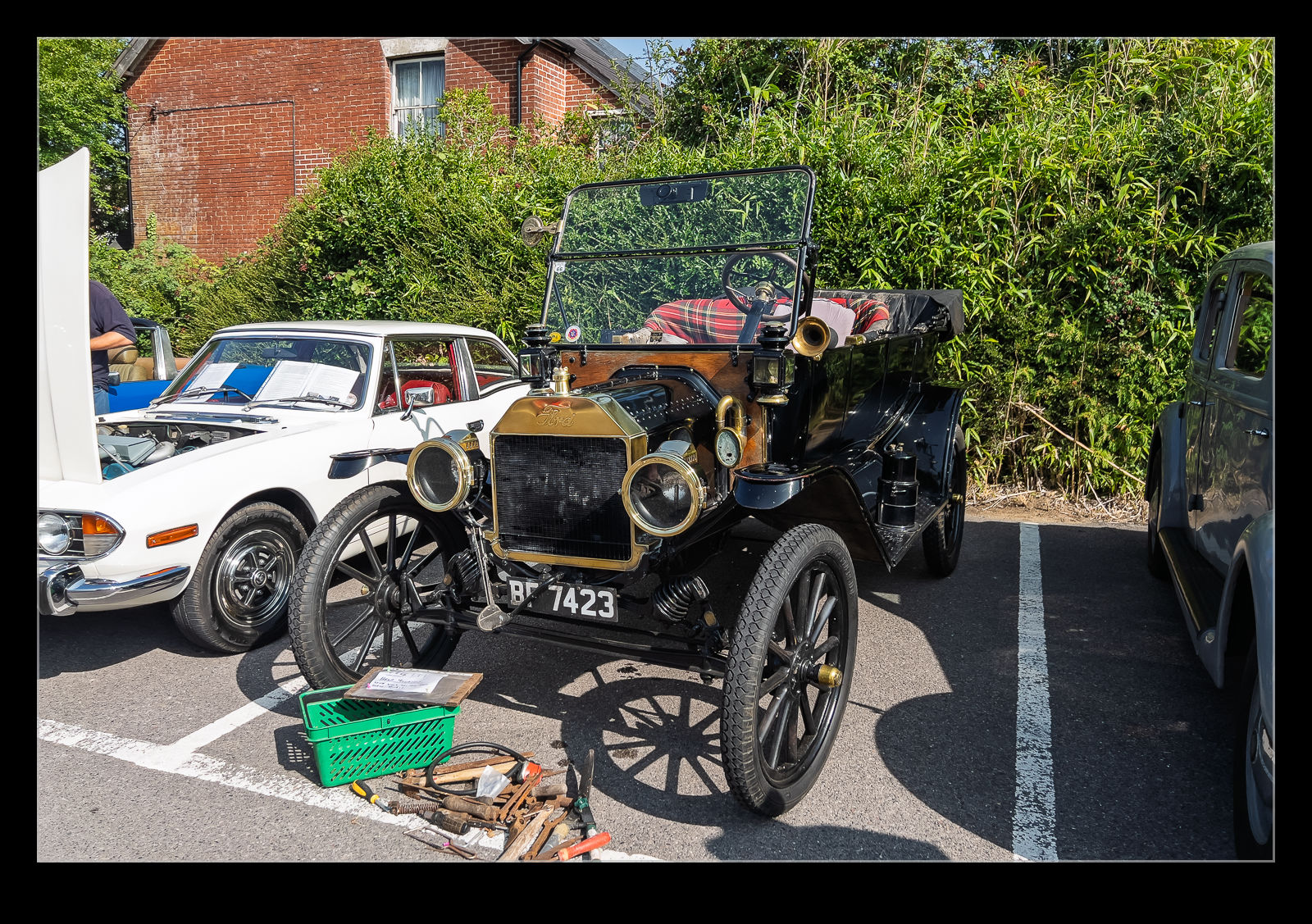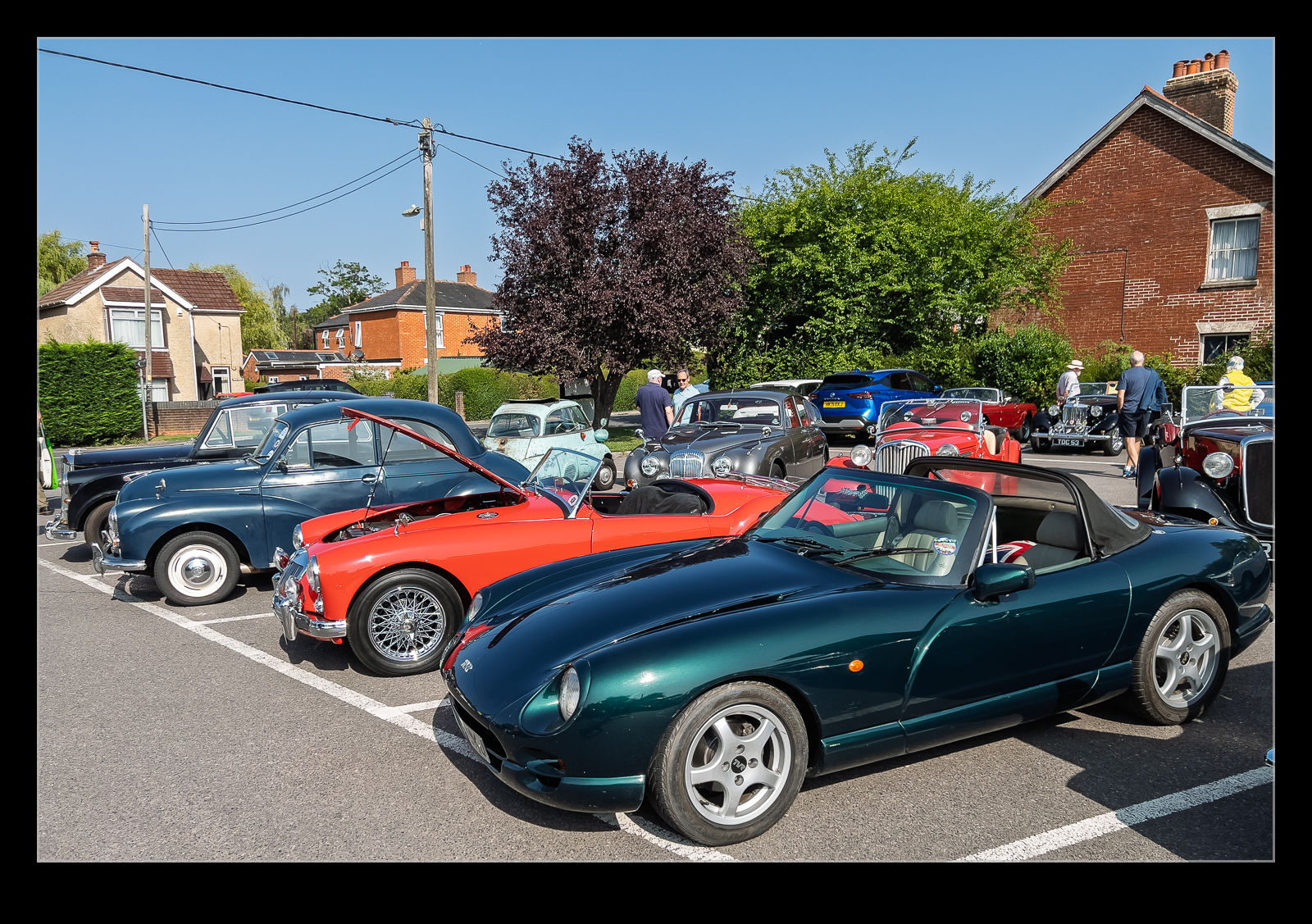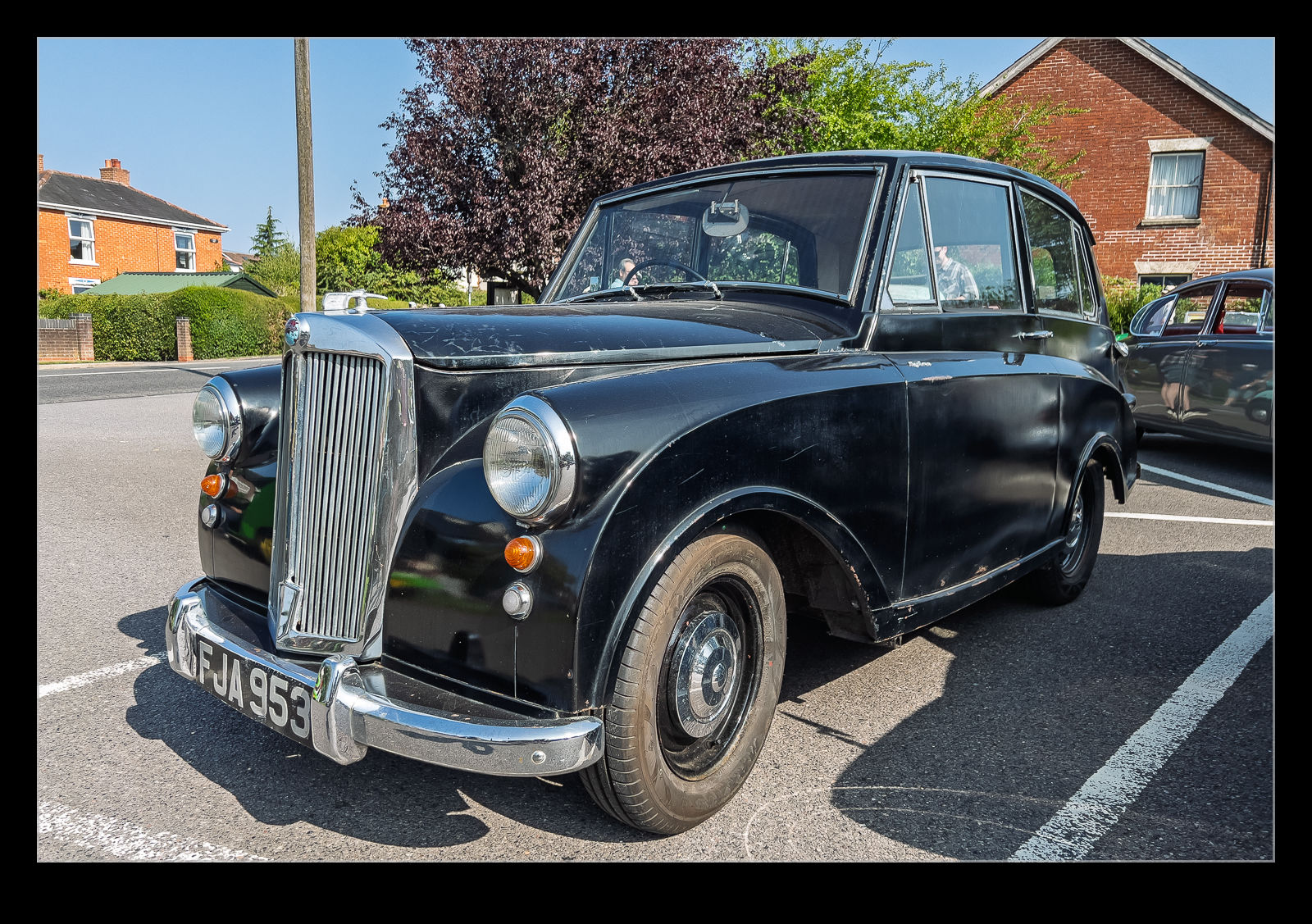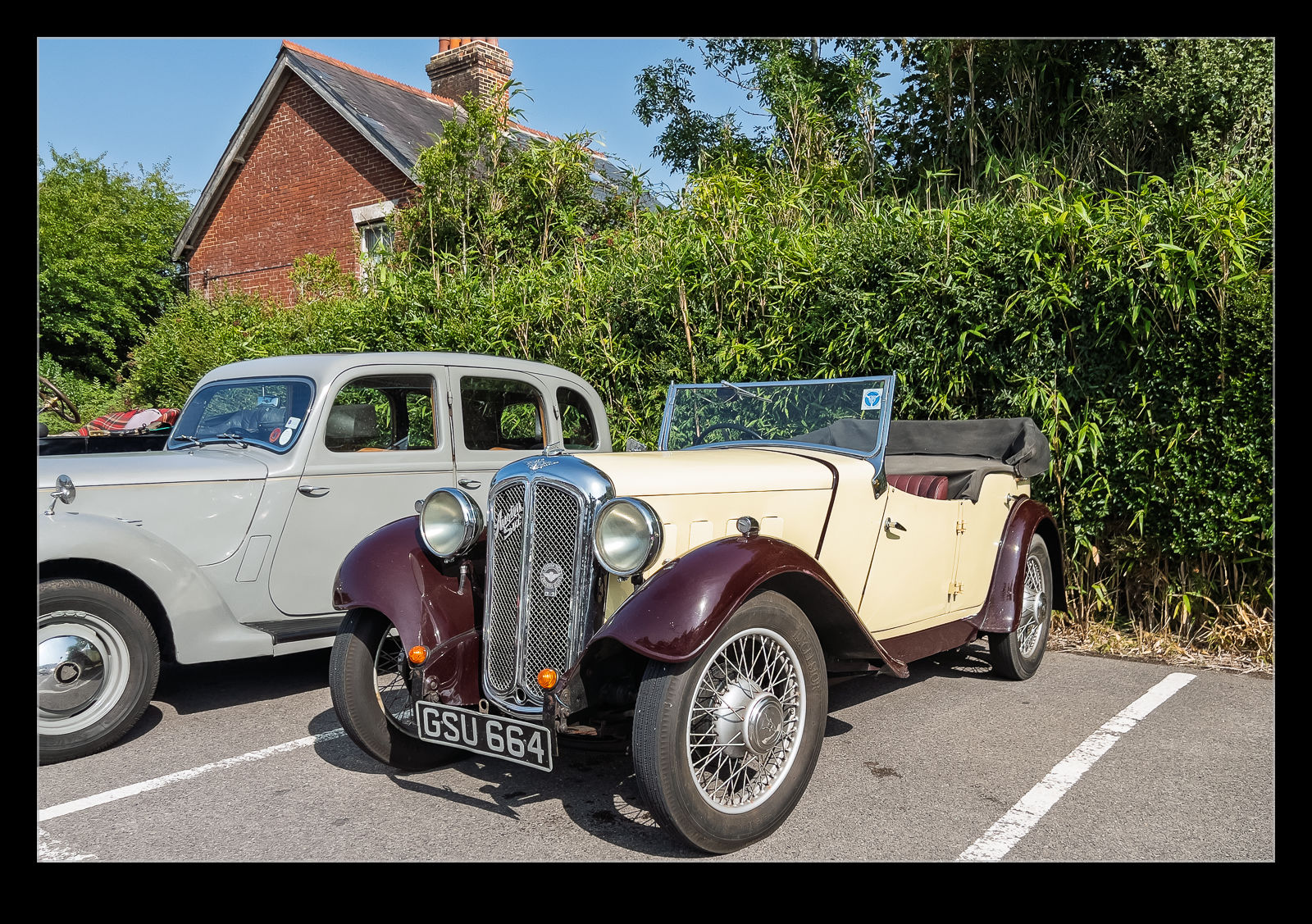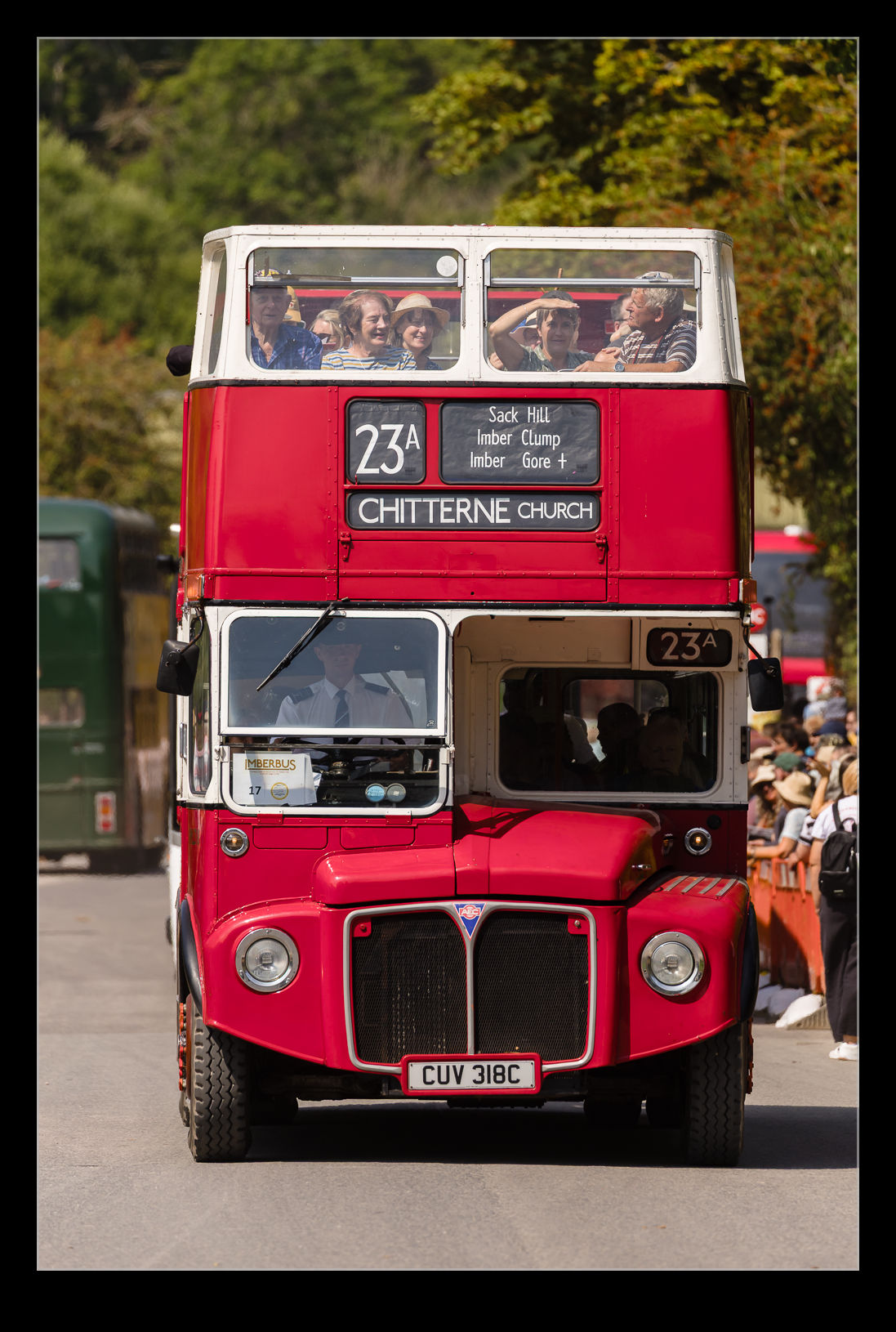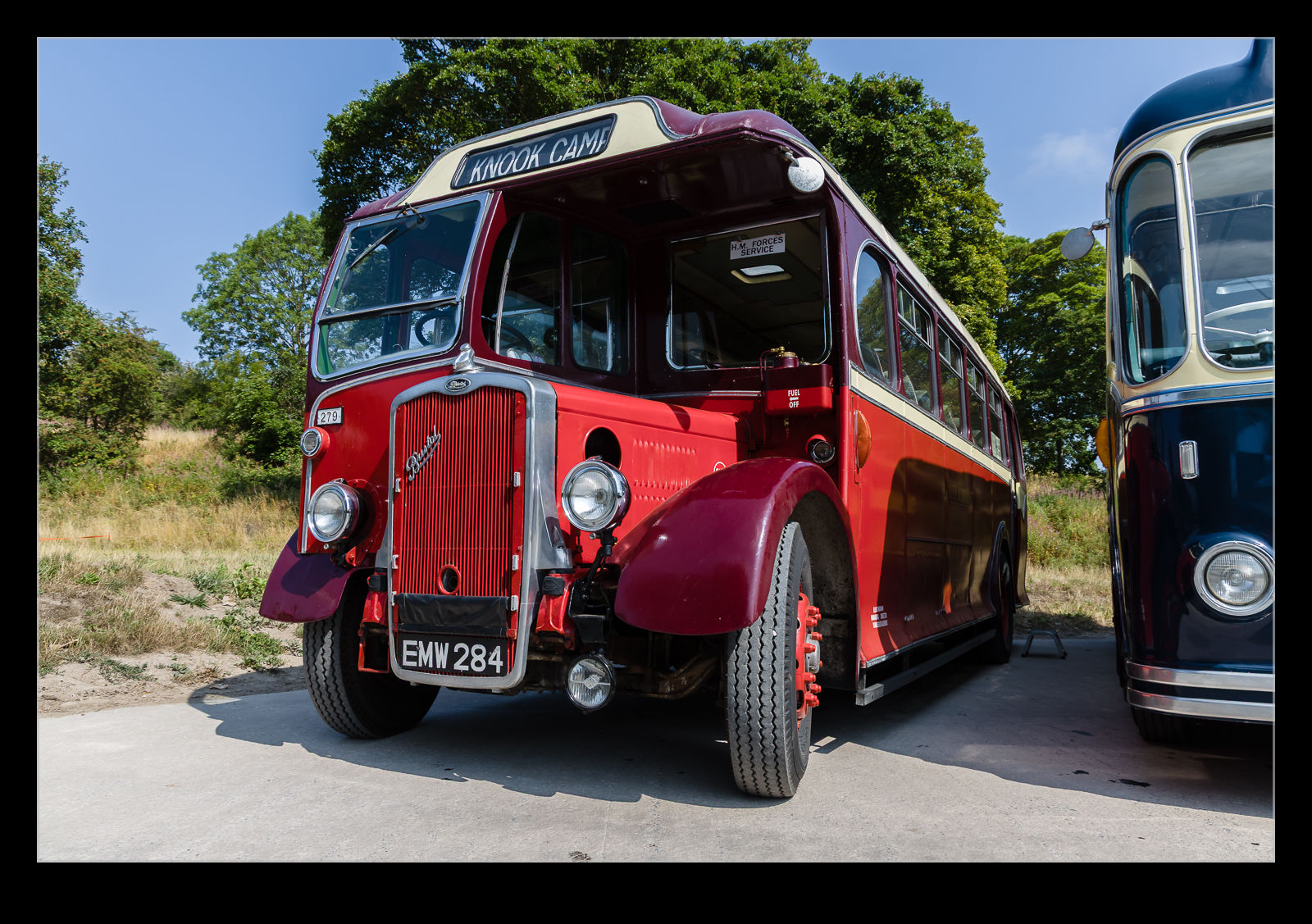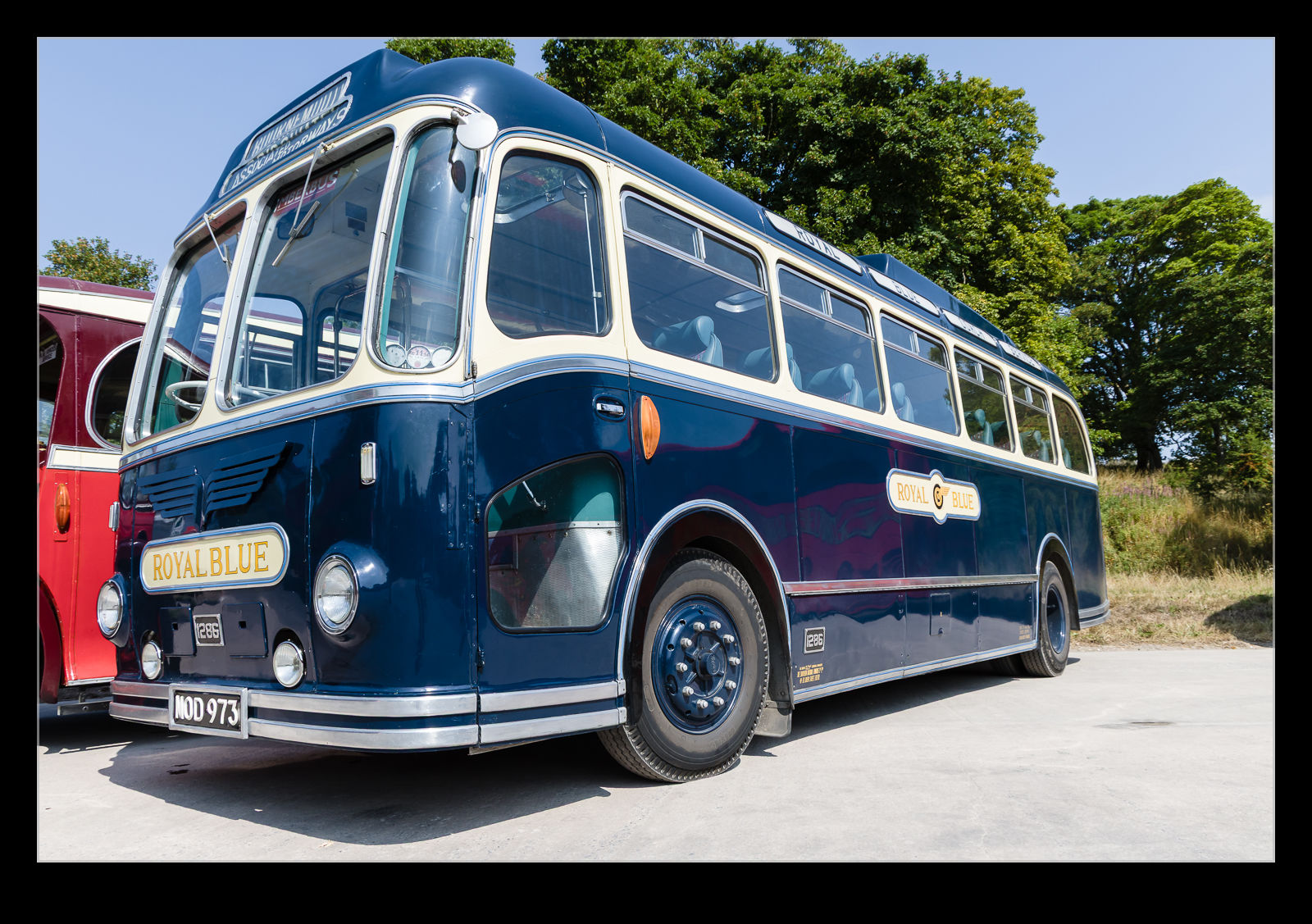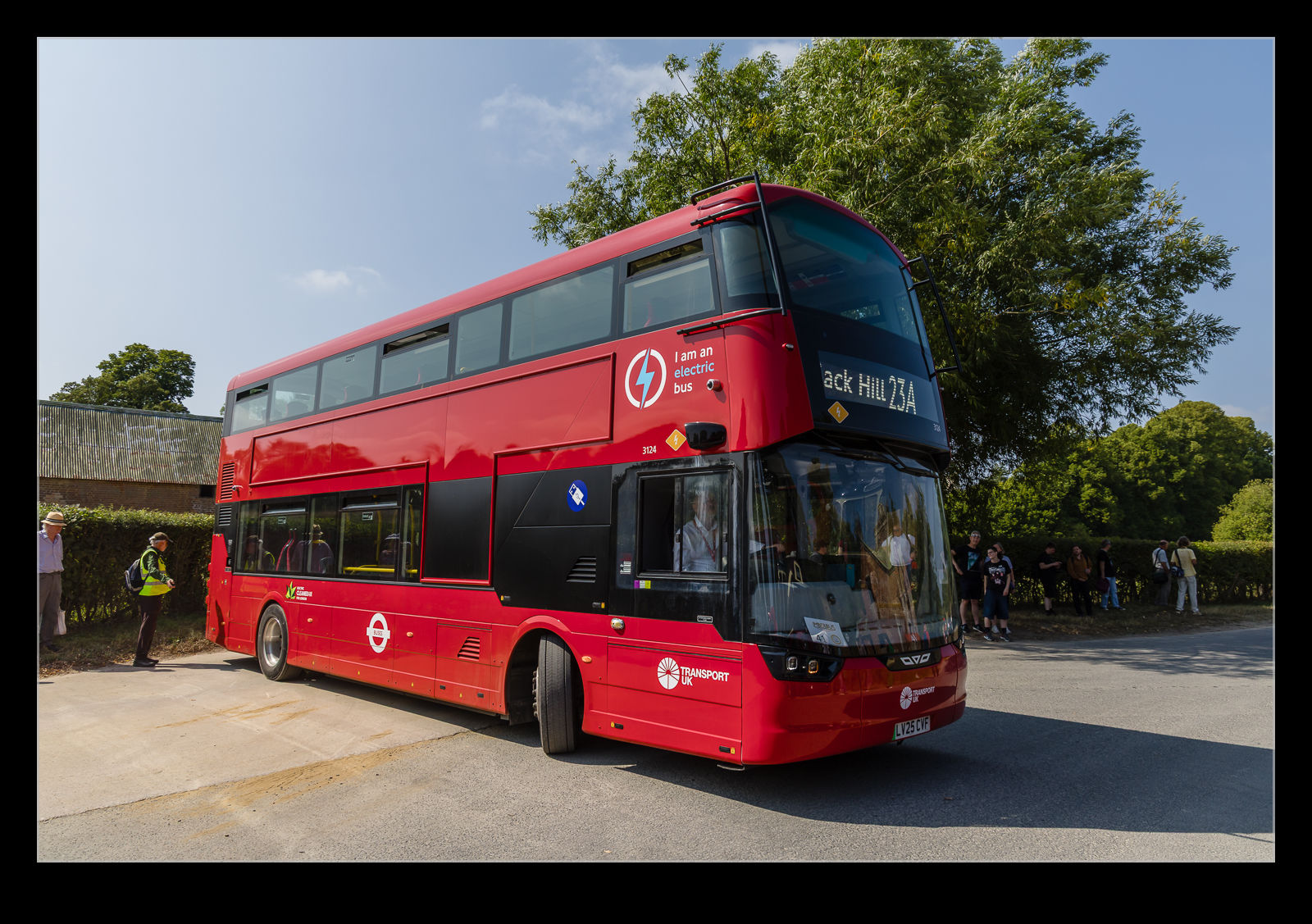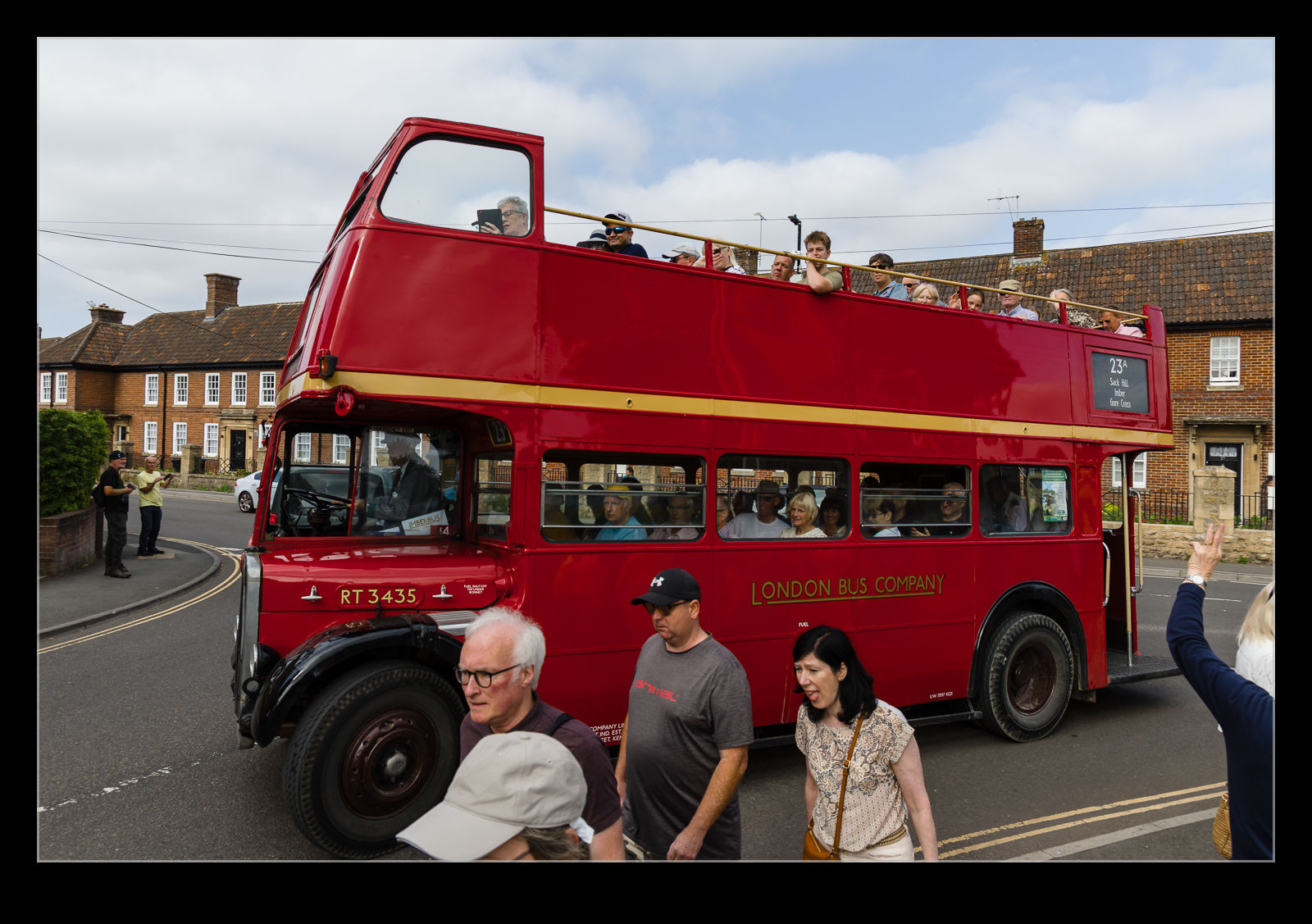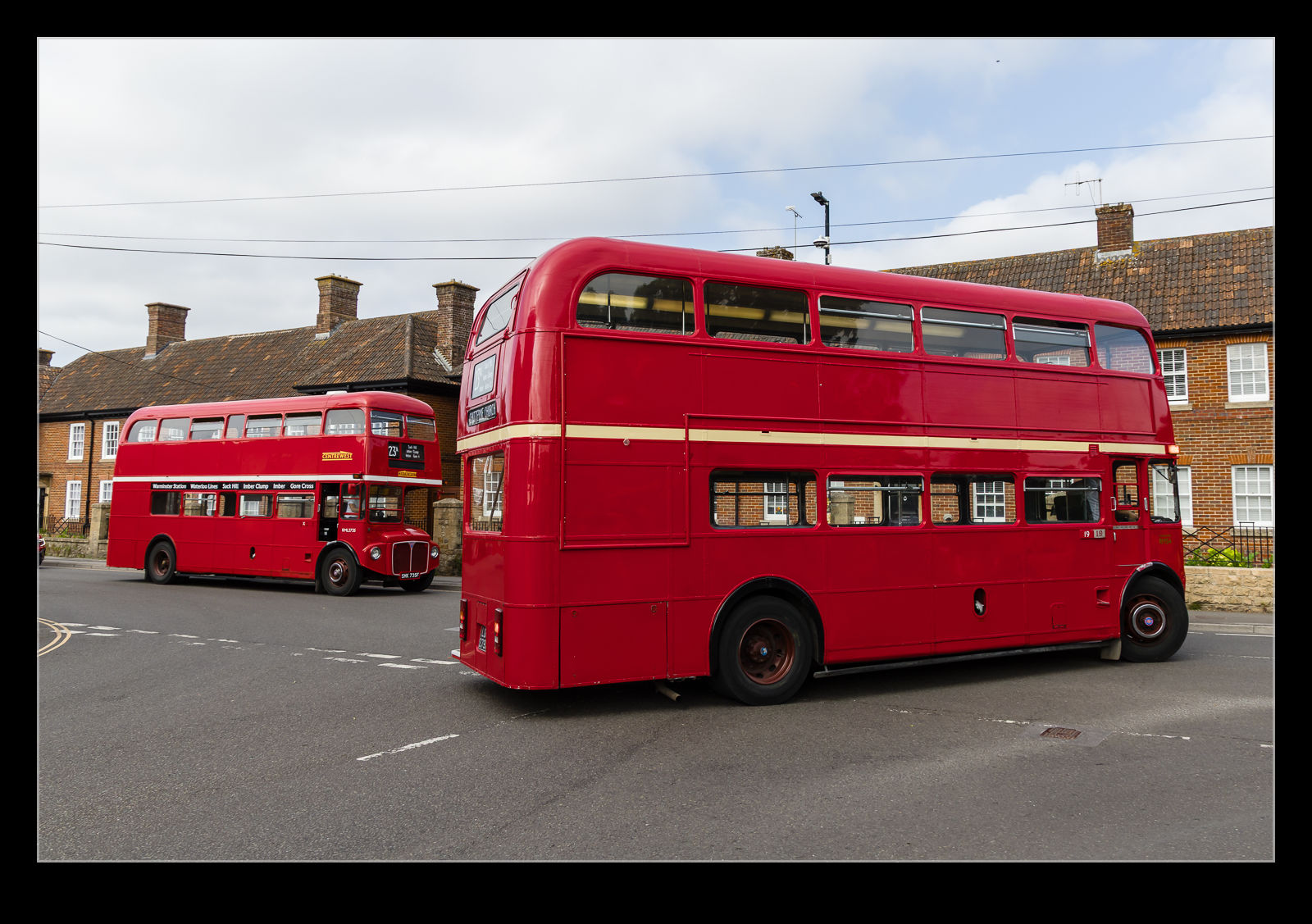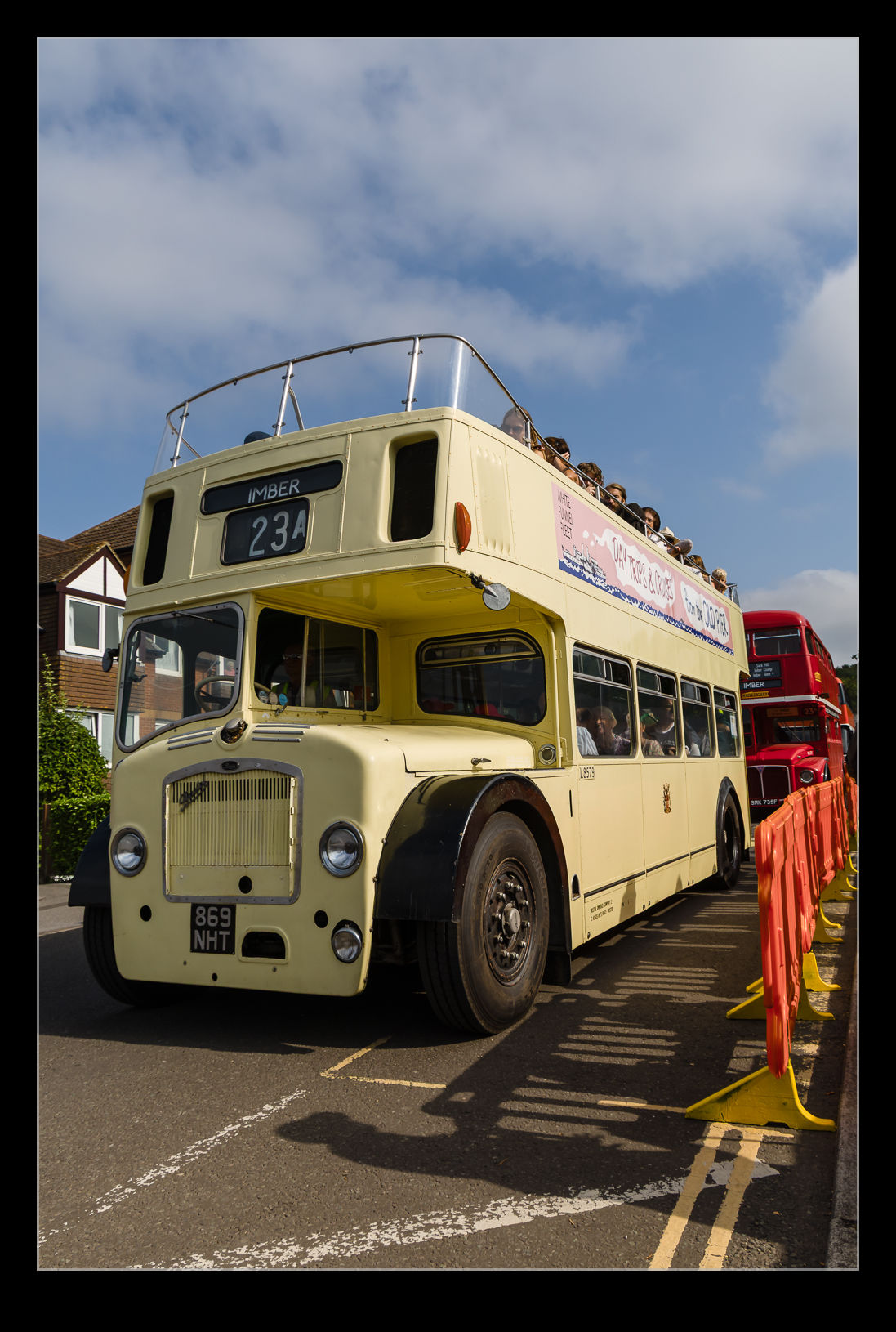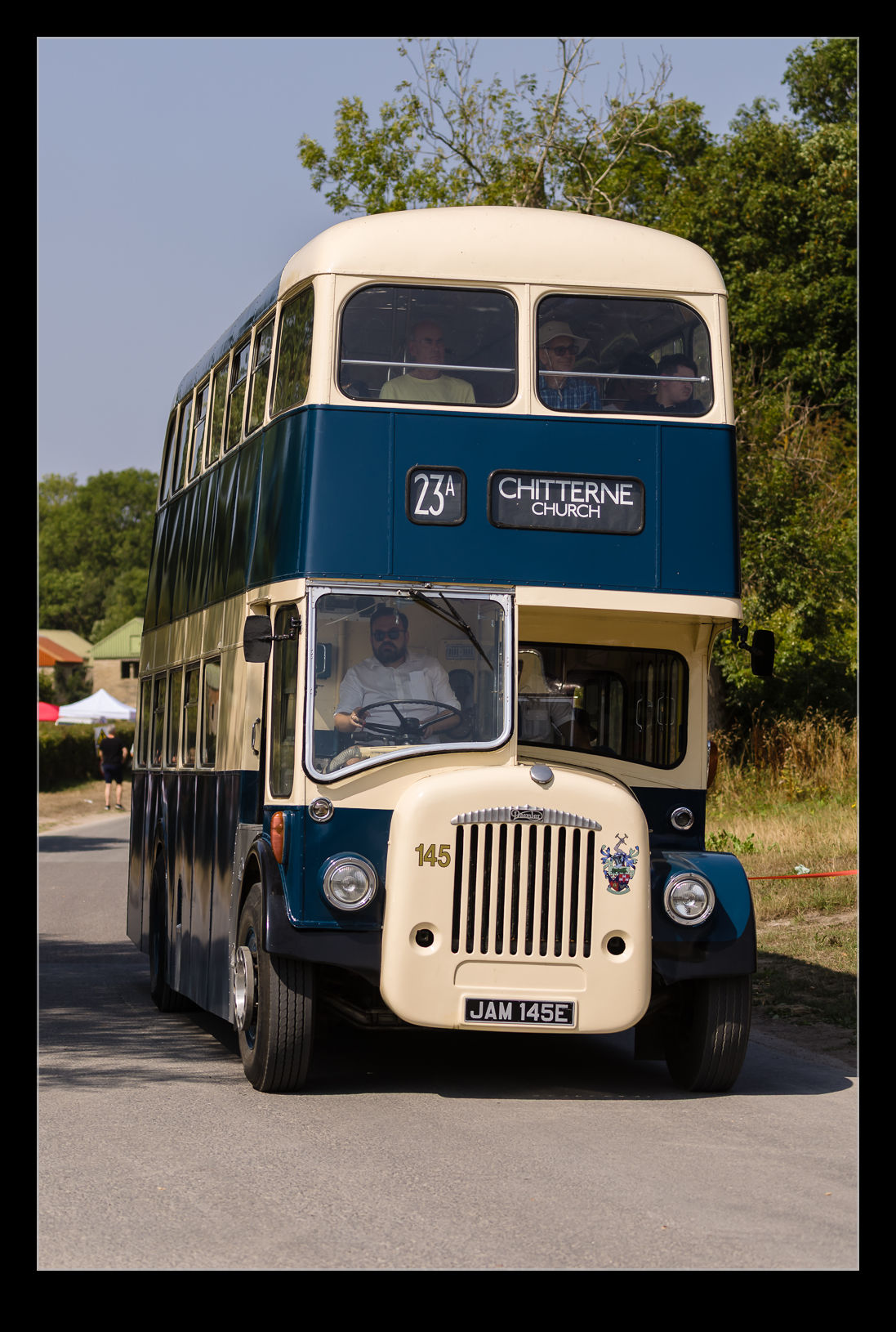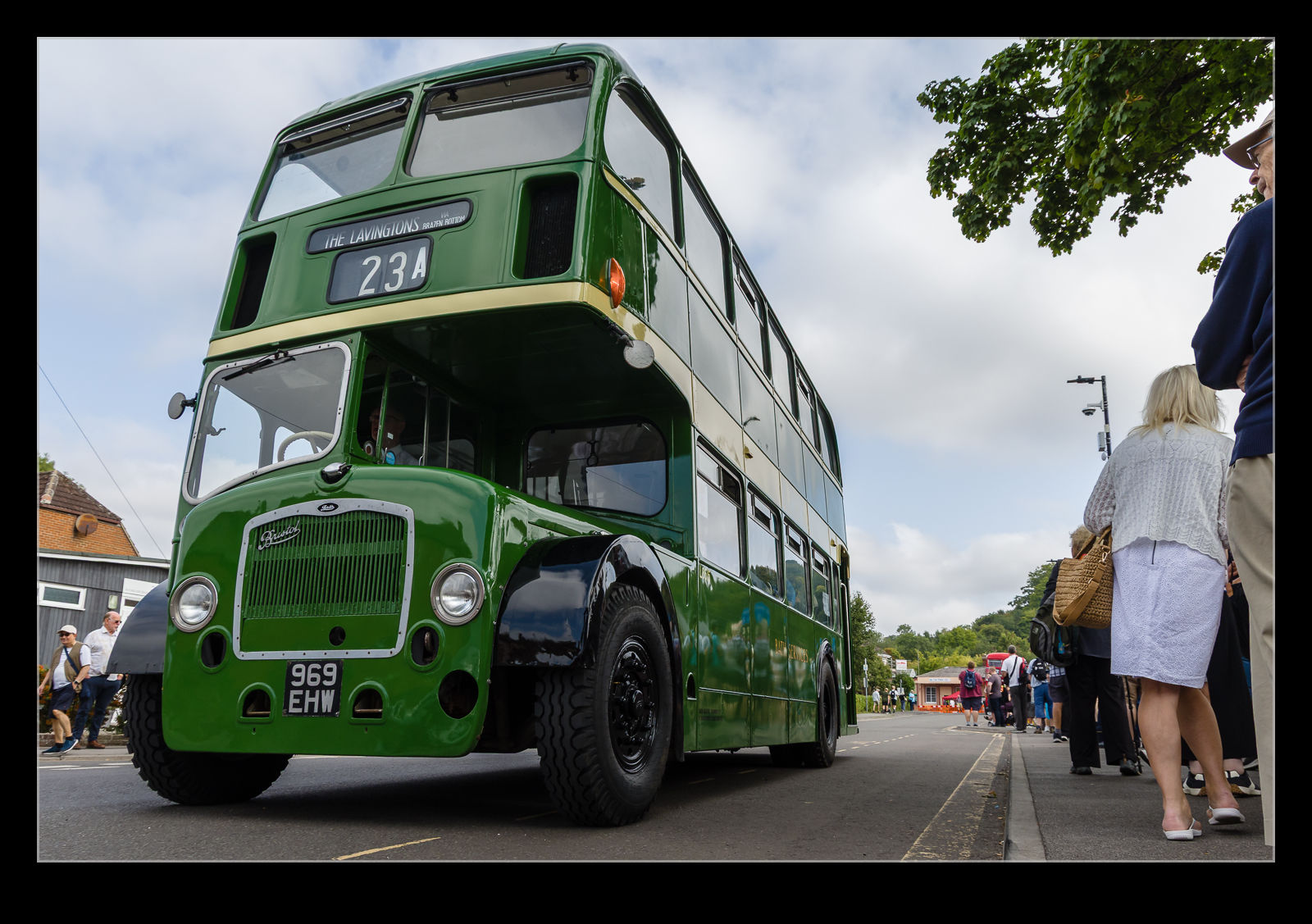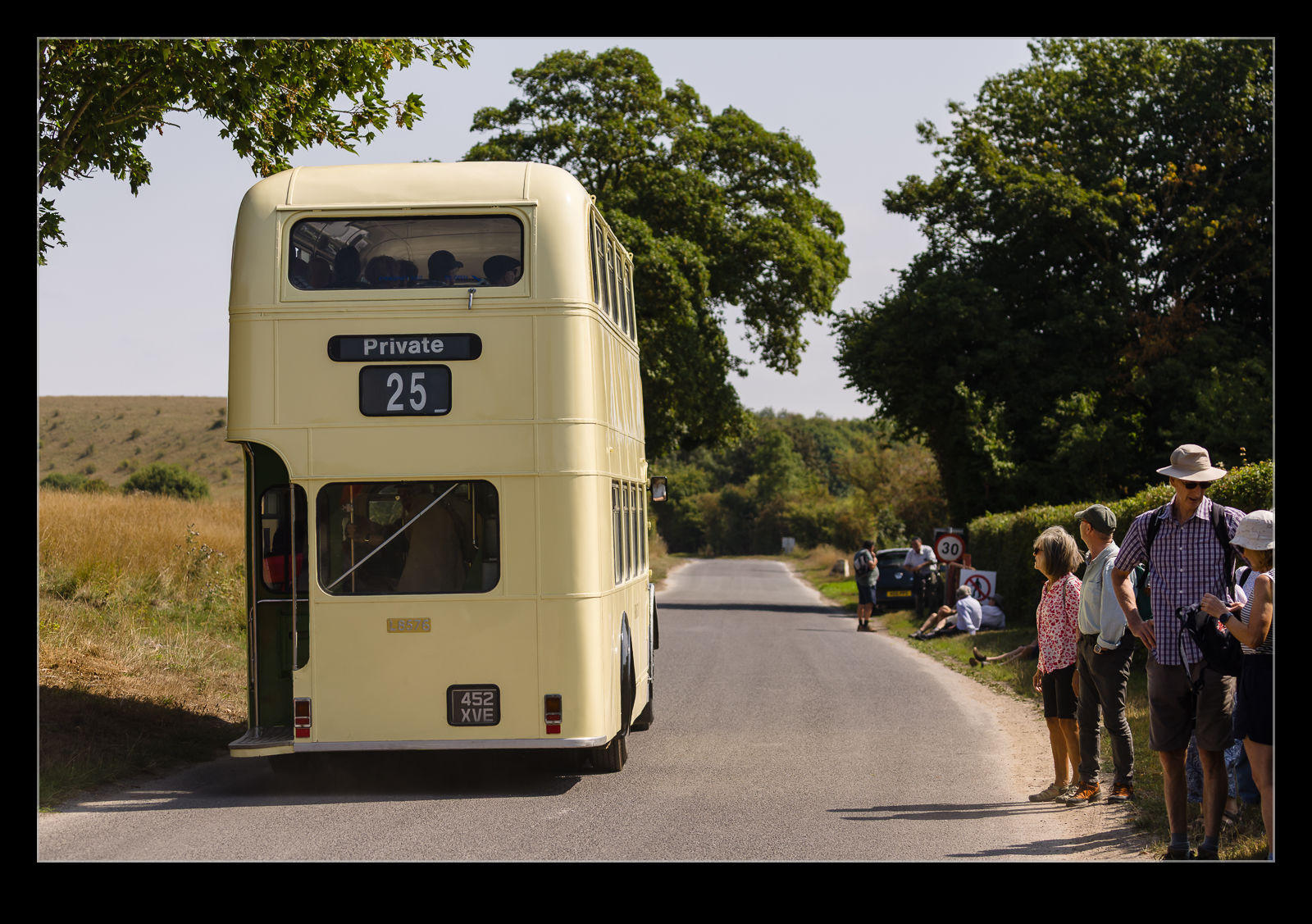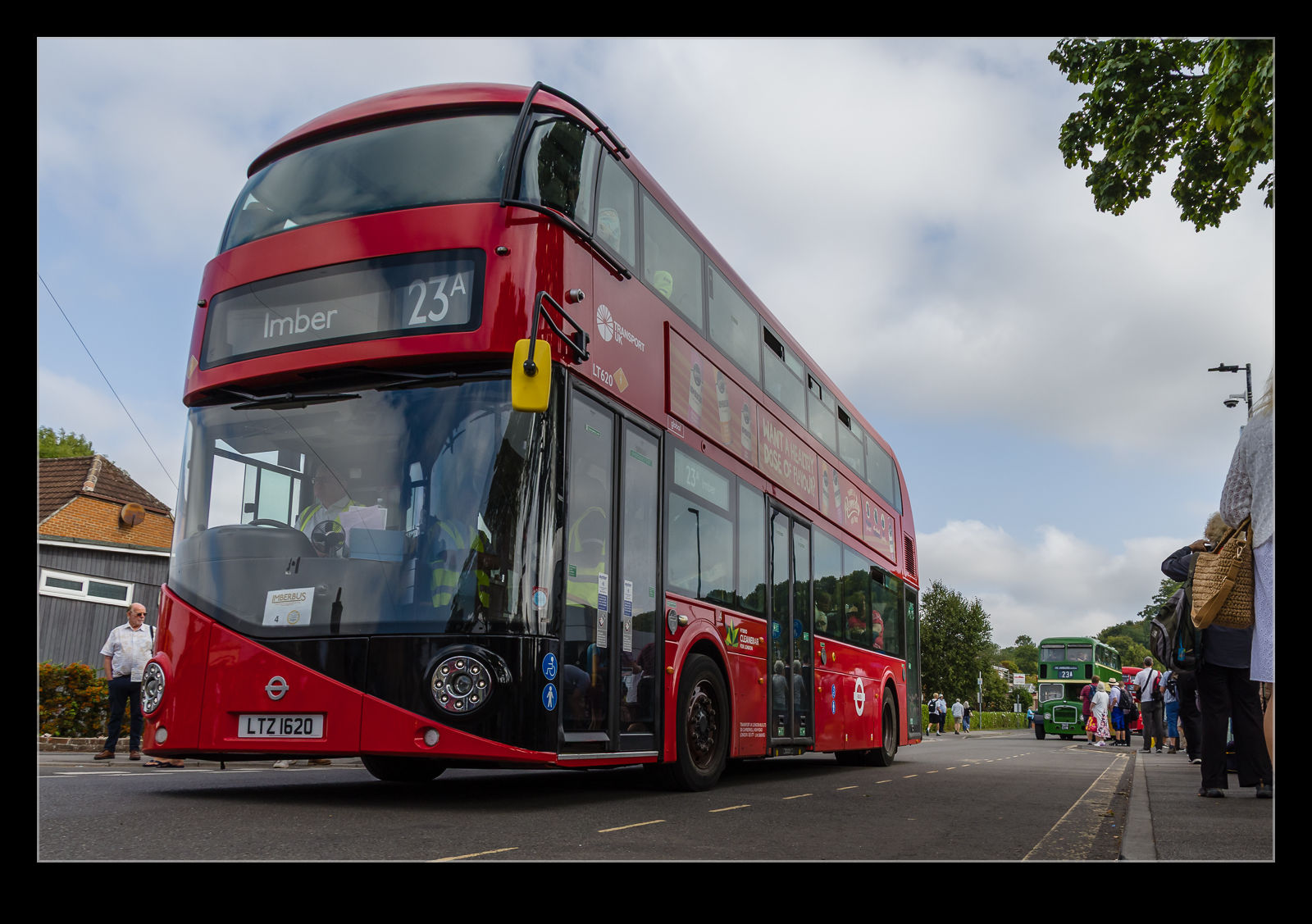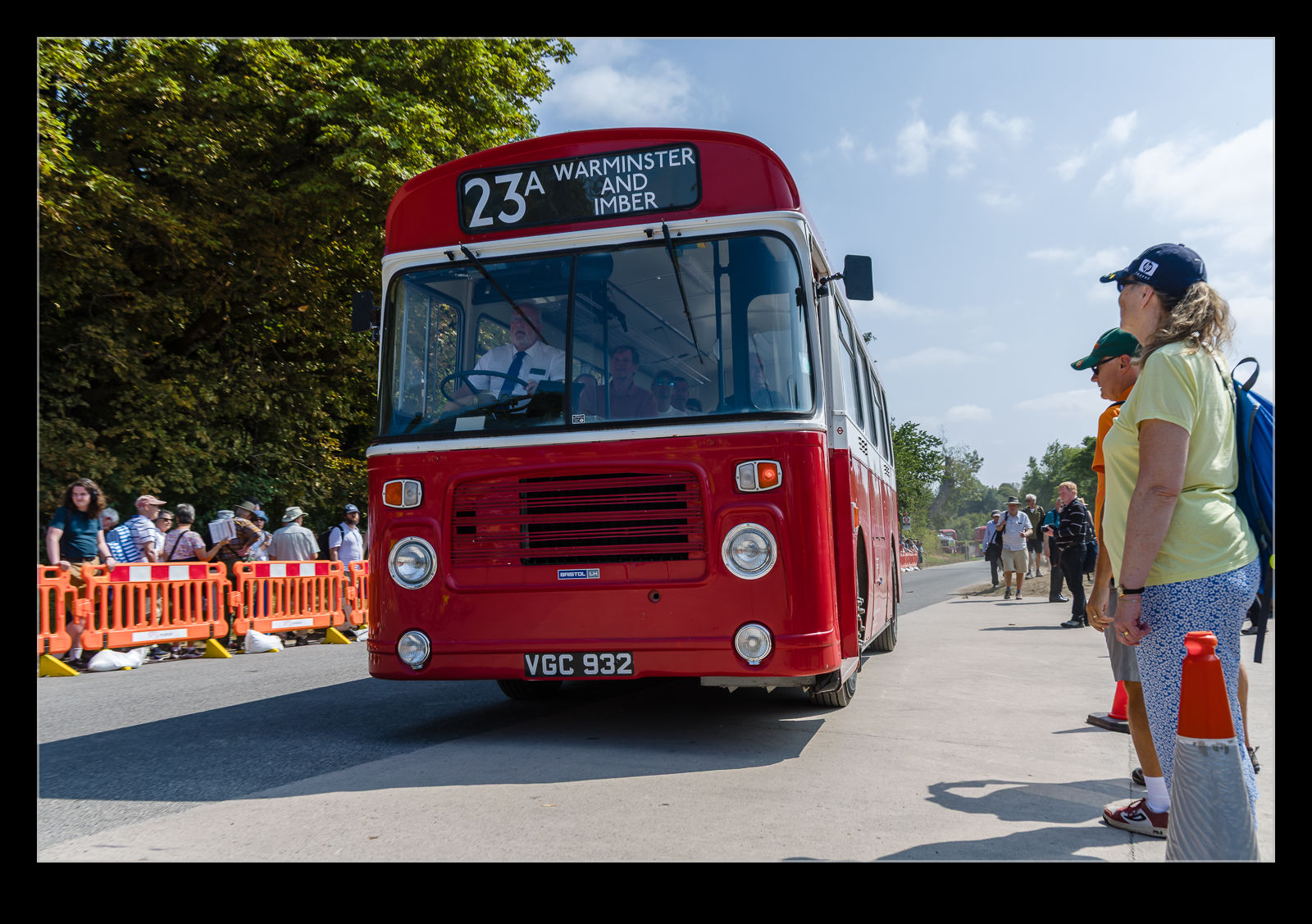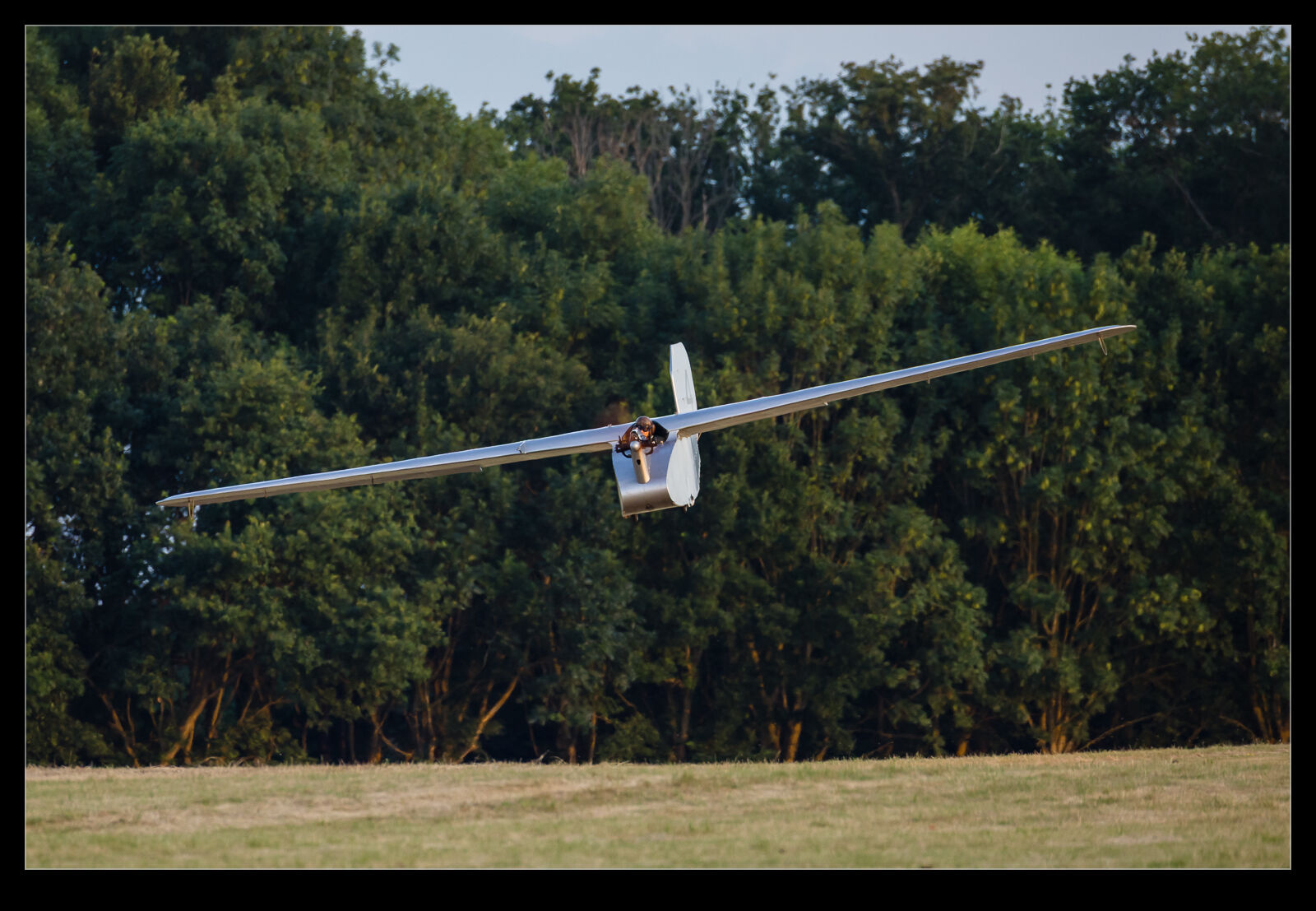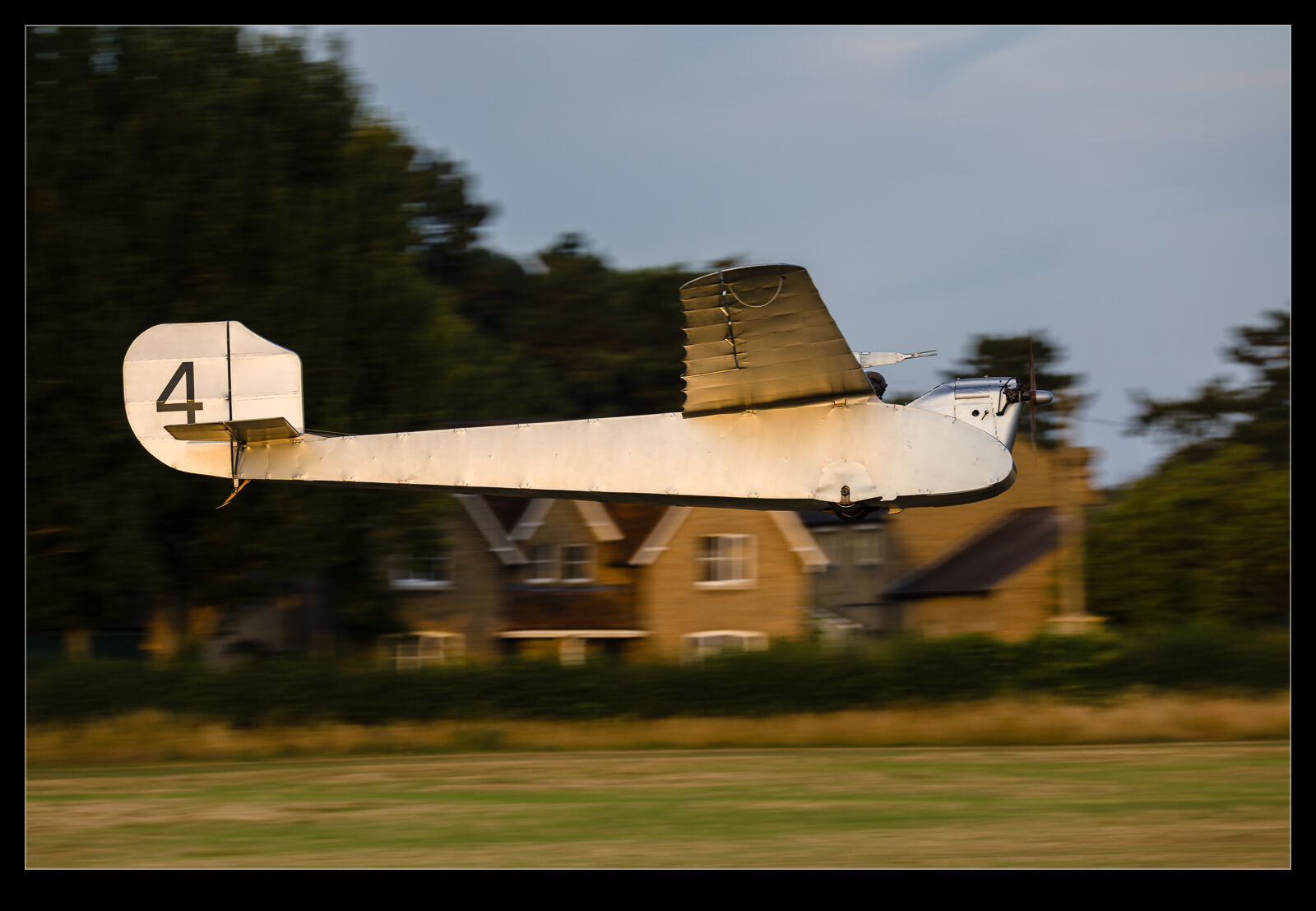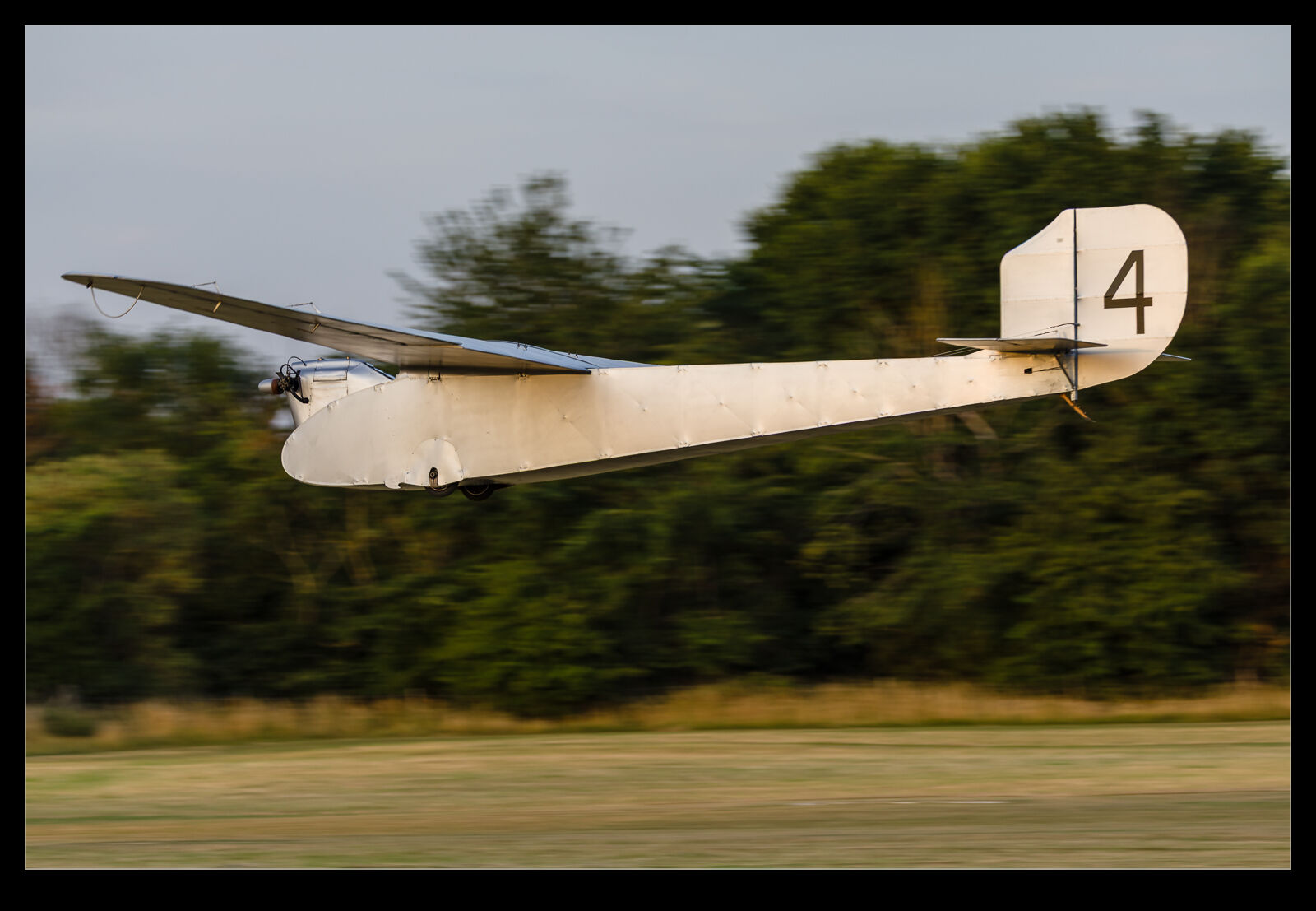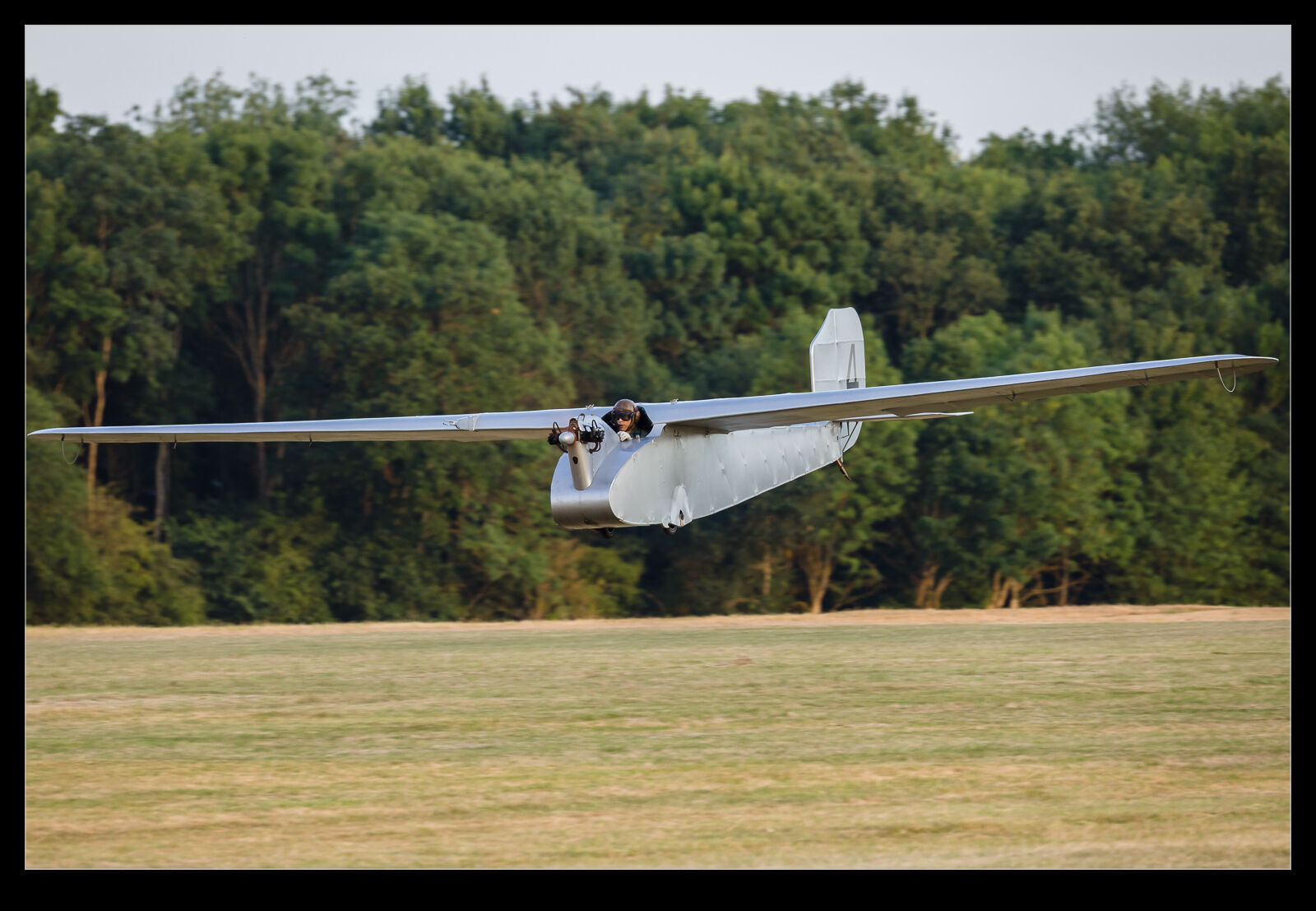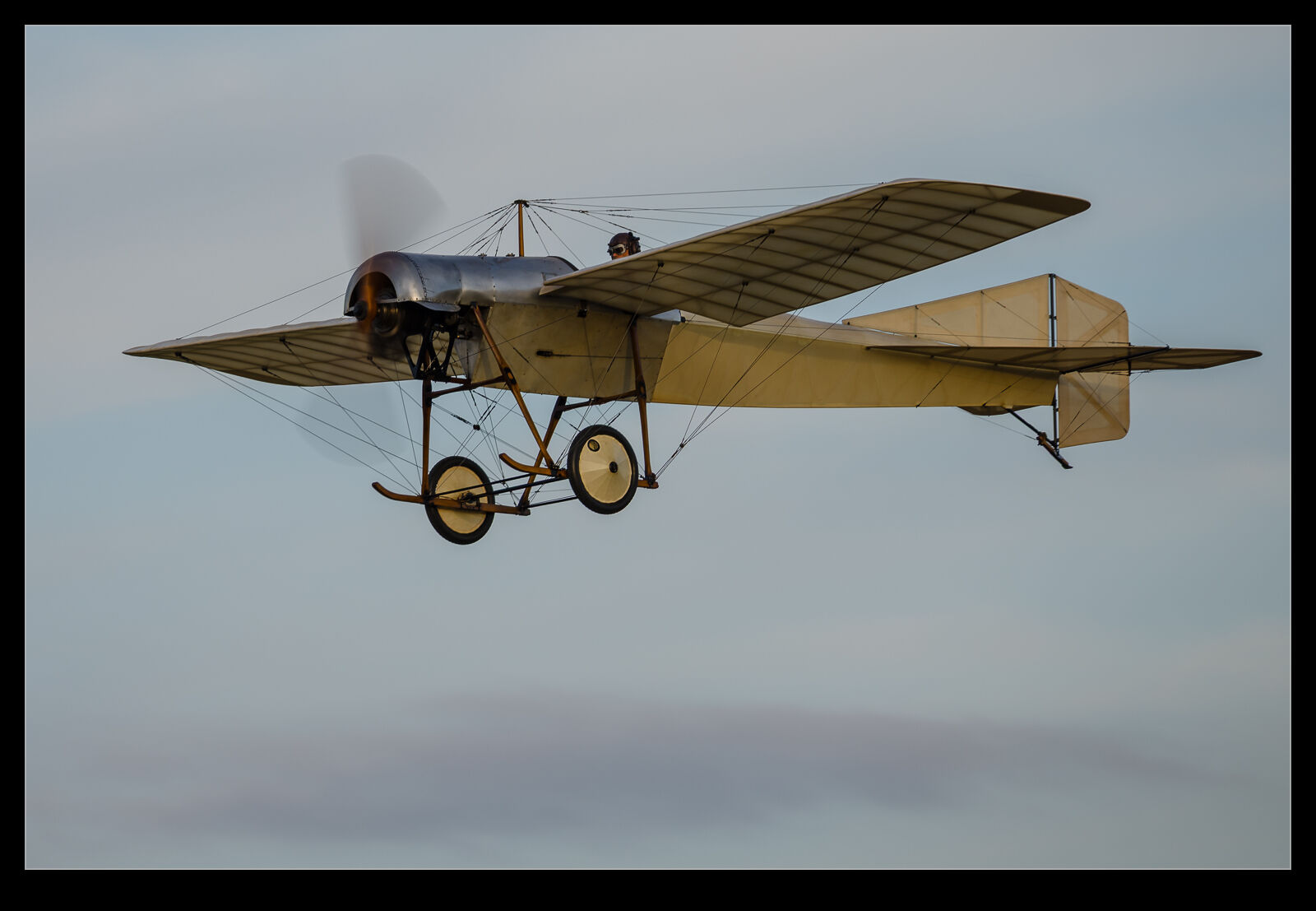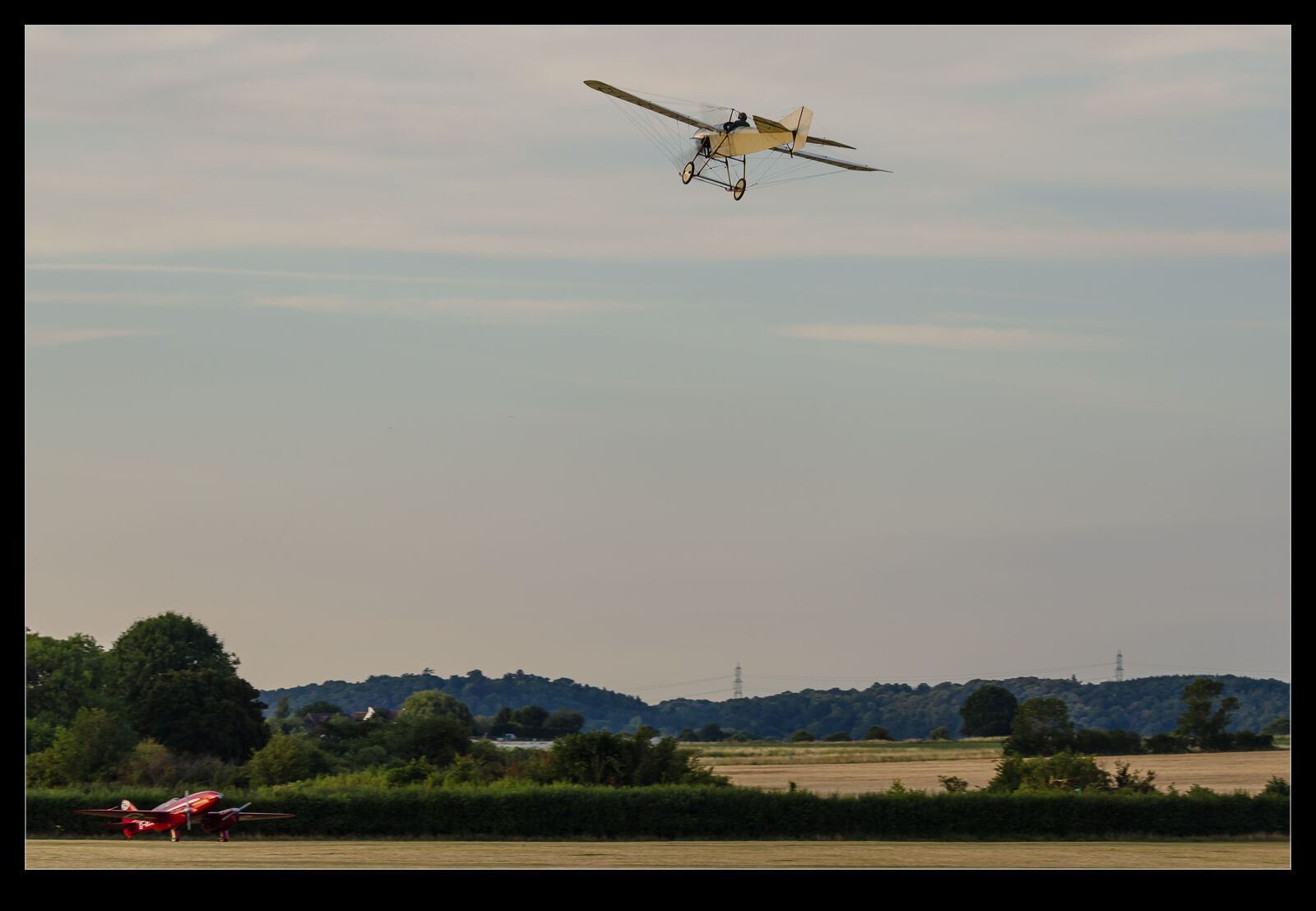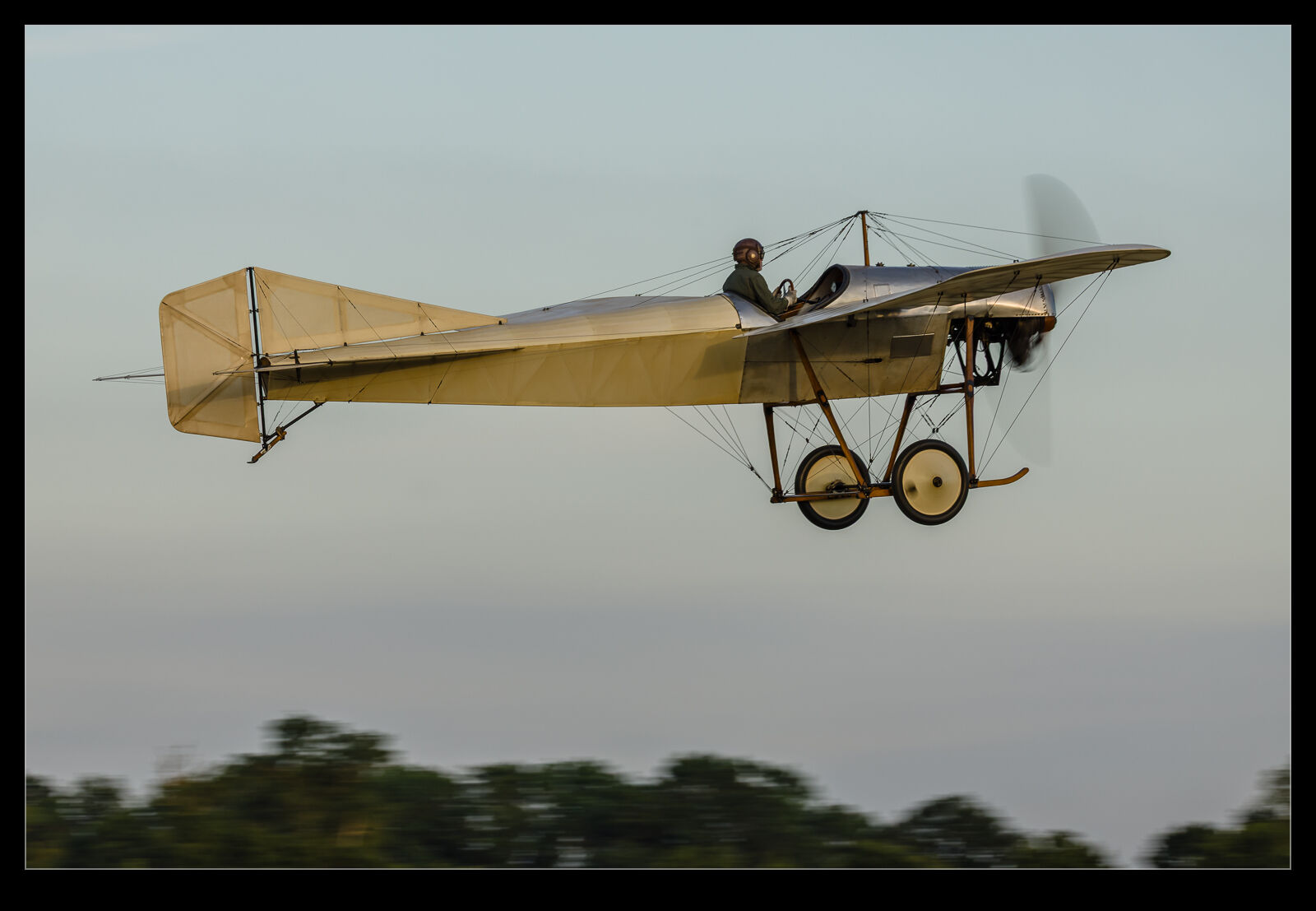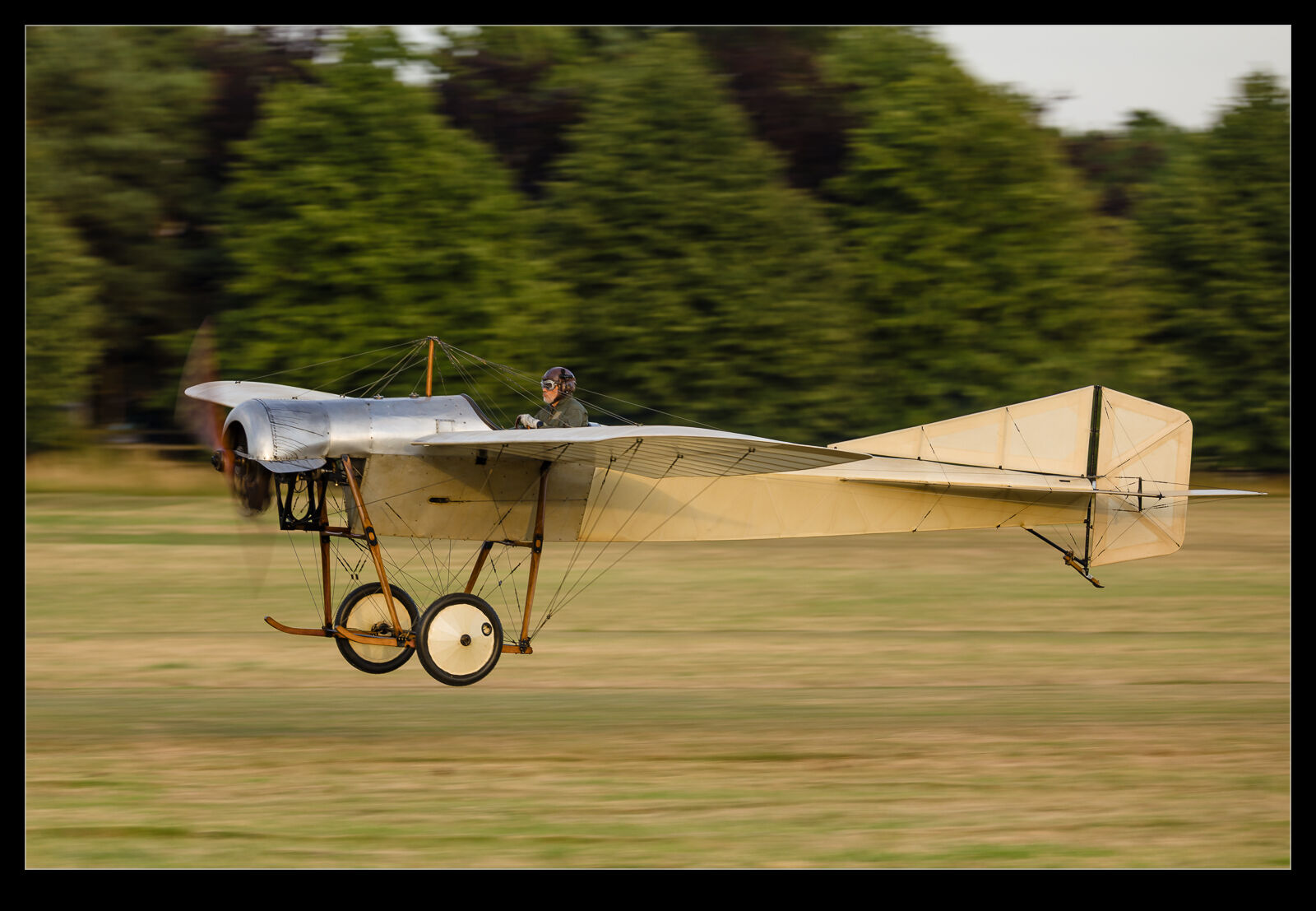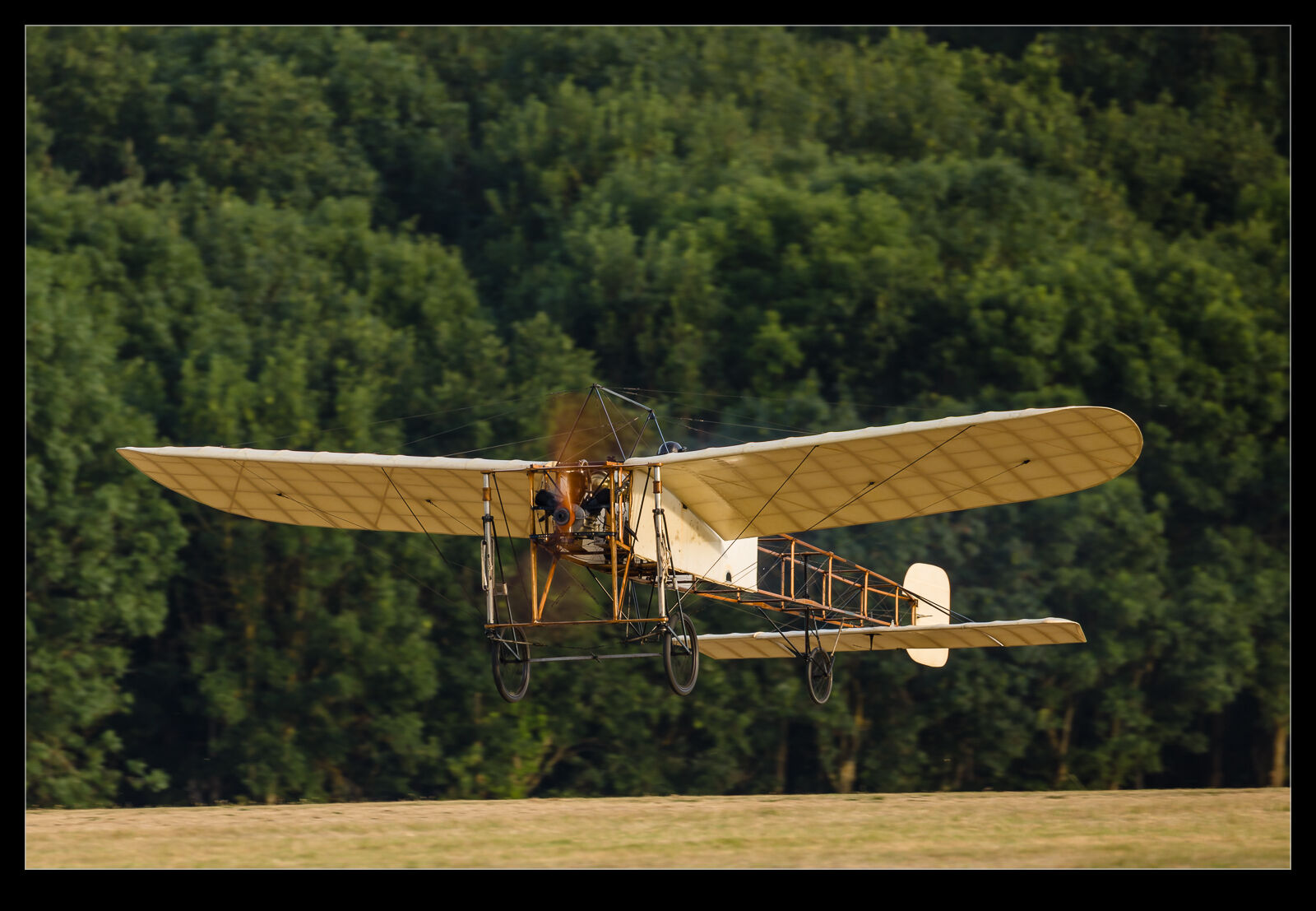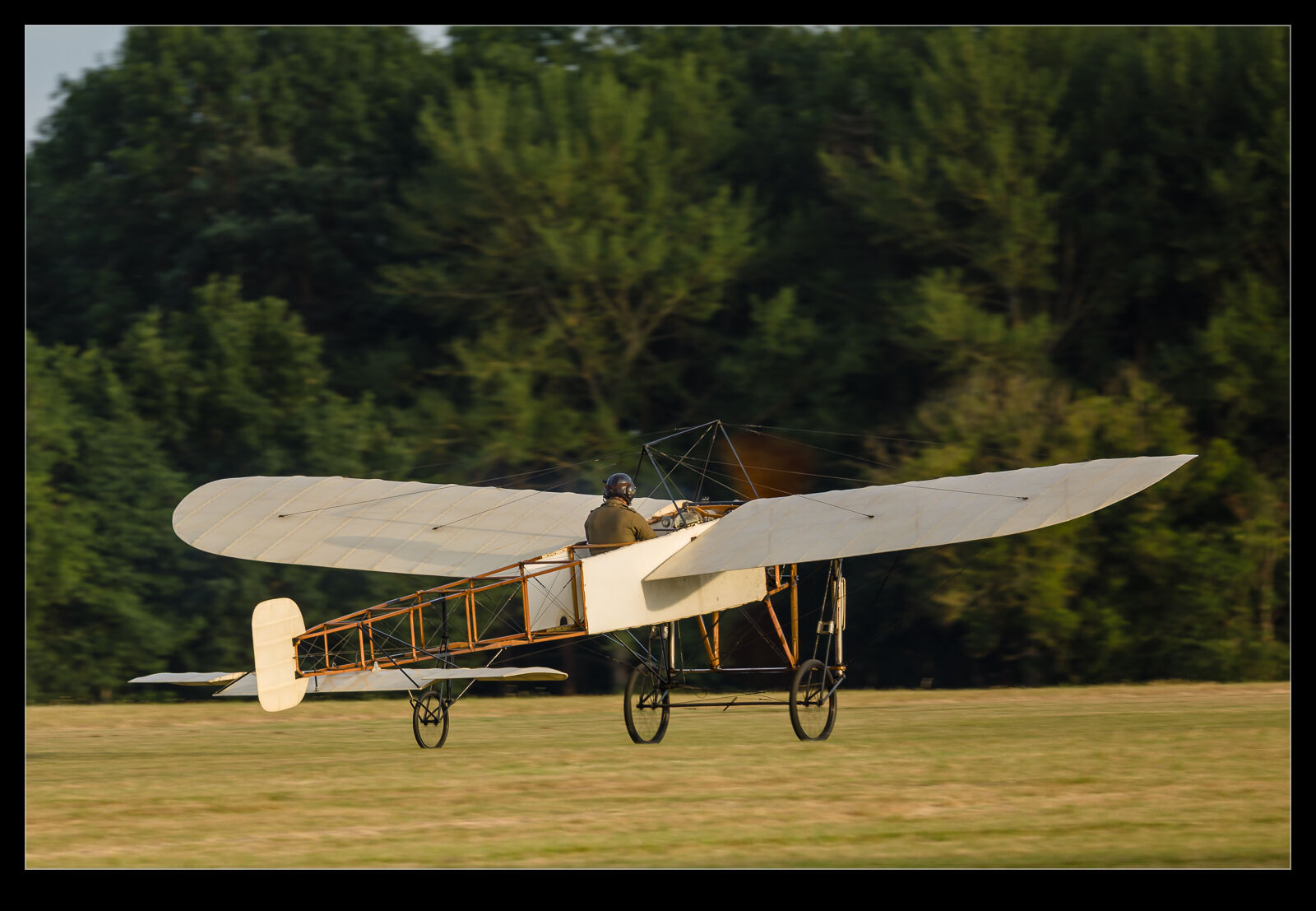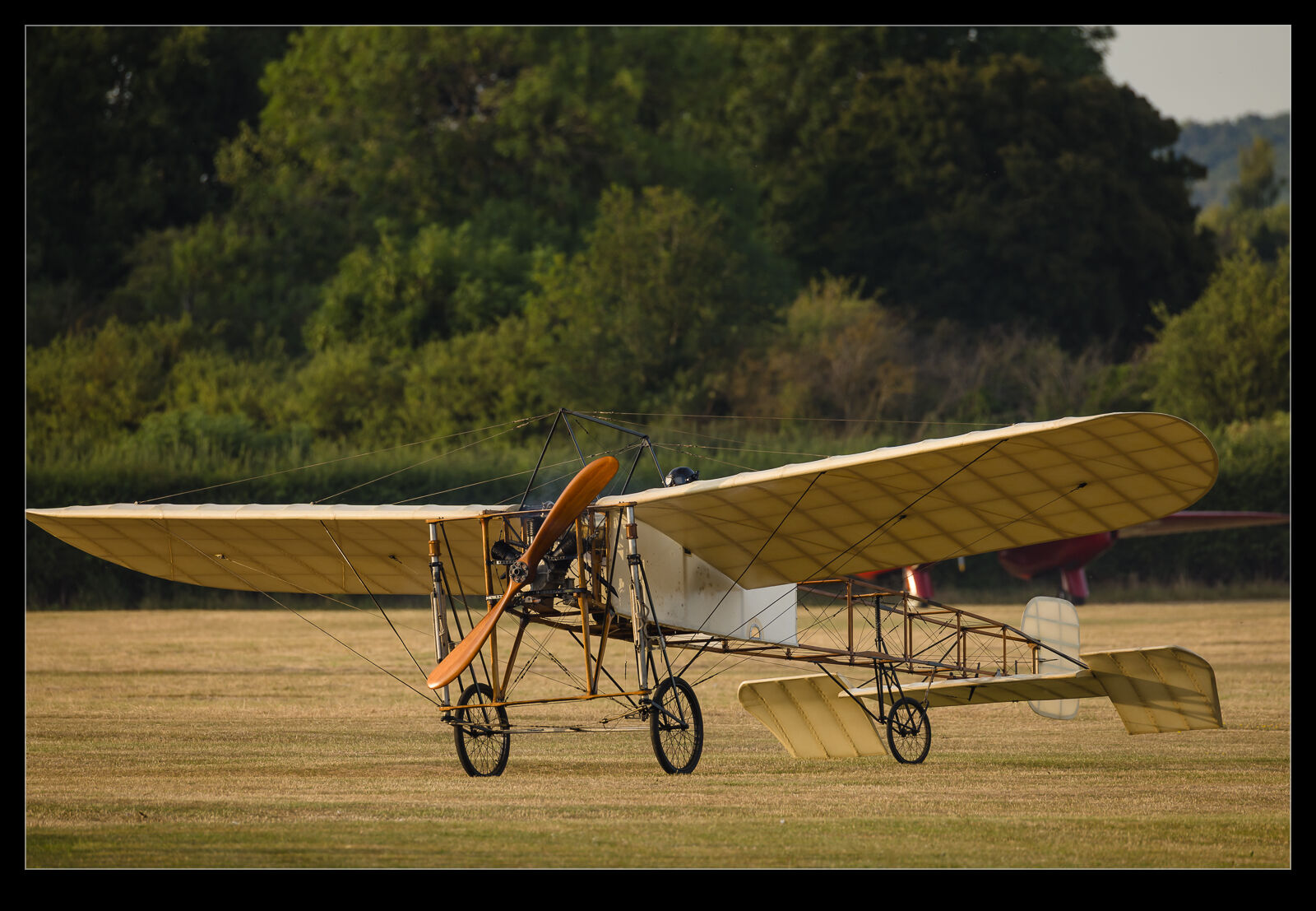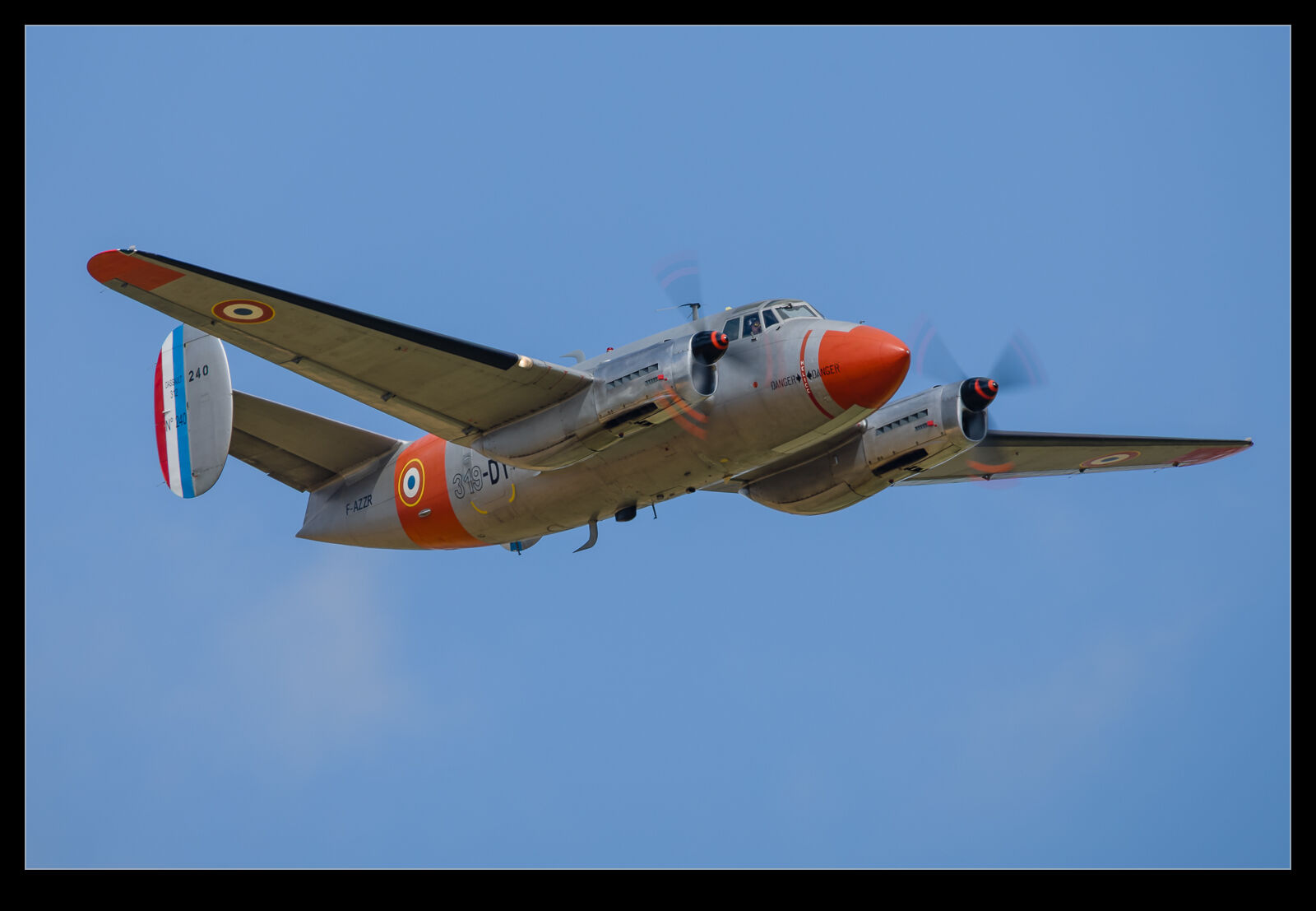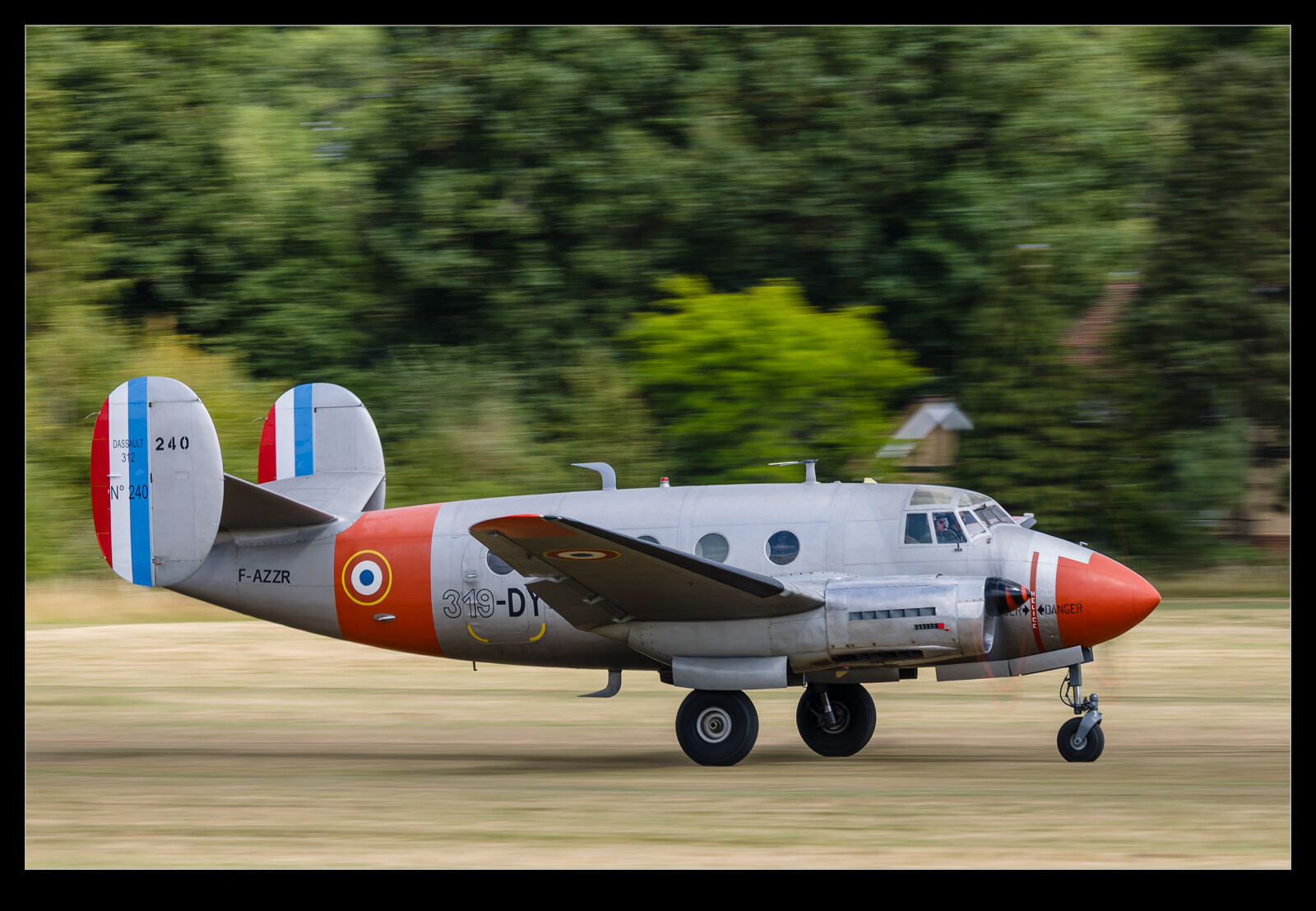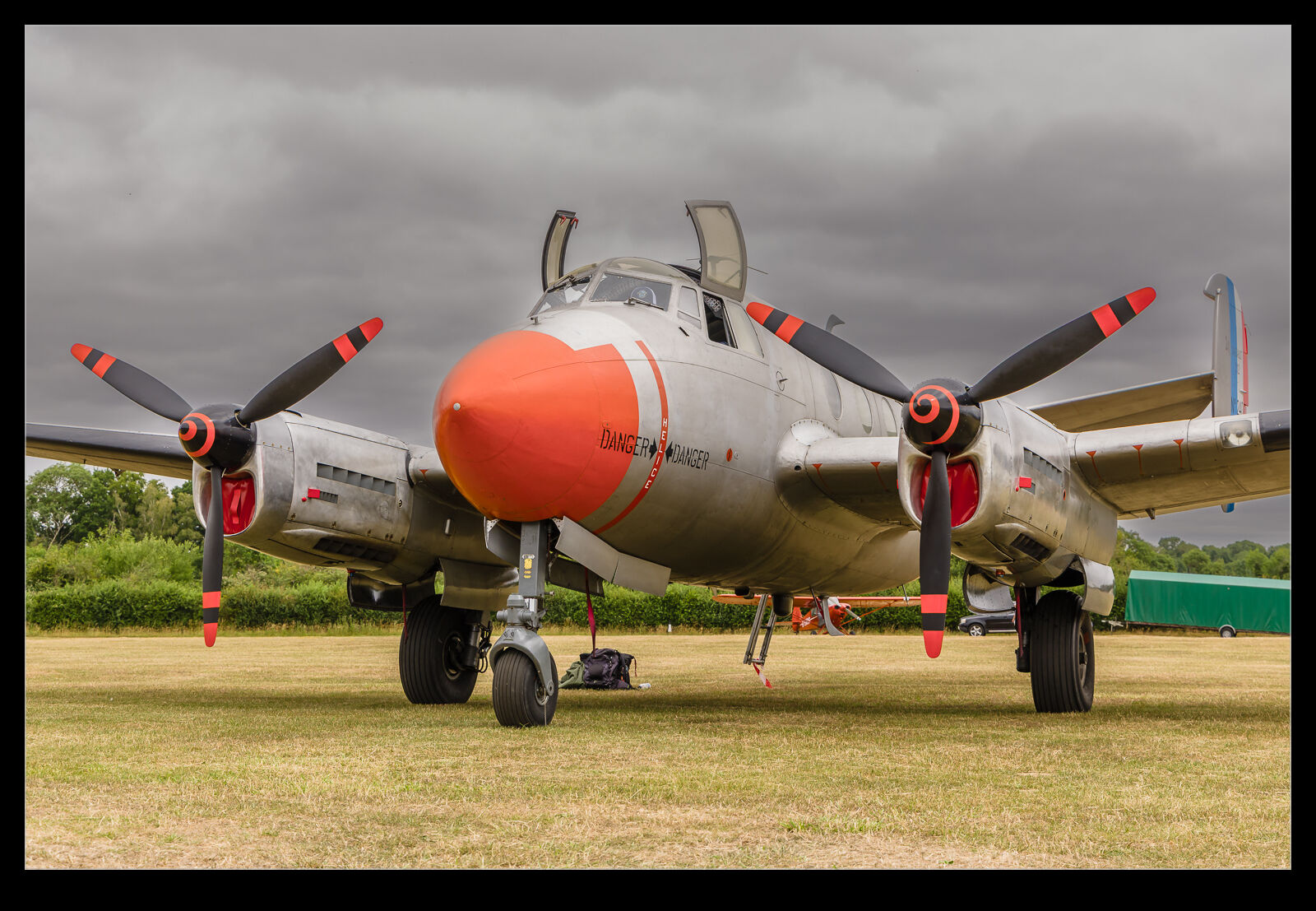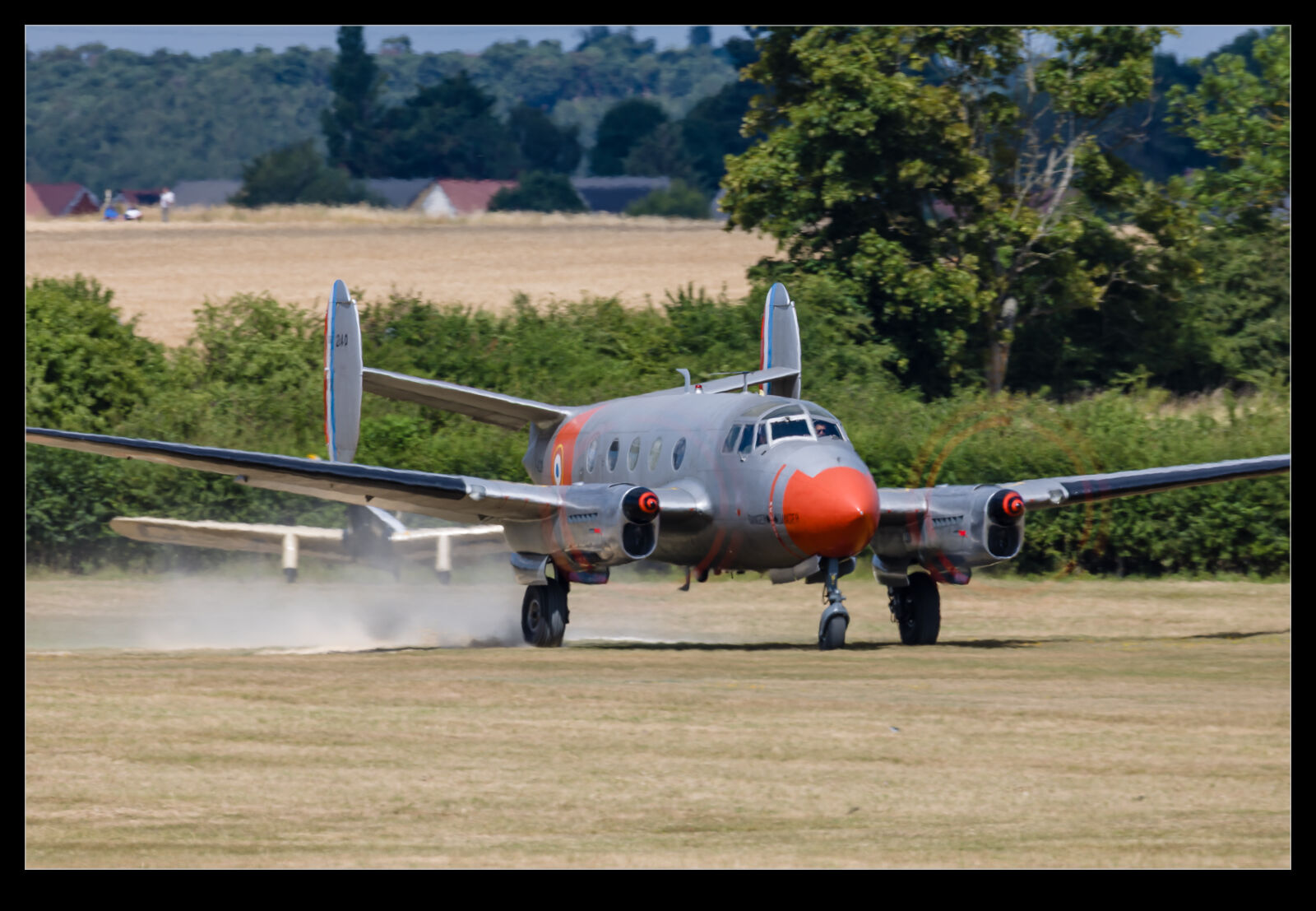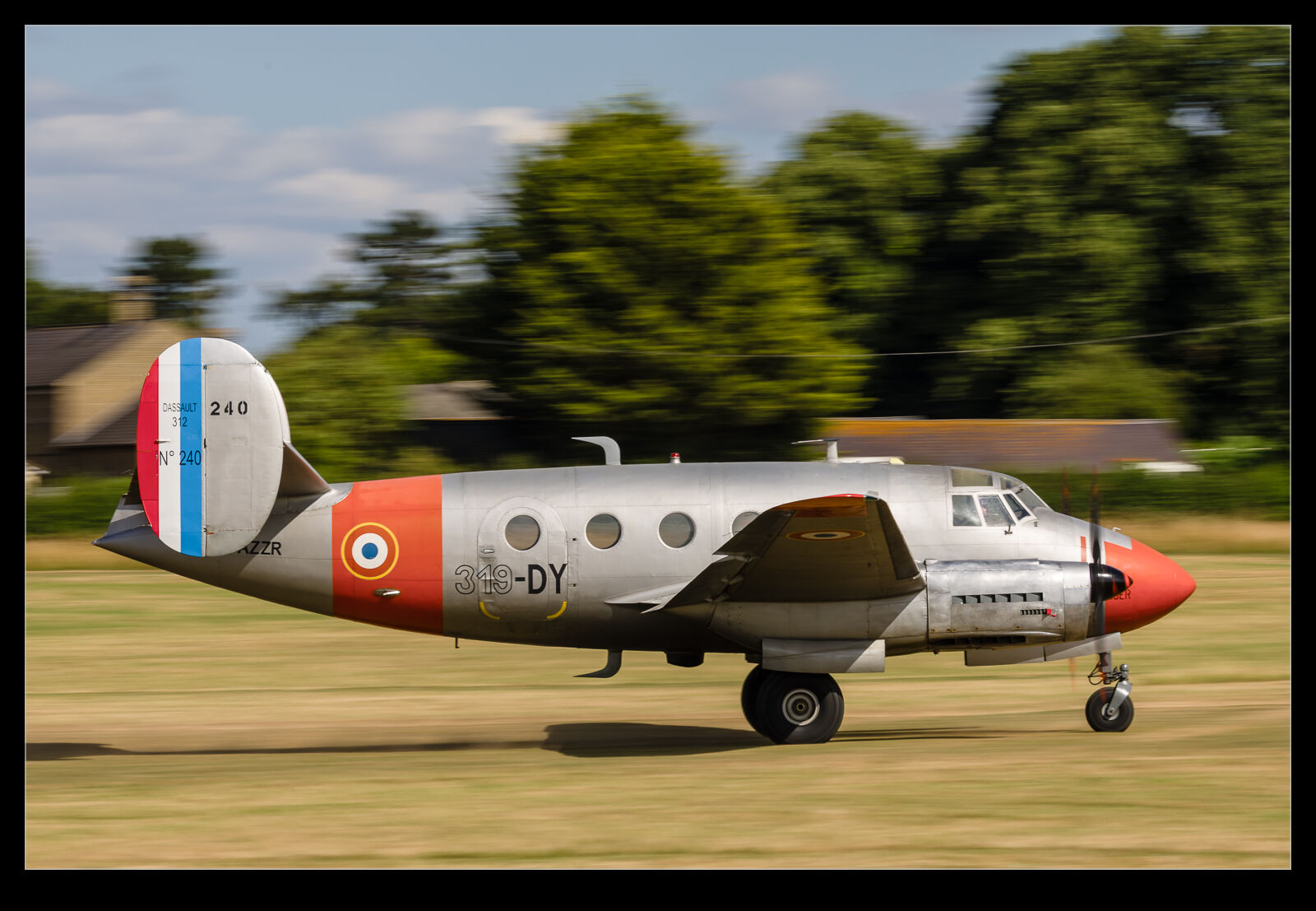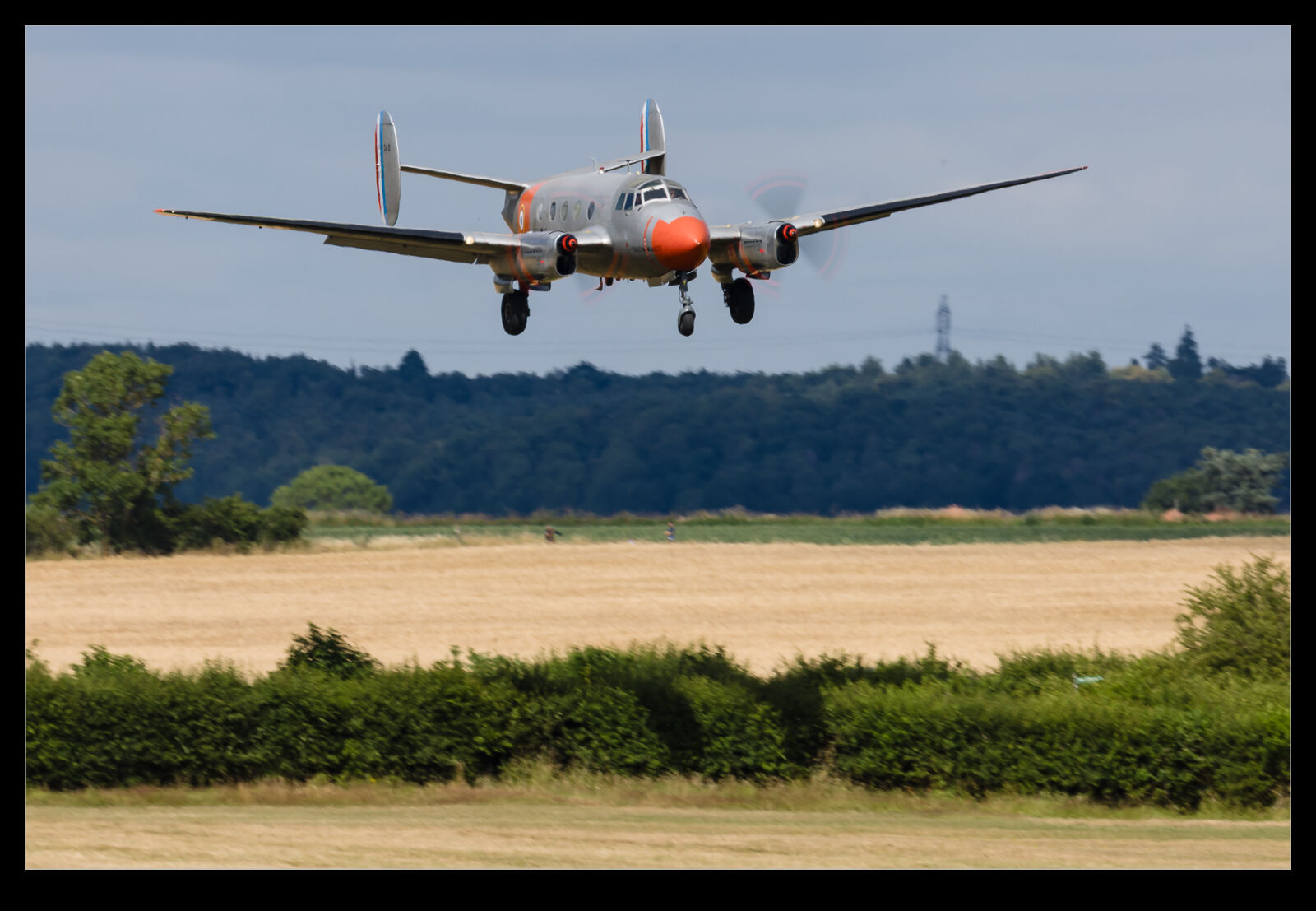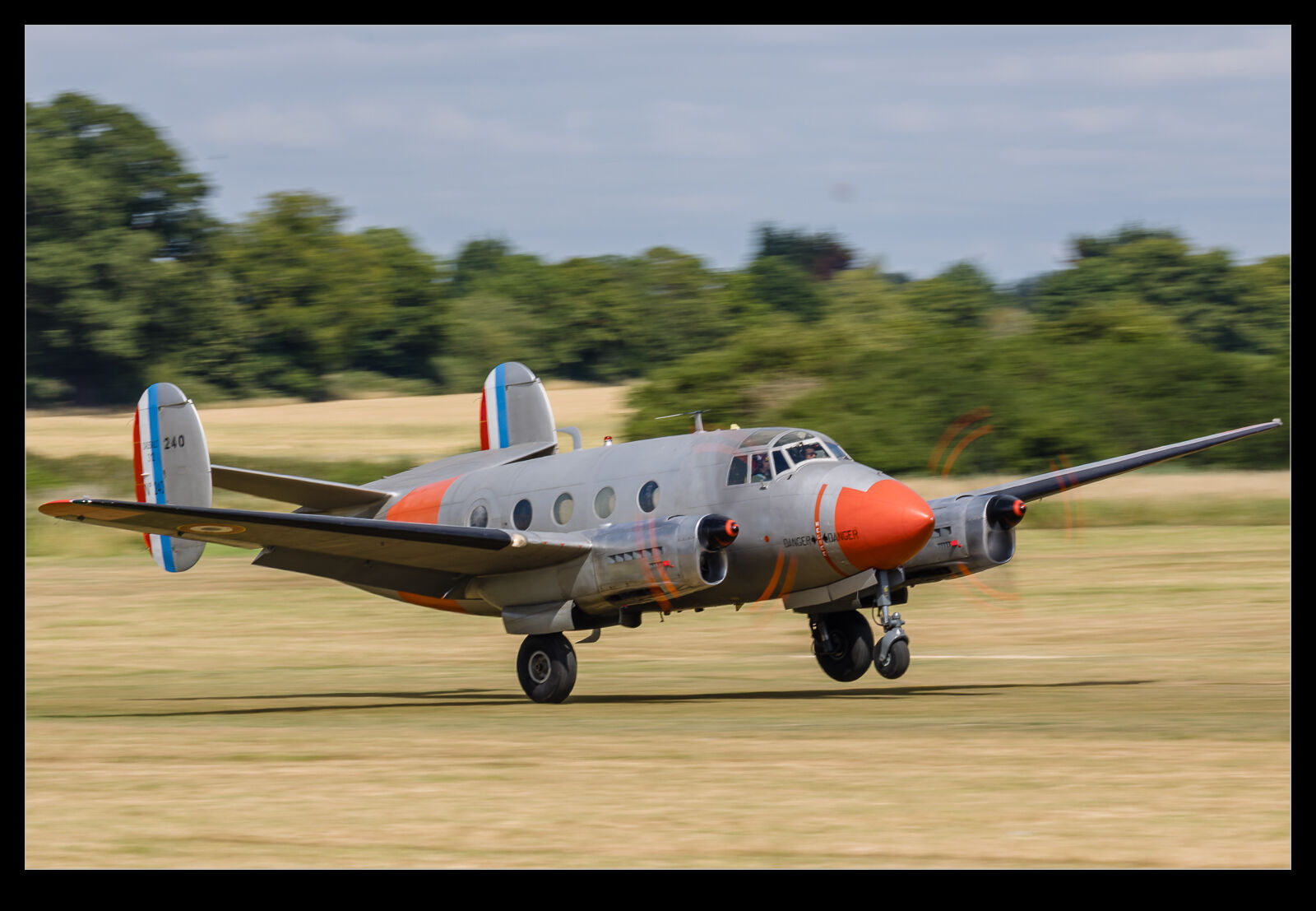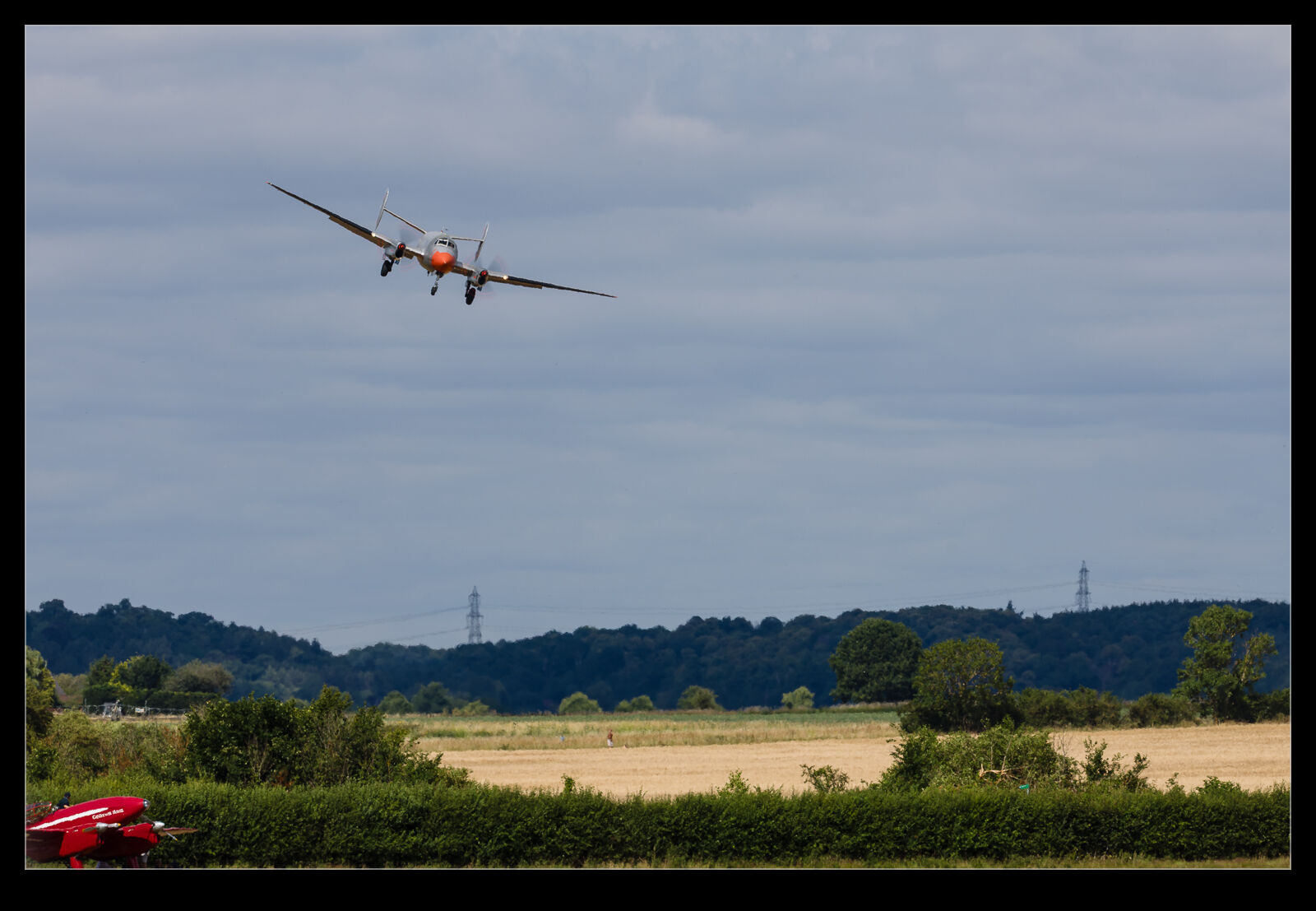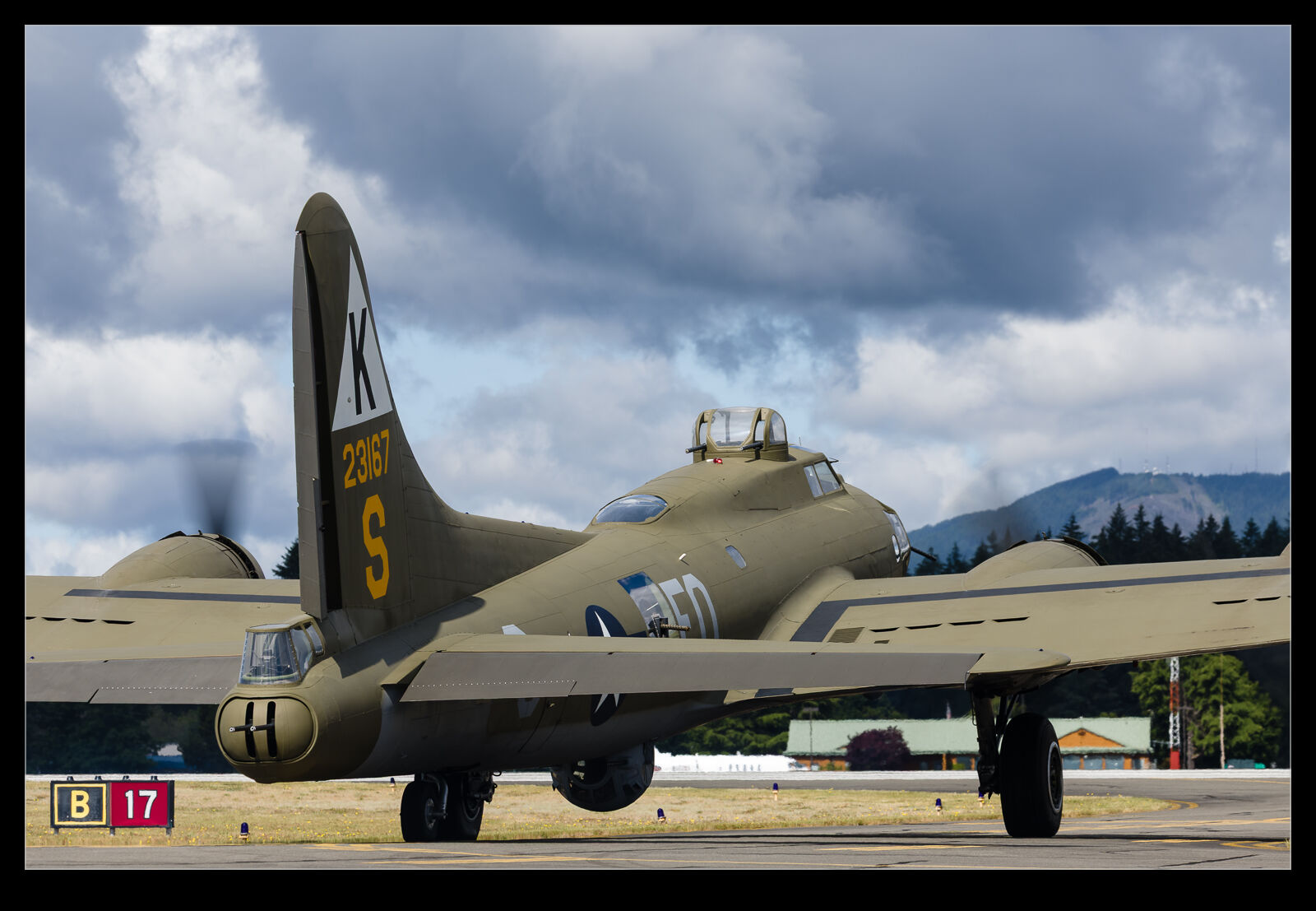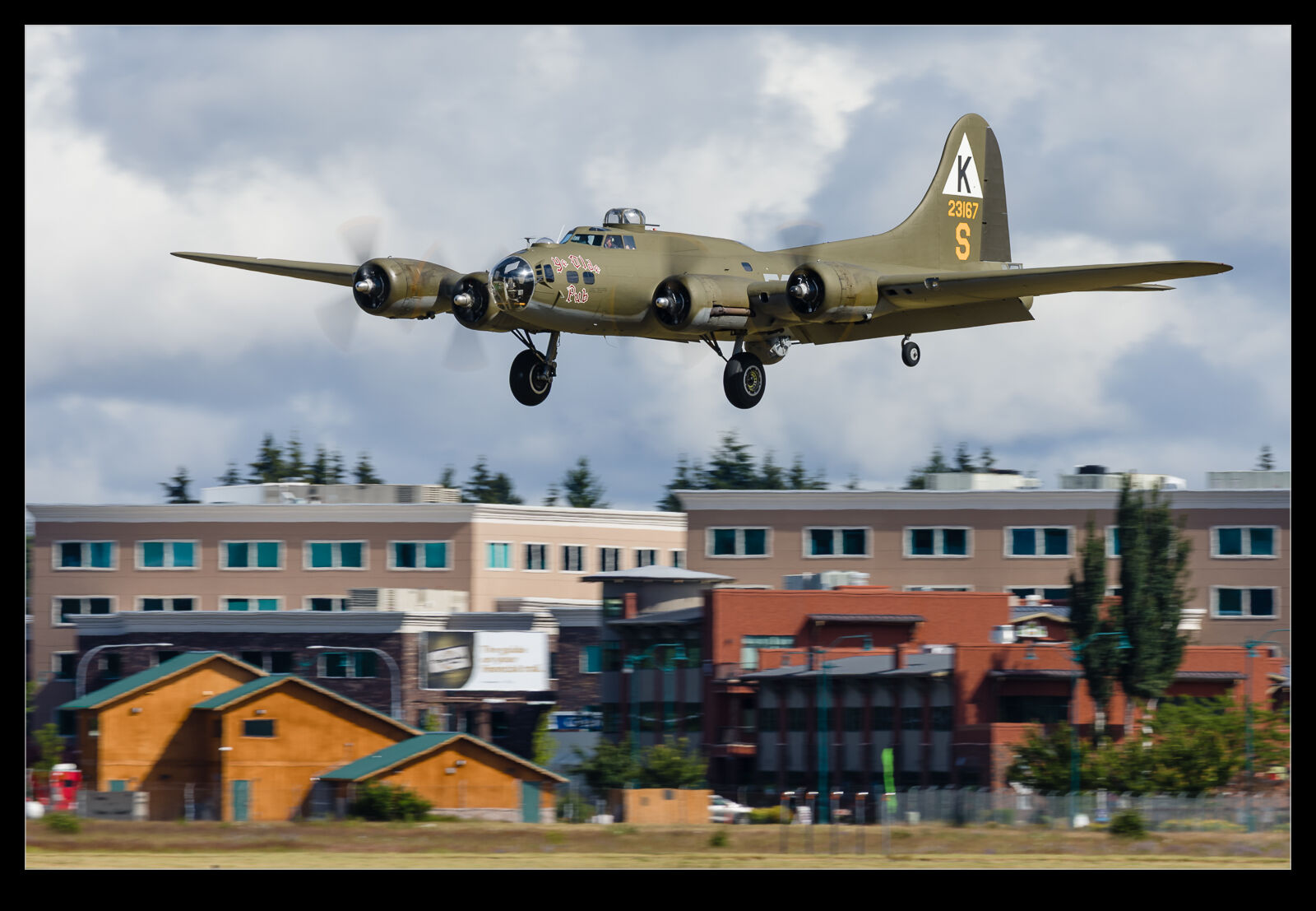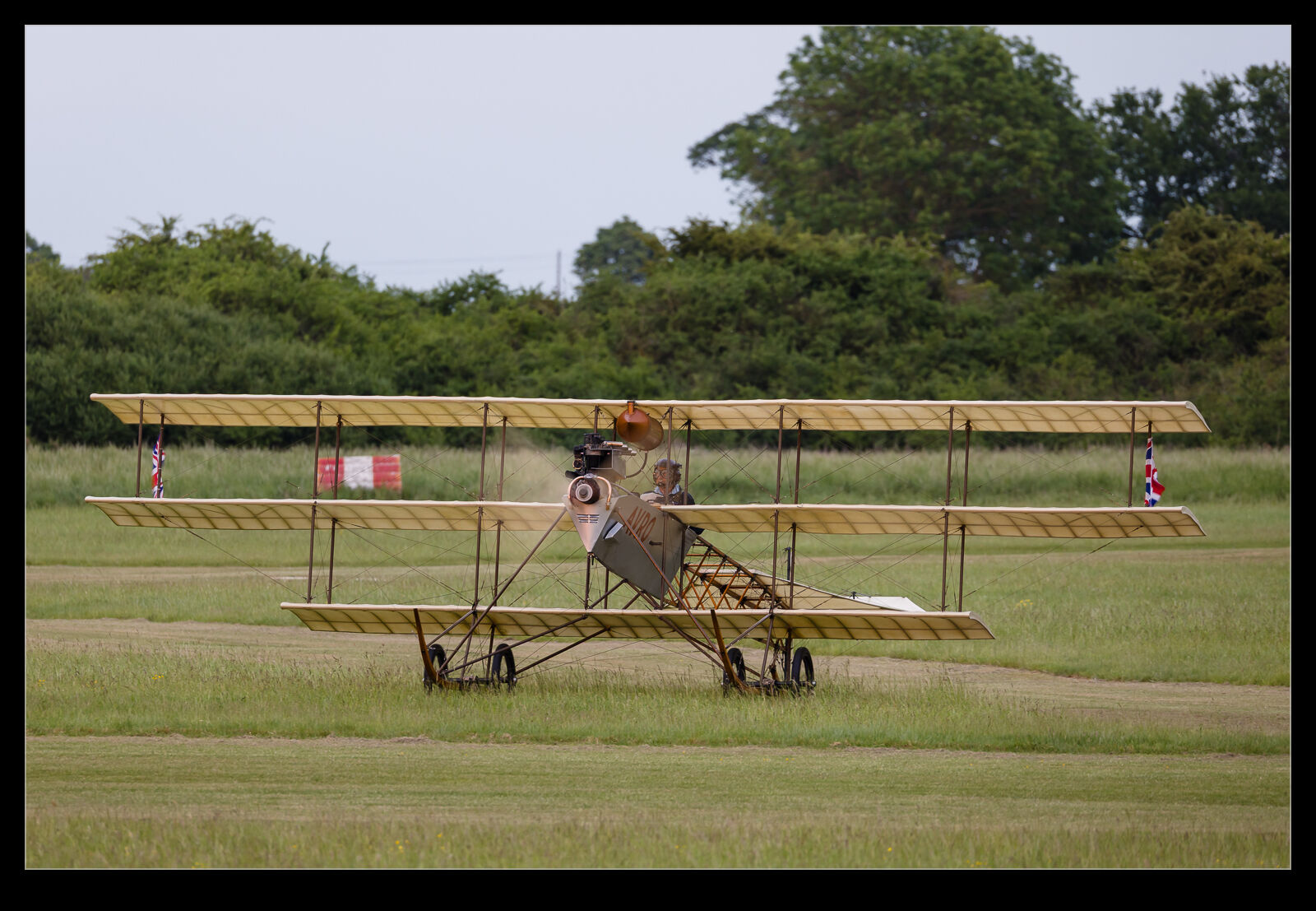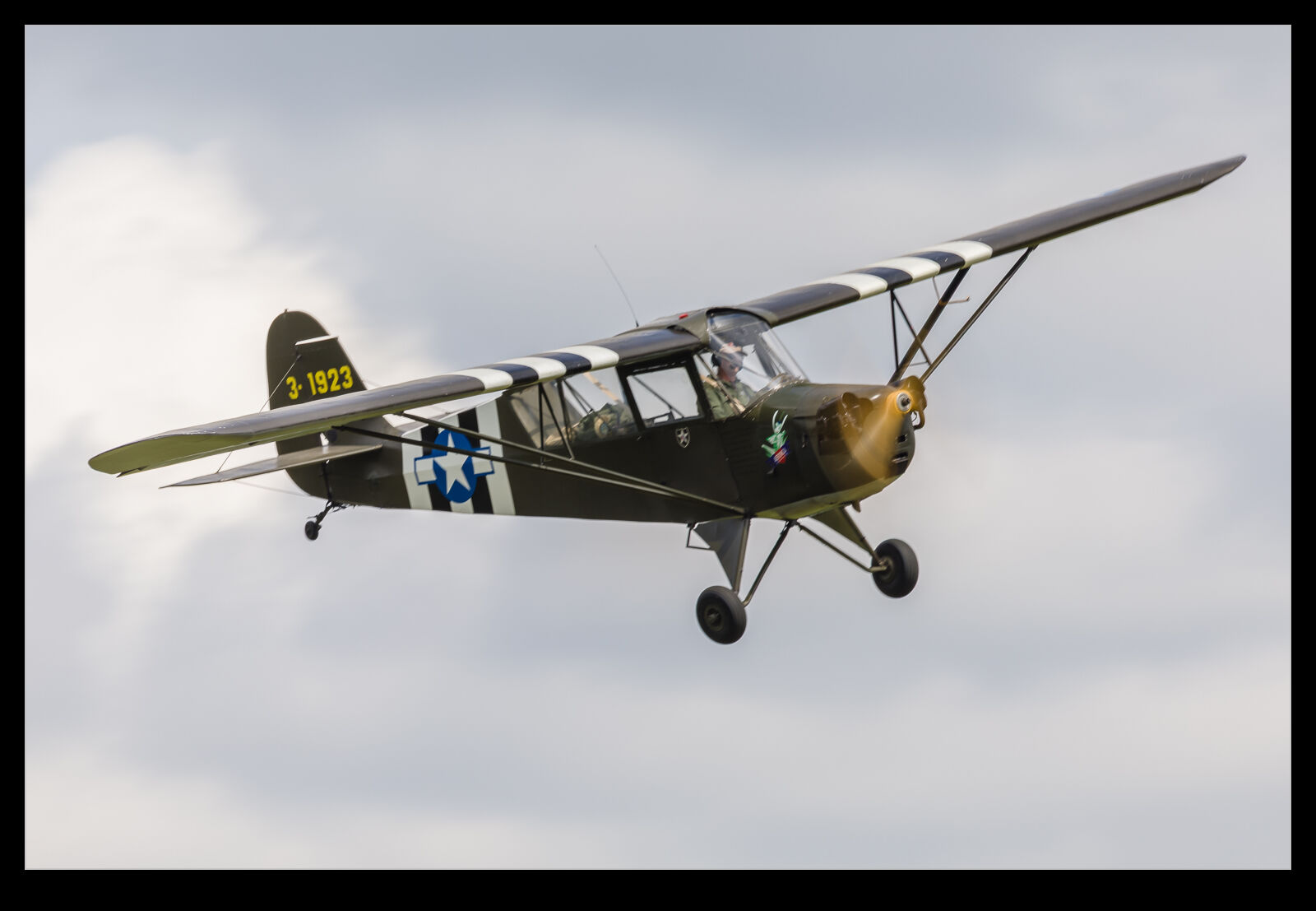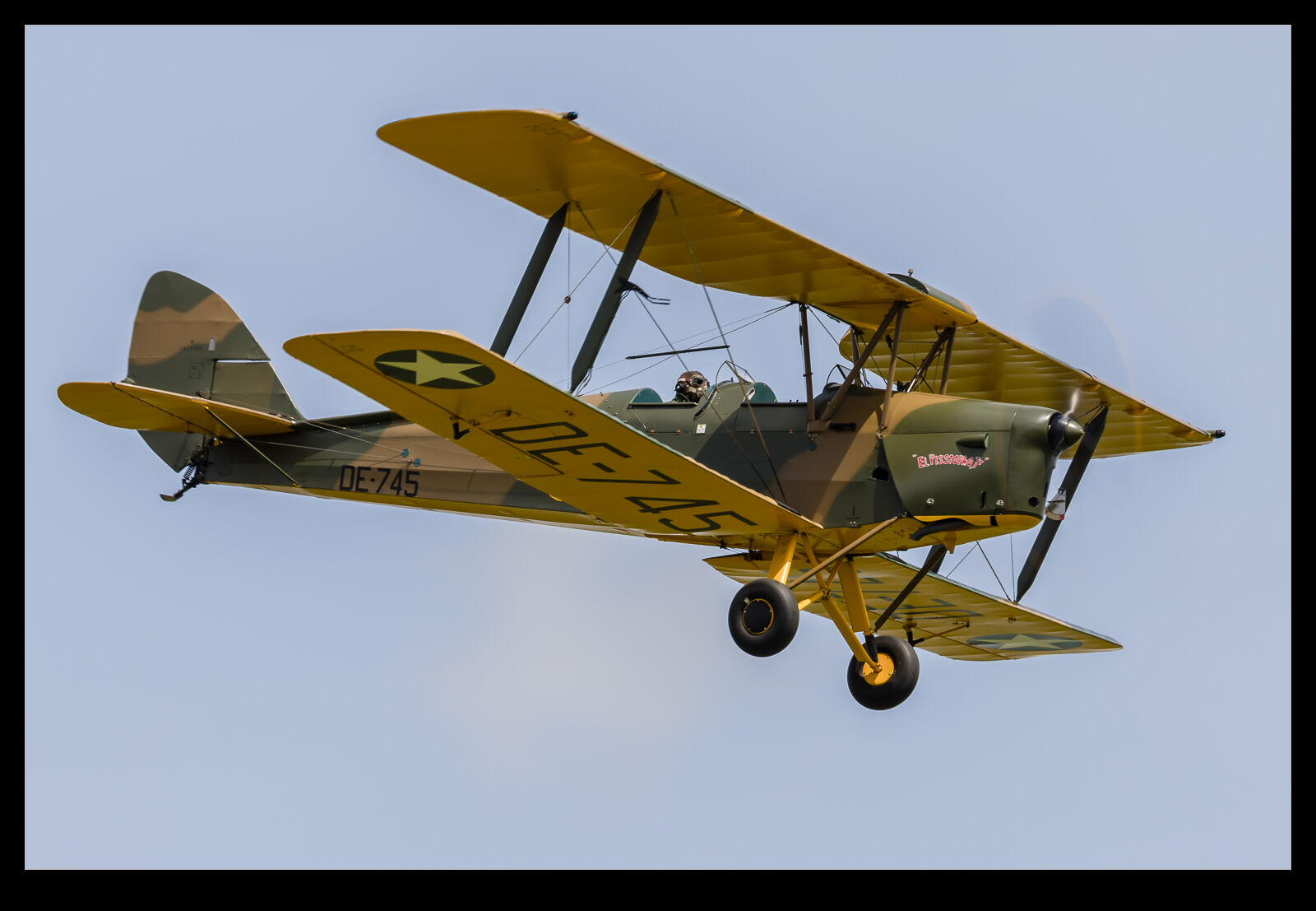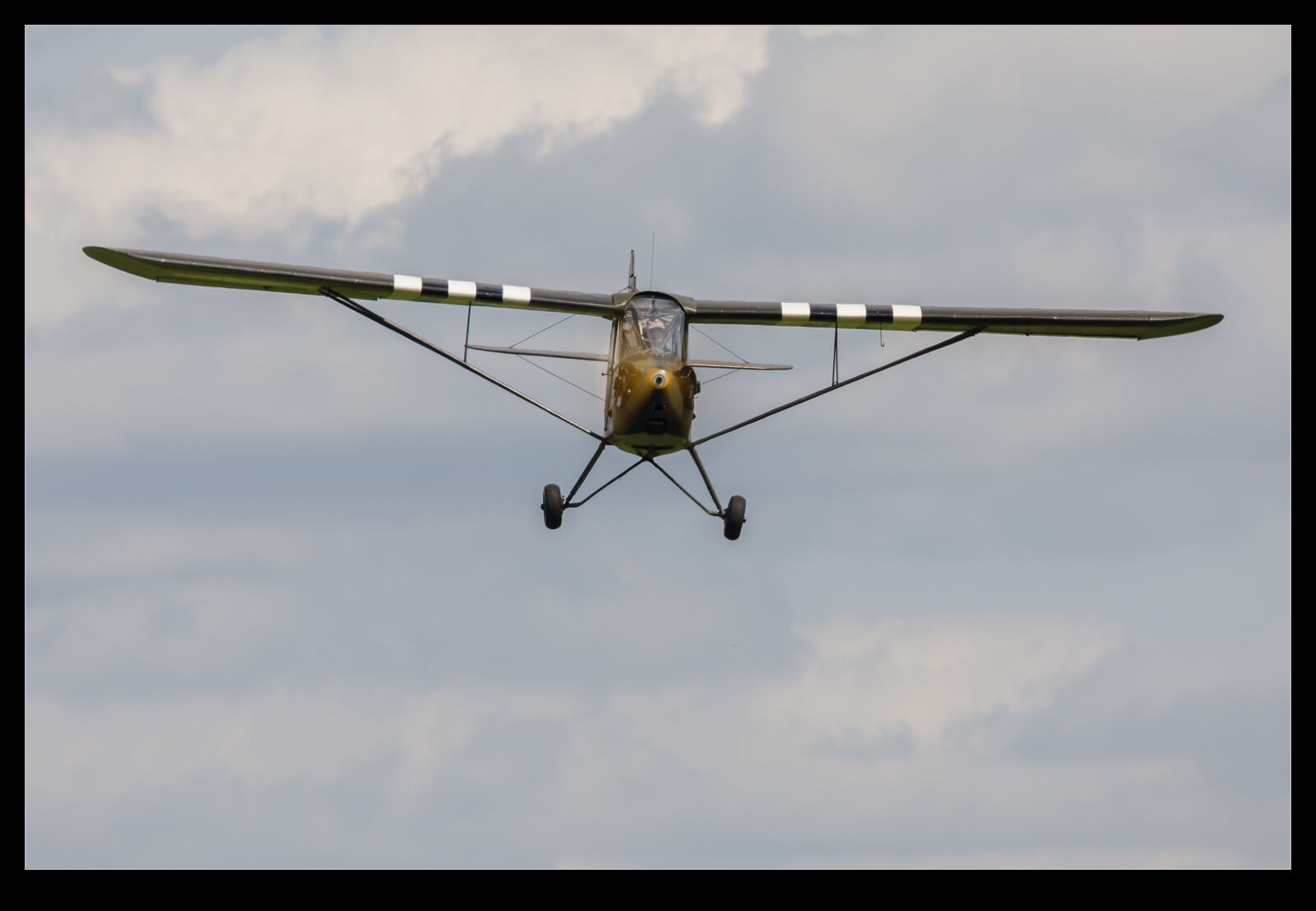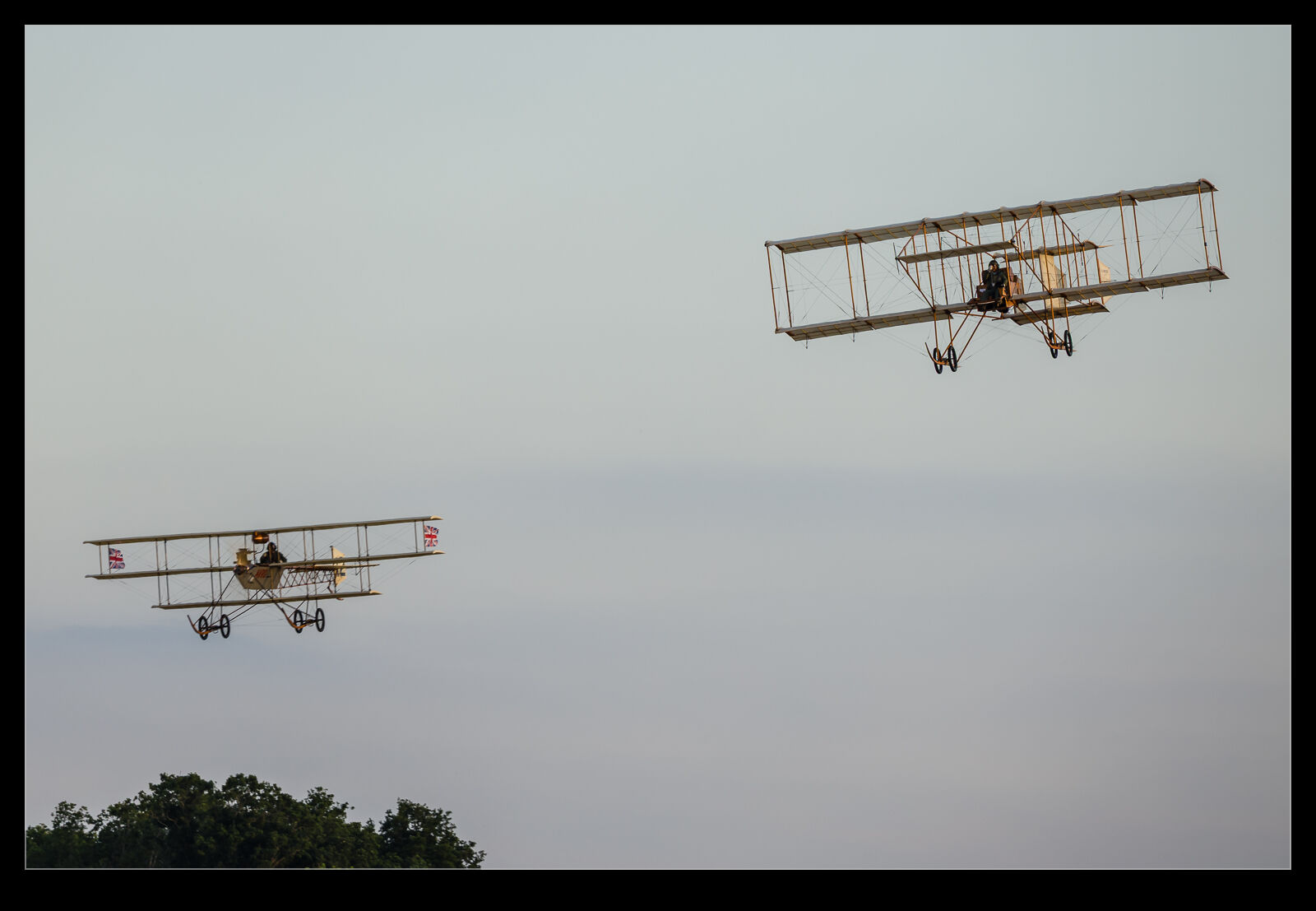 The great conditions for Shuttleworth’s Festival of Flight Sunday show meant we got to see a lot of the more fragile types fly. Later in this section of the show, we had the Bristol Boxkite and the Avro Triplane take to the sky. I know they are both replicas but that doesn’t make them any less rare or vulnerable. They flew around for quite a while and, since they are not speedy aircraft, they can keep it all close in front of the crowd. The light was definitely at its peak during their display. Here are a few shots of the two of them putting on a show.
The great conditions for Shuttleworth’s Festival of Flight Sunday show meant we got to see a lot of the more fragile types fly. Later in this section of the show, we had the Bristol Boxkite and the Avro Triplane take to the sky. I know they are both replicas but that doesn’t make them any less rare or vulnerable. They flew around for quite a while and, since they are not speedy aircraft, they can keep it all close in front of the crowd. The light was definitely at its peak during their display. Here are a few shots of the two of them putting on a show.
Tag Archives: vintage
Coming Across an Old Car Meet While Out on the Bike
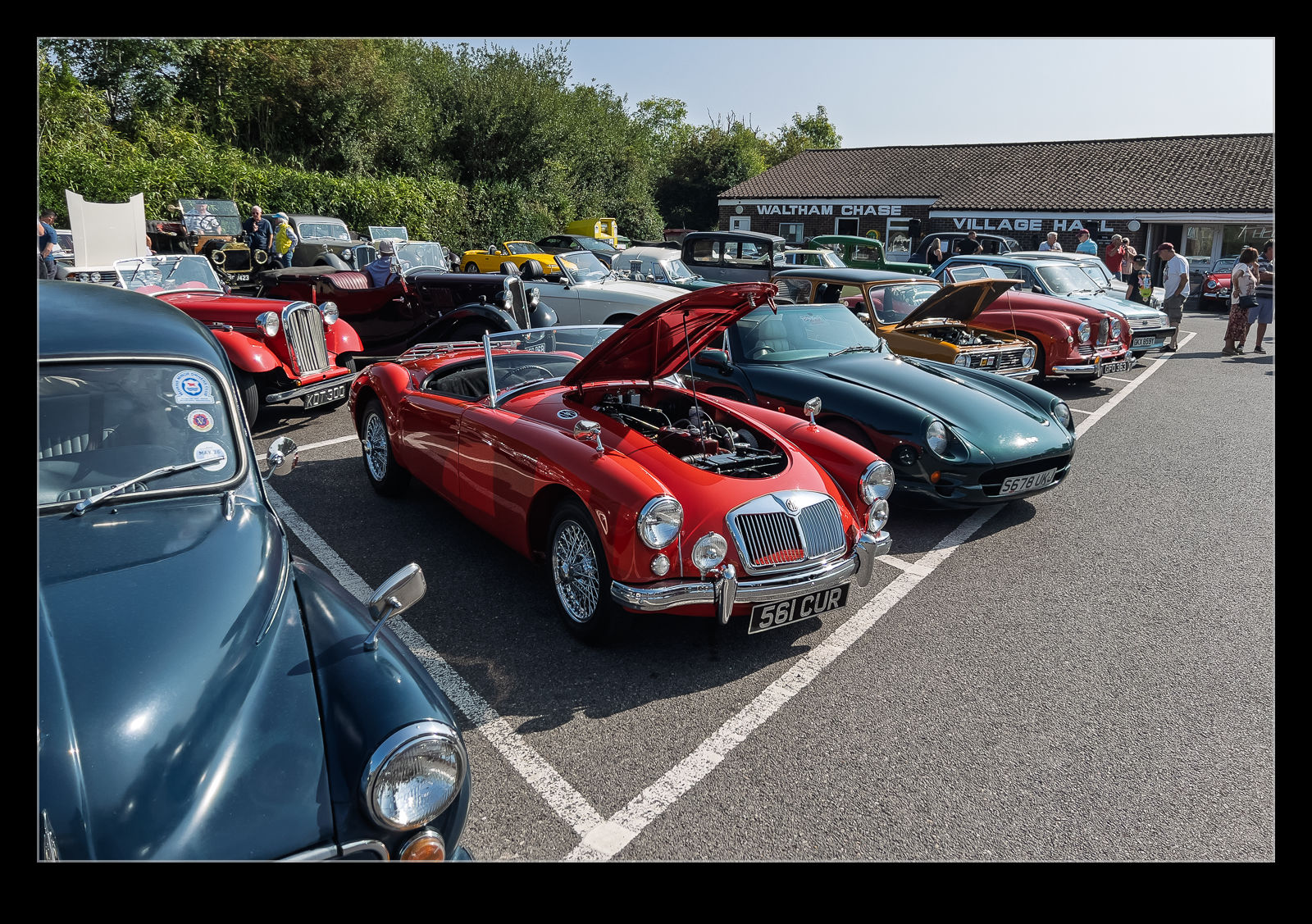 As part of my prep for the long charity bike ride I undertook in September, I was doing some longer rides from home to get some miles in. On one of these rides, I headed from home to the coast. To be honest, I had planned the route on the computer, and I didn’t really know many of the places I was going through. A lot of it was countryside but I did come through some towns. As I was heading out of one of them, I passed a bunch of people and cars parked in a car park.
As part of my prep for the long charity bike ride I undertook in September, I was doing some longer rides from home to get some miles in. On one of these rides, I headed from home to the coast. To be honest, I had planned the route on the computer, and I didn’t really know many of the places I was going through. A lot of it was countryside but I did come through some towns. As I was heading out of one of them, I passed a bunch of people and cars parked in a car park.
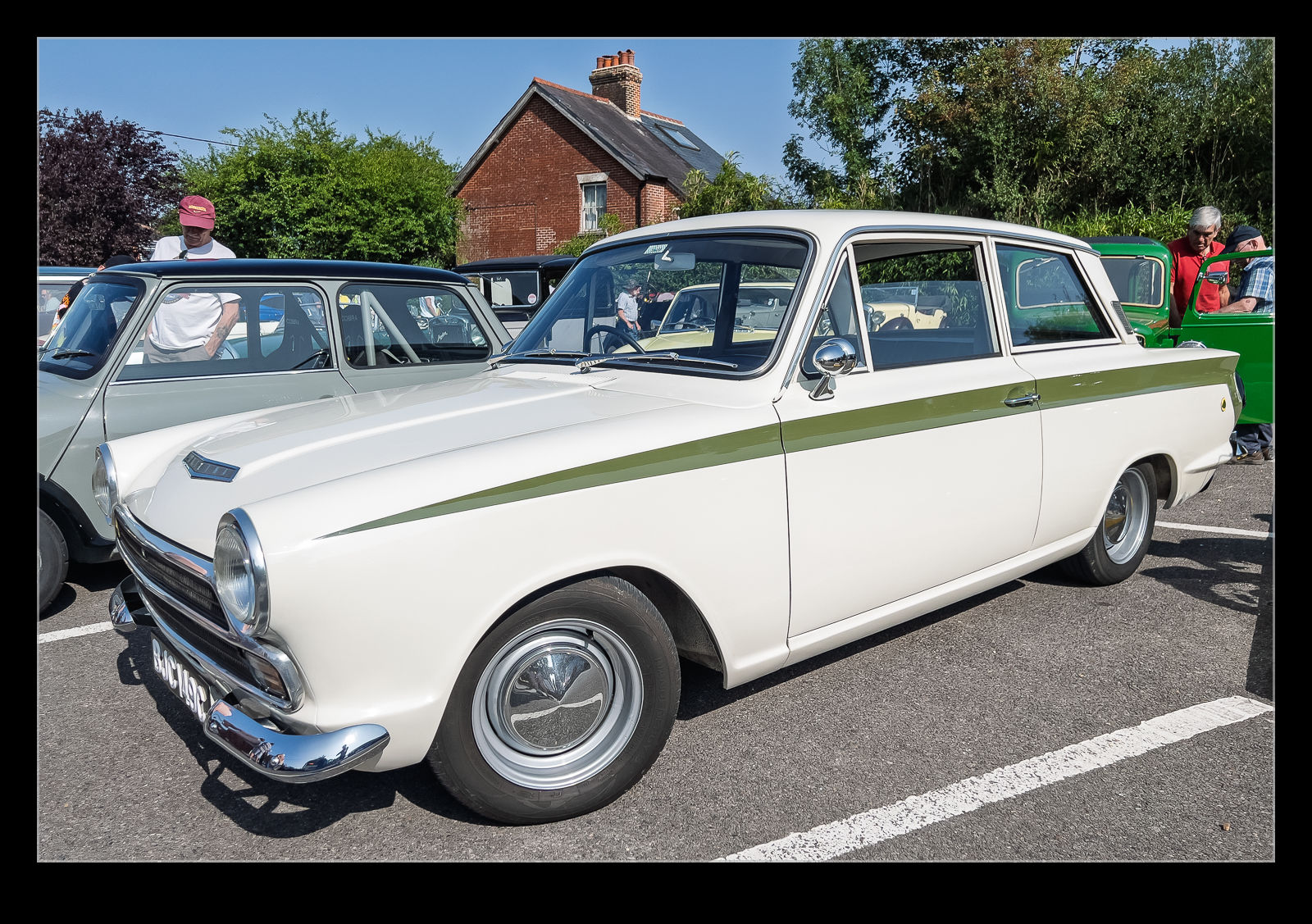 I stopped and went back to see what sort of vehicles these folks had brought along. There was quite a selection of old vehicles and some that weren’t so old. However, I guess it is a question of perspective because some of the cars that were there seemed recent to me until I thought of when they were registered. Then it was obvious that they were now rather old – just like me! Yes, we had some more familiar “vintage” vehicles but in the background of one of the shots you might spot an Austin Metro! I didn’t hang around too long because I was on a mission, but it was a fun break and rather amusing!
I stopped and went back to see what sort of vehicles these folks had brought along. There was quite a selection of old vehicles and some that weren’t so old. However, I guess it is a question of perspective because some of the cars that were there seemed recent to me until I thought of when they were registered. Then it was obvious that they were now rather old – just like me! Yes, we had some more familiar “vintage” vehicles but in the background of one of the shots you might spot an Austin Metro! I didn’t hang around too long because I was on a mission, but it was a fun break and rather amusing!
A Day for the Bus Spotters
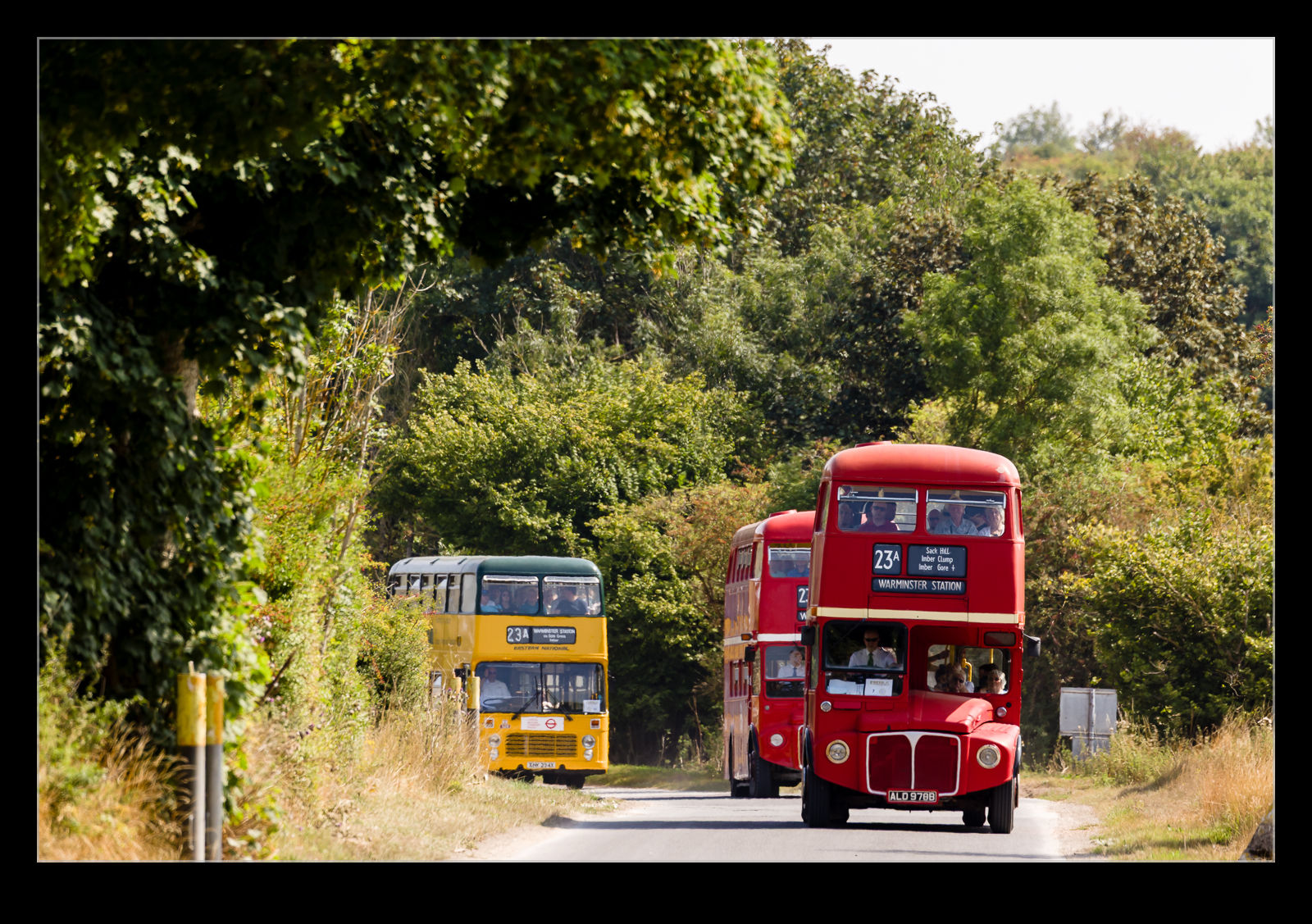 The visit to Imber that I recently posted about was facilitated by a fleet of buses. Many of these were quite old. Some were very modern. We had old Routemasters from London, open top double deckers and fully electric buses. For us they were a means to get onto Salisbury Plain, but this was clearly a great day for bus spotters. Now, I have be known to take a passing interest in aircraft and there is nothing wrong with that. Is bus spotting okay? That’s a different thing entirely!!
The visit to Imber that I recently posted about was facilitated by a fleet of buses. Many of these were quite old. Some were very modern. We had old Routemasters from London, open top double deckers and fully electric buses. For us they were a means to get onto Salisbury Plain, but this was clearly a great day for bus spotters. Now, I have be known to take a passing interest in aircraft and there is nothing wrong with that. Is bus spotting okay? That’s a different thing entirely!!
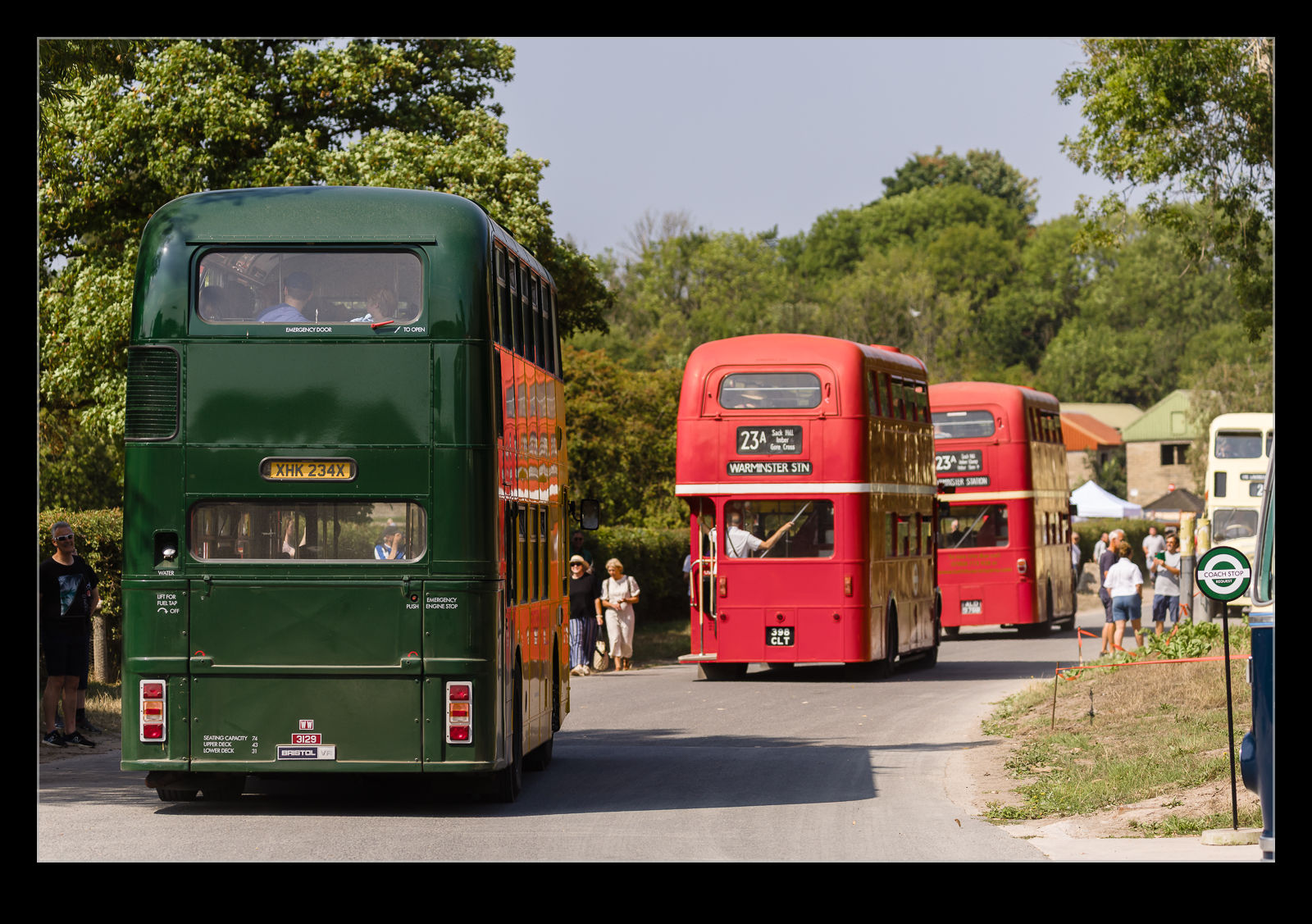 There was a lot to keep the enthusiasts happy. I have no idea whether any of these buses was more special than the next. They did seem to be maintained in immaculate condition. The ride was definitely not as comfortable as a modern vehicle and the rough roads across the Plain showed that up. It was quite interesting to see a small convoy of buses making there way in to and out of Imber. I did see some guys getting quite animated as they tried to photograph a bus while one of the volunteers was marshalling it into place. I think his need was greater than theirs.
There was a lot to keep the enthusiasts happy. I have no idea whether any of these buses was more special than the next. They did seem to be maintained in immaculate condition. The ride was definitely not as comfortable as a modern vehicle and the rough roads across the Plain showed that up. It was quite interesting to see a small convoy of buses making there way in to and out of Imber. I did see some guys getting quite animated as they tried to photograph a bus while one of the volunteers was marshalling it into place. I think his need was greater than theirs.
This is Not a Canberra or a Lightning!
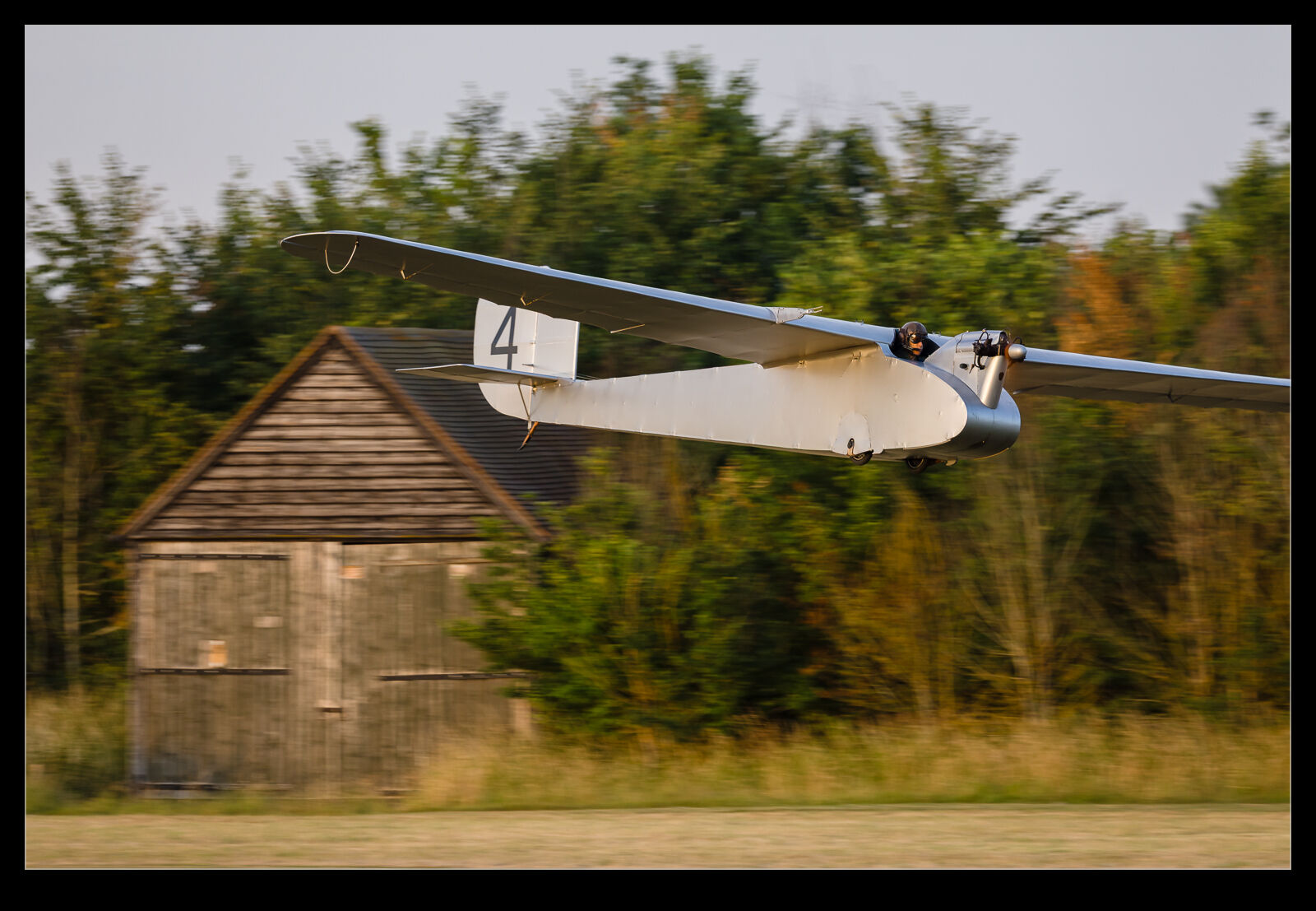 The name English Electric is well known in aviation circles. Before it was subsumed into the British Aircraft Corporation, it had produced the Lightning interceptor and the Canberra bomber. The Lightning might have got more glory, but the Canberra was by far the more successful type with excellent performance. However, there is a lesser-known type that came from the company a long time before.
The name English Electric is well known in aviation circles. Before it was subsumed into the British Aircraft Corporation, it had produced the Lightning interceptor and the Canberra bomber. The Lightning might have got more glory, but the Canberra was by far the more successful type with excellent performance. However, there is a lesser-known type that came from the company a long time before.
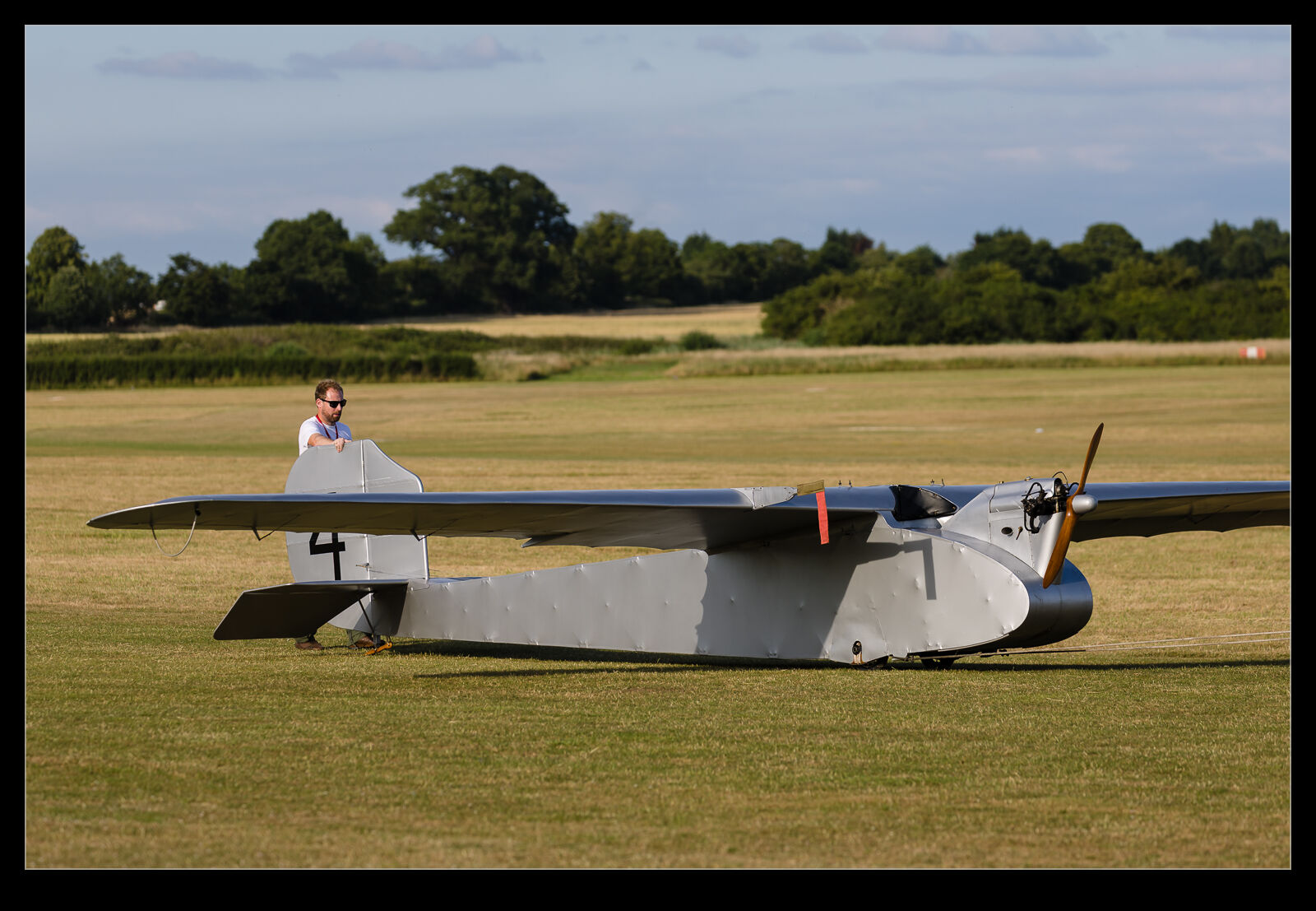 I first heard of the Wren when I read about it in Roly Beamont’s book. He was the chief test pilot at English Electric, and he described this vintage aircraft with very limited power that the company restored and hopped along the runway at Warton many years before I worked there. The aircraft now lives at Old Warden and it was brought out to fly during the Shuttleworth Festival of Flight. It was towed up to the far end of the field in preparation for its flight. The conditions were smooth, so it was going to be able to perform.
I first heard of the Wren when I read about it in Roly Beamont’s book. He was the chief test pilot at English Electric, and he described this vintage aircraft with very limited power that the company restored and hopped along the runway at Warton many years before I worked there. The aircraft now lives at Old Warden and it was brought out to fly during the Shuttleworth Festival of Flight. It was towed up to the far end of the field in preparation for its flight. The conditions were smooth, so it was going to be able to perform.
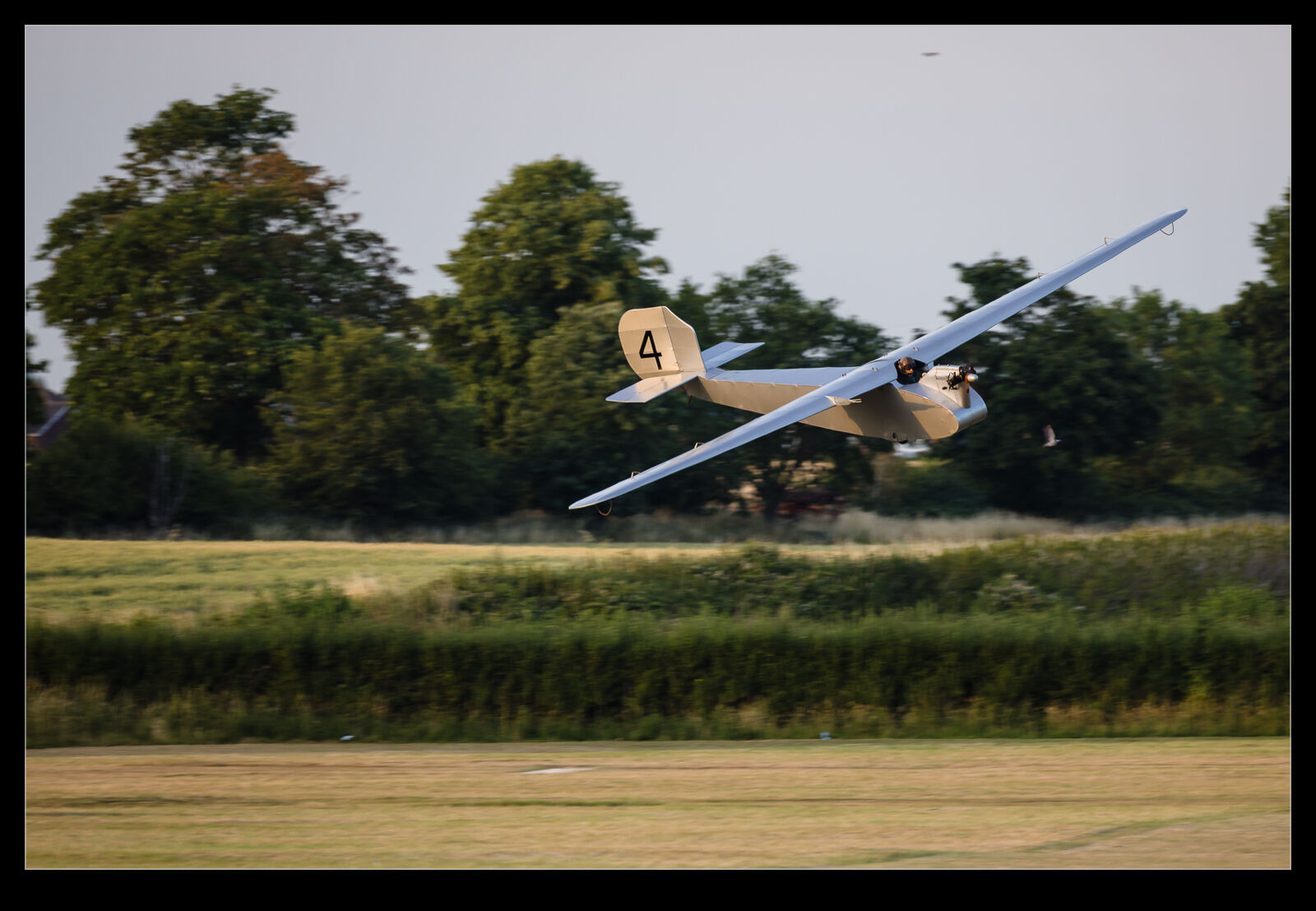 Having read that it was not over-endowed with power and that the Warton tests had involved some basic hops along the runway, this was what I had anticipated would be the case here. However, they were more ambitious. After flying the length of the field, a turn was made for a return run. I have to admit, when I first saw the turn, I did fear that all was not well. The whole flight was at low level, so the turn was also low. The angle made it look like the plane was heading for the trees. However, this was quite normal and in control. Even so, every turn made me tense up slightly. I guess by the end of the flight, I was getting used to it. Even so, it was quite unlike most flying I have watched.
Having read that it was not over-endowed with power and that the Warton tests had involved some basic hops along the runway, this was what I had anticipated would be the case here. However, they were more ambitious. After flying the length of the field, a turn was made for a return run. I have to admit, when I first saw the turn, I did fear that all was not well. The whole flight was at low level, so the turn was also low. The angle made it look like the plane was heading for the trees. However, this was quite normal and in control. Even so, every turn made me tense up slightly. I guess by the end of the flight, I was getting used to it. Even so, it was quite unlike most flying I have watched.
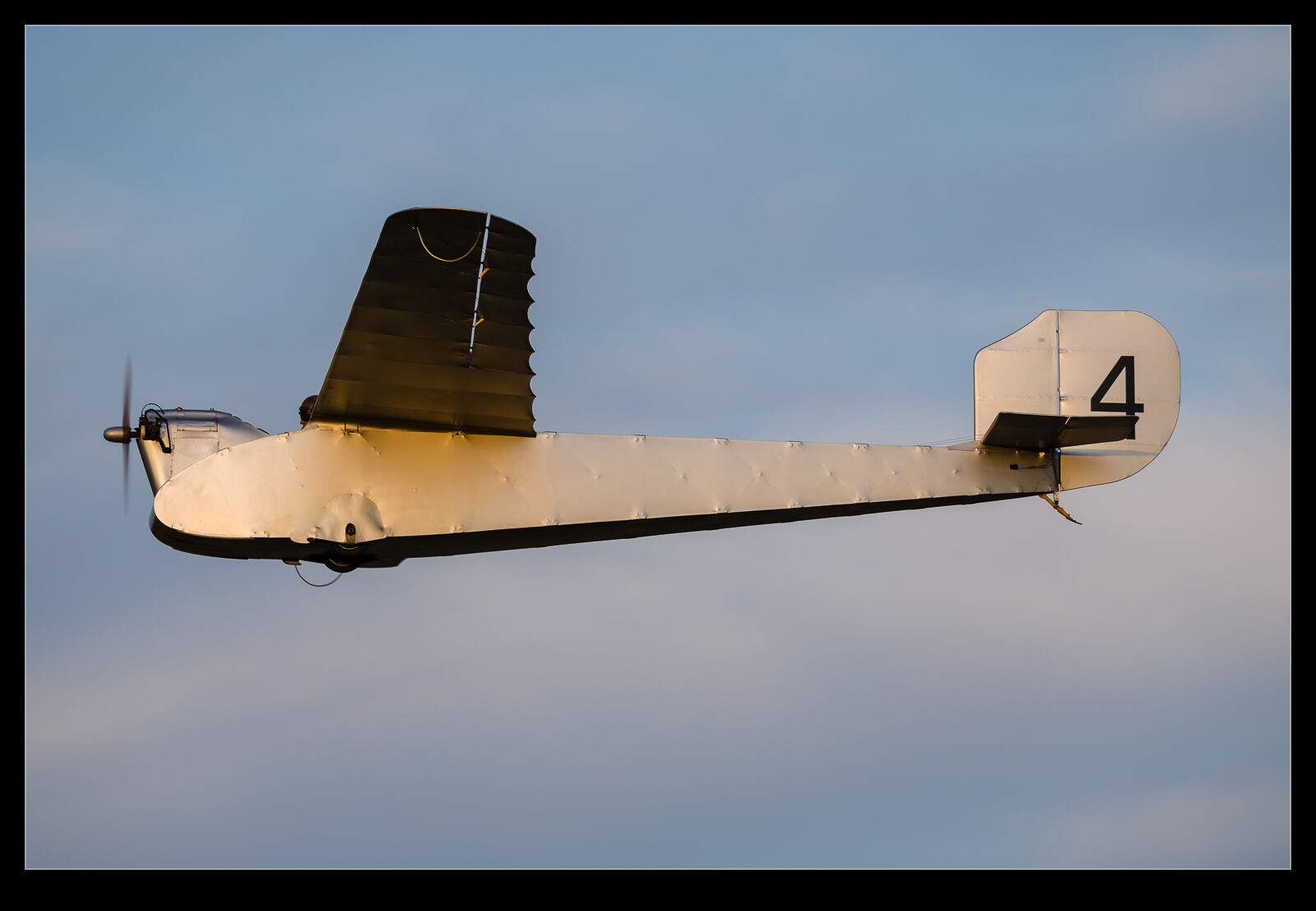 Multiple passes were made during the flight. The light was definitely playing ball along certain parts of the passes so I was able to grab quite a few shots. It’s not the most elegant looking plane and I imagine the view for the pilot is pretty minimal. Even so, as rarities go, it is right up there so to see it fly was a nice result.
Multiple passes were made during the flight. The light was definitely playing ball along certain parts of the passes so I was able to grab quite a few shots. It’s not the most elegant looking plane and I imagine the view for the pilot is pretty minimal. Even so, as rarities go, it is right up there so to see it fly was a nice result.
The Oldest Flying British Aircraft
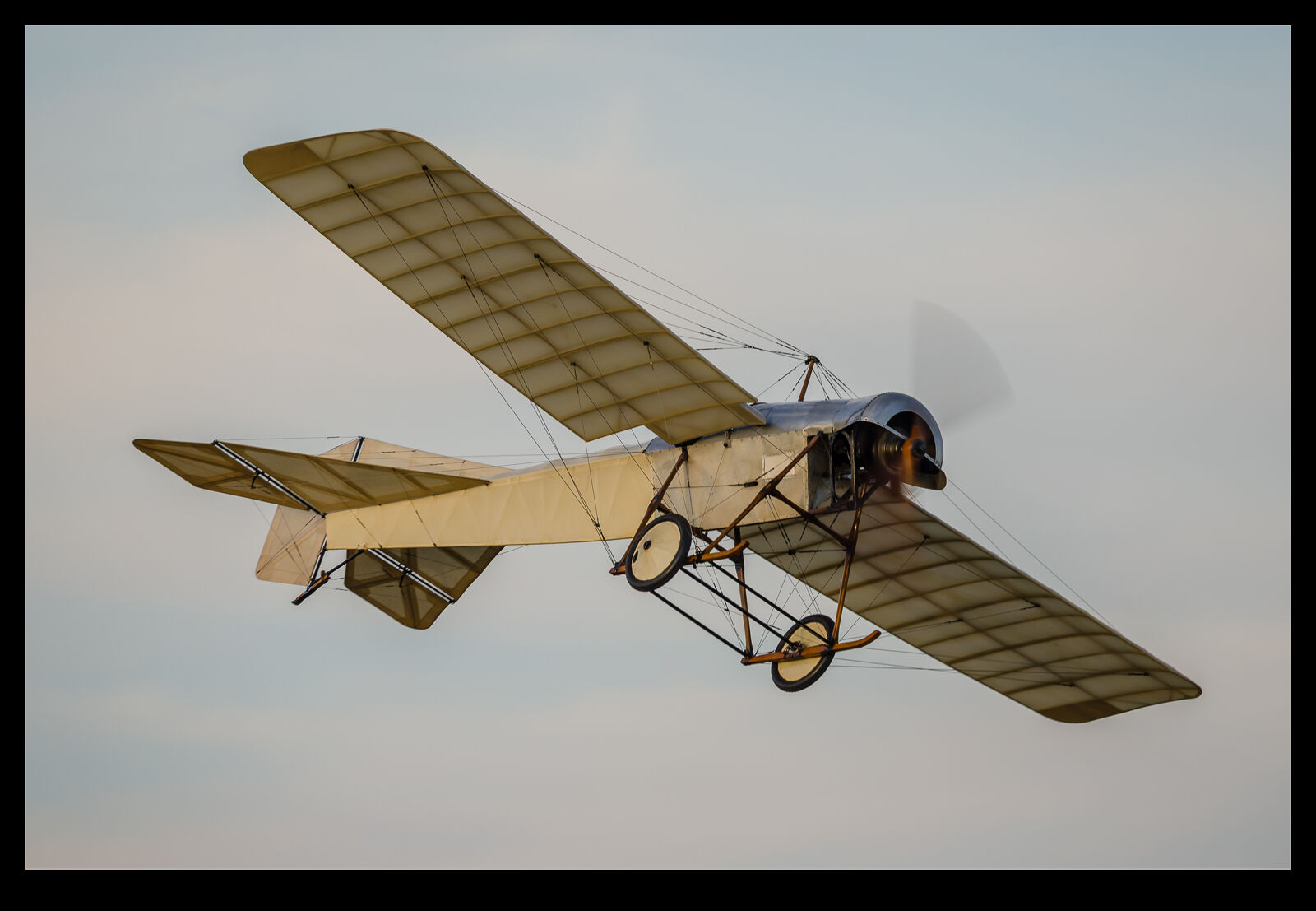 The very earliest days of aviation meant a lot of experimenters and innovators were trying their hand at flying. Some had success and many didn’t. Most of those early planes were never preserved (and many probably didn’t deserve to be. Even those that led to further success for their creators didn’t necessarily get to survive because things were moving on so fast and the historical significance would only become apparent many years later.
The very earliest days of aviation meant a lot of experimenters and innovators were trying their hand at flying. Some had success and many didn’t. Most of those early planes were never preserved (and many probably didn’t deserve to be. Even those that led to further success for their creators didn’t necessarily get to survive because things were moving on so fast and the historical significance would only become apparent many years later.
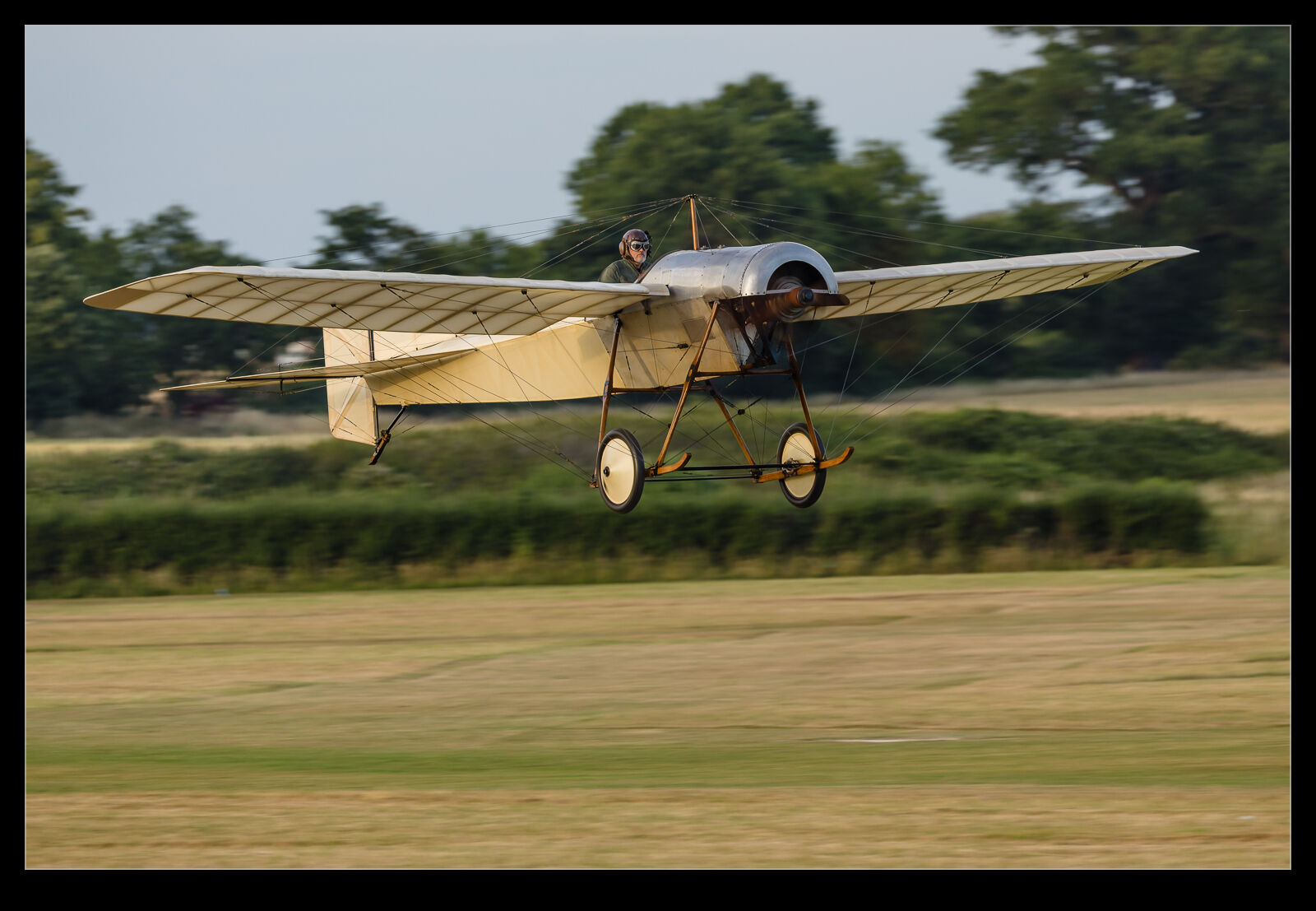 Consequently, it is quite a treat when something this old not only survived but is still airworthy. The oldest flying British aircraft is the Blackburn Type D. I guess the fact it is a Type D tells you that Blackburn had three preceding types that either didn’t work or didn’t survive (or perhaps both). This plane dates to 1912 although the engine is a later version. It has been in Shuttleworth’s hands since the late 1930s and it will fly if the conditions are right. Fortunately, they were when I was there for the Festival of Flight.
Consequently, it is quite a treat when something this old not only survived but is still airworthy. The oldest flying British aircraft is the Blackburn Type D. I guess the fact it is a Type D tells you that Blackburn had three preceding types that either didn’t work or didn’t survive (or perhaps both). This plane dates to 1912 although the engine is a later version. It has been in Shuttleworth’s hands since the late 1930s and it will fly if the conditions are right. Fortunately, they were when I was there for the Festival of Flight.
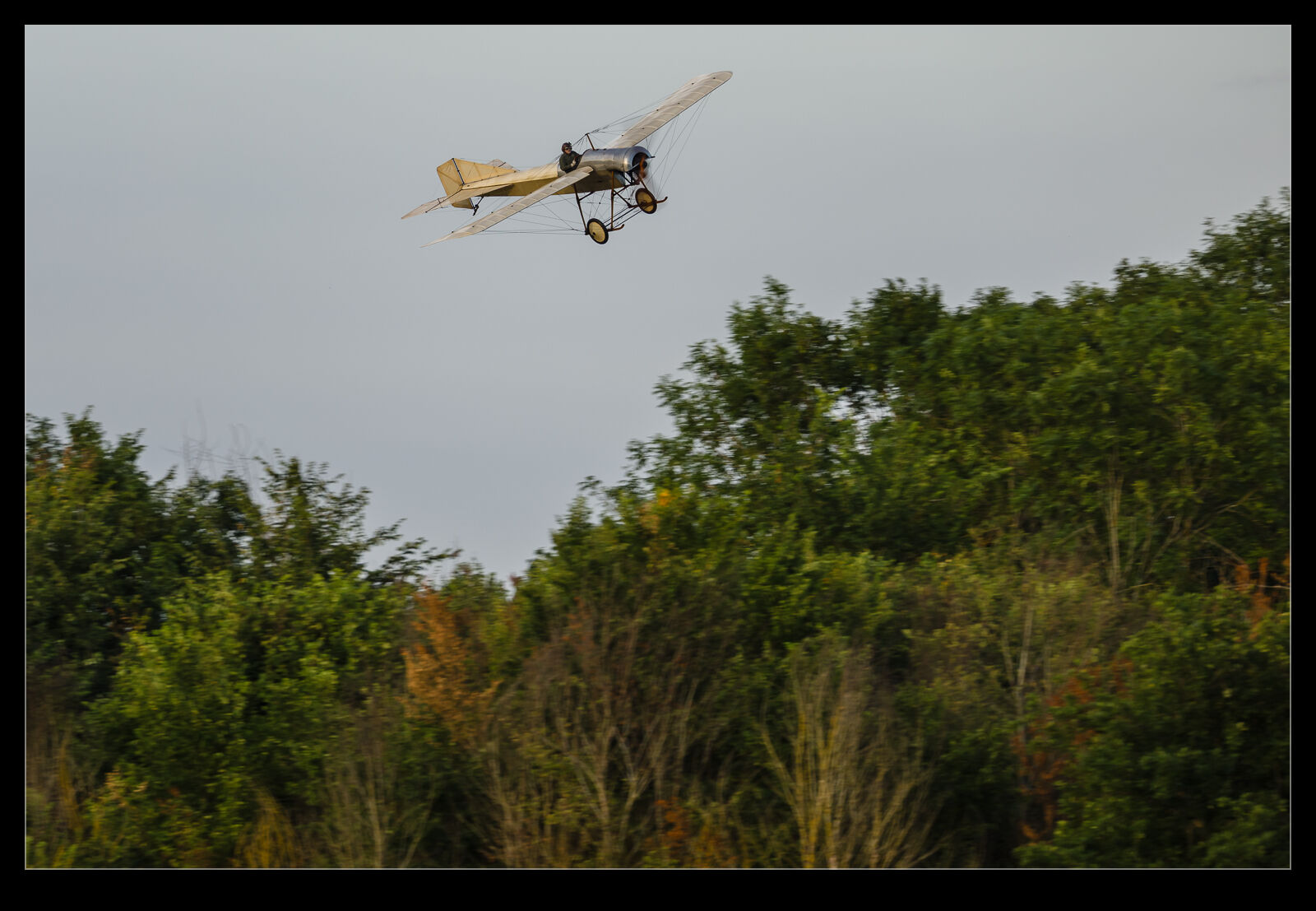 Unlike the two older planes that flew before it, the Type D seemed a lot more capable a plane and it was able to climb and manoeuvre around the display area with relative ease. The conditions were good to it, and we got to enjoy a lot of time with it before it landed. An amazing piece of history to witness on display.
Unlike the two older planes that flew before it, the Type D seemed a lot more capable a plane and it was able to climb and manoeuvre around the display area with relative ease. The conditions were good to it, and we got to enjoy a lot of time with it before it landed. An amazing piece of history to witness on display.
The Bleriot Gets Airborne – Just!
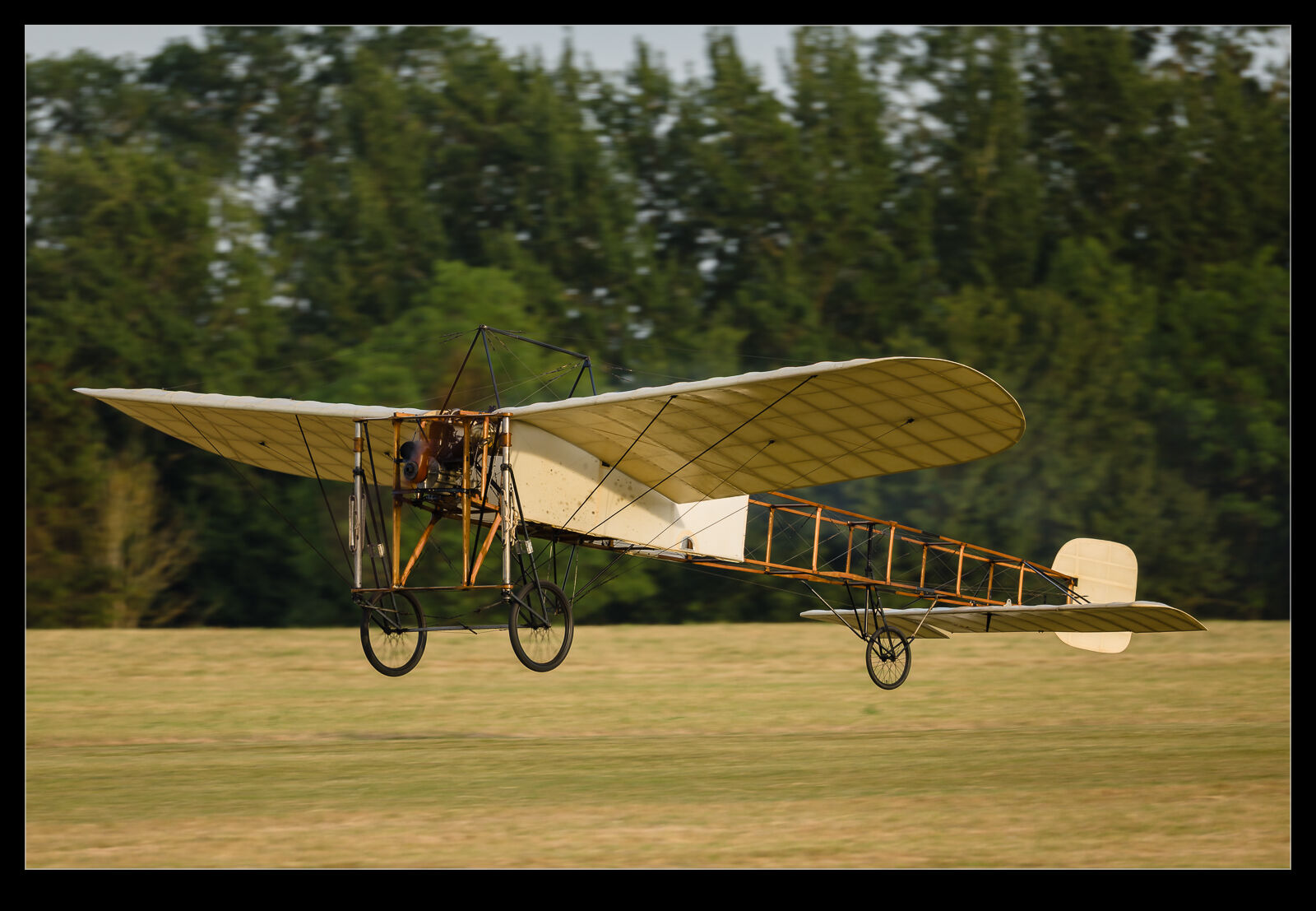 The Shuttleworth Trust has a Bleriot XI aircraft that is airworthy. This is not the first one I have seen because I saw the one Eric Presten kept in Sonoma, but I never got the chance to see that one fly. The Festival of Flight show at Old Warden had ideal conditions for flying the old planes and the Bleriot came out. They limit it to flying up and down the runway. No messing around with turns. Instead, they hop along the runway, turn around on the ground at the end and then come back.
The Shuttleworth Trust has a Bleriot XI aircraft that is airworthy. This is not the first one I have seen because I saw the one Eric Presten kept in Sonoma, but I never got the chance to see that one fly. The Festival of Flight show at Old Warden had ideal conditions for flying the old planes and the Bleriot came out. They limit it to flying up and down the runway. No messing around with turns. Instead, they hop along the runway, turn around on the ground at the end and then come back.
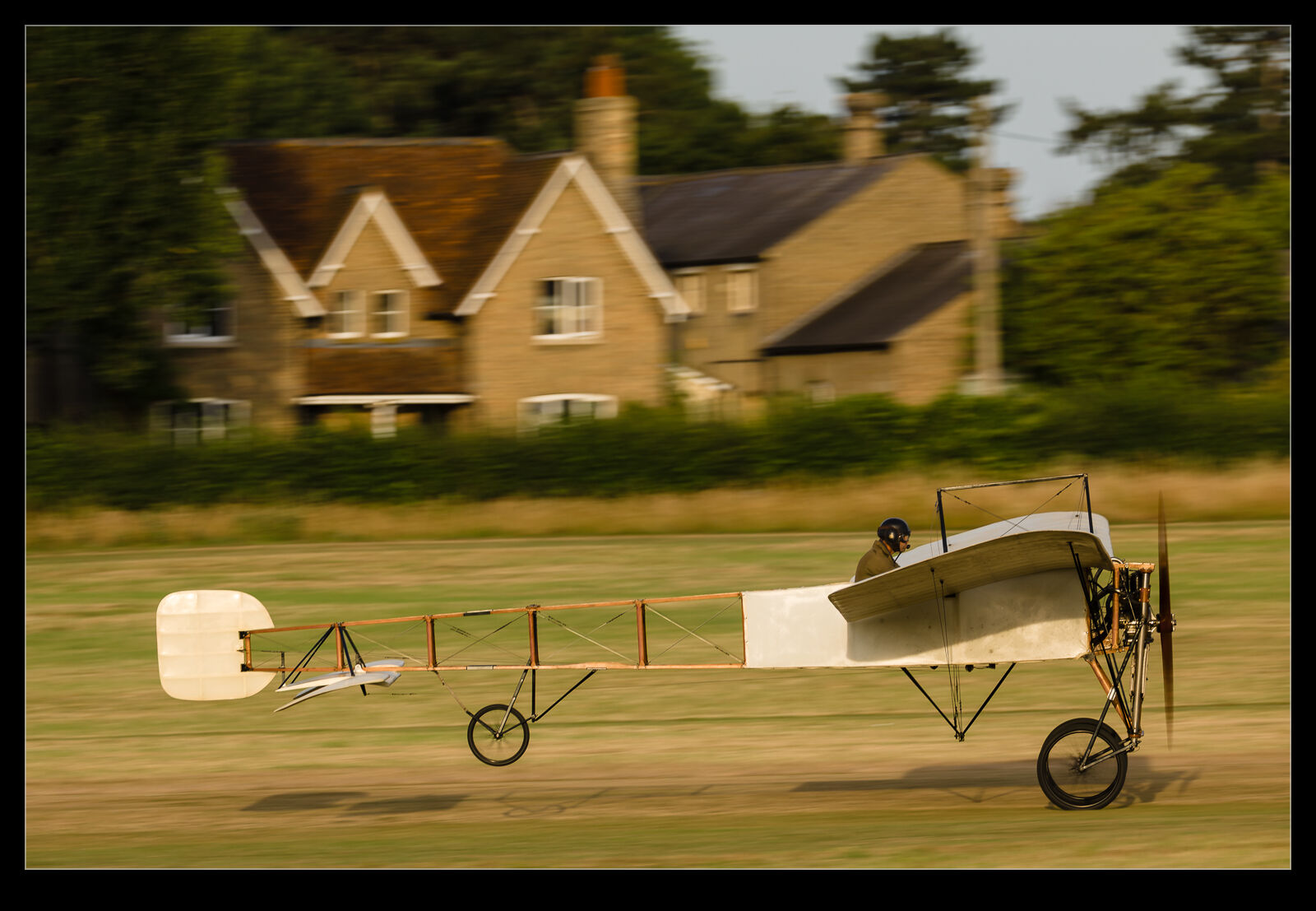 It is not an overpowered aircraft, and I did wonder whether it would get airborne or not. It would bounce up off a bump and then fly along for a while, before settling back down. I don’t know how much they push the performance given that this is an extremely rare and valuable aircraft so maybe it could do more. However, watching it I did find myself wondering about what would make someone want to take something like this across the English Channel.
It is not an overpowered aircraft, and I did wonder whether it would get airborne or not. It would bounce up off a bump and then fly along for a while, before settling back down. I don’t know how much they push the performance given that this is an extremely rare and valuable aircraft so maybe it could do more. However, watching it I did find myself wondering about what would make someone want to take something like this across the English Channel.
I Need to Be Grateful to the Flamant
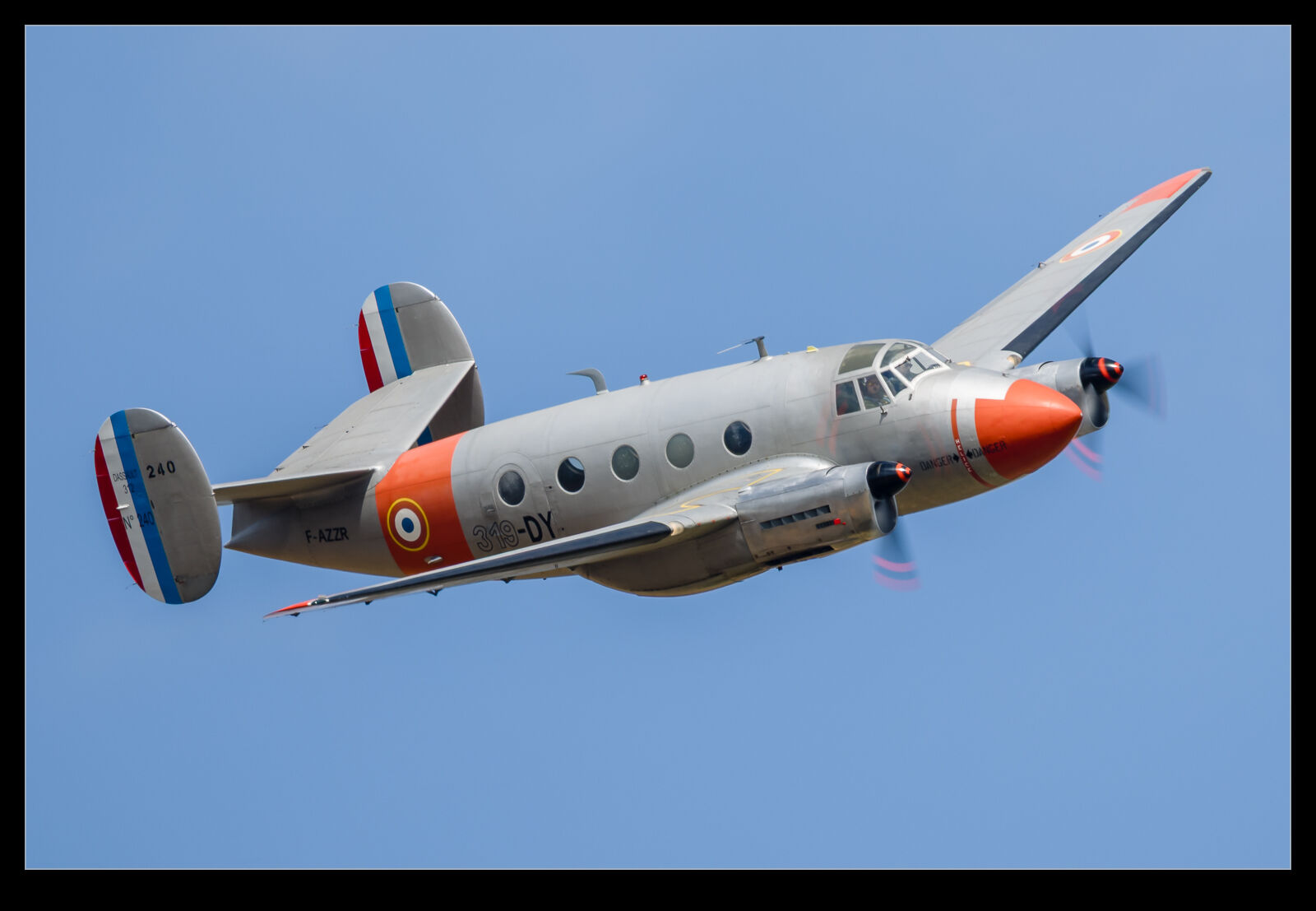 When I went to the military air show at Shuttleworth earlier in the year, I had a really good time. I then saw a bunch of advertising for the Festival of Flight which they described as their biggest show of the year. Having had a really good time previously, I didn’t feel a strong need to go back. I was quite happy to skip this one until… On the Friday, I saw some images from people that were there of the planes arriving. There was a lot of stuff there including all sorts of unusual old types. One plane in particular caught my attention and that was the Dassault Flamant.
When I went to the military air show at Shuttleworth earlier in the year, I had a really good time. I then saw a bunch of advertising for the Festival of Flight which they described as their biggest show of the year. Having had a really good time previously, I didn’t feel a strong need to go back. I was quite happy to skip this one until… On the Friday, I saw some images from people that were there of the planes arriving. There was a lot of stuff there including all sorts of unusual old types. One plane in particular caught my attention and that was the Dassault Flamant.
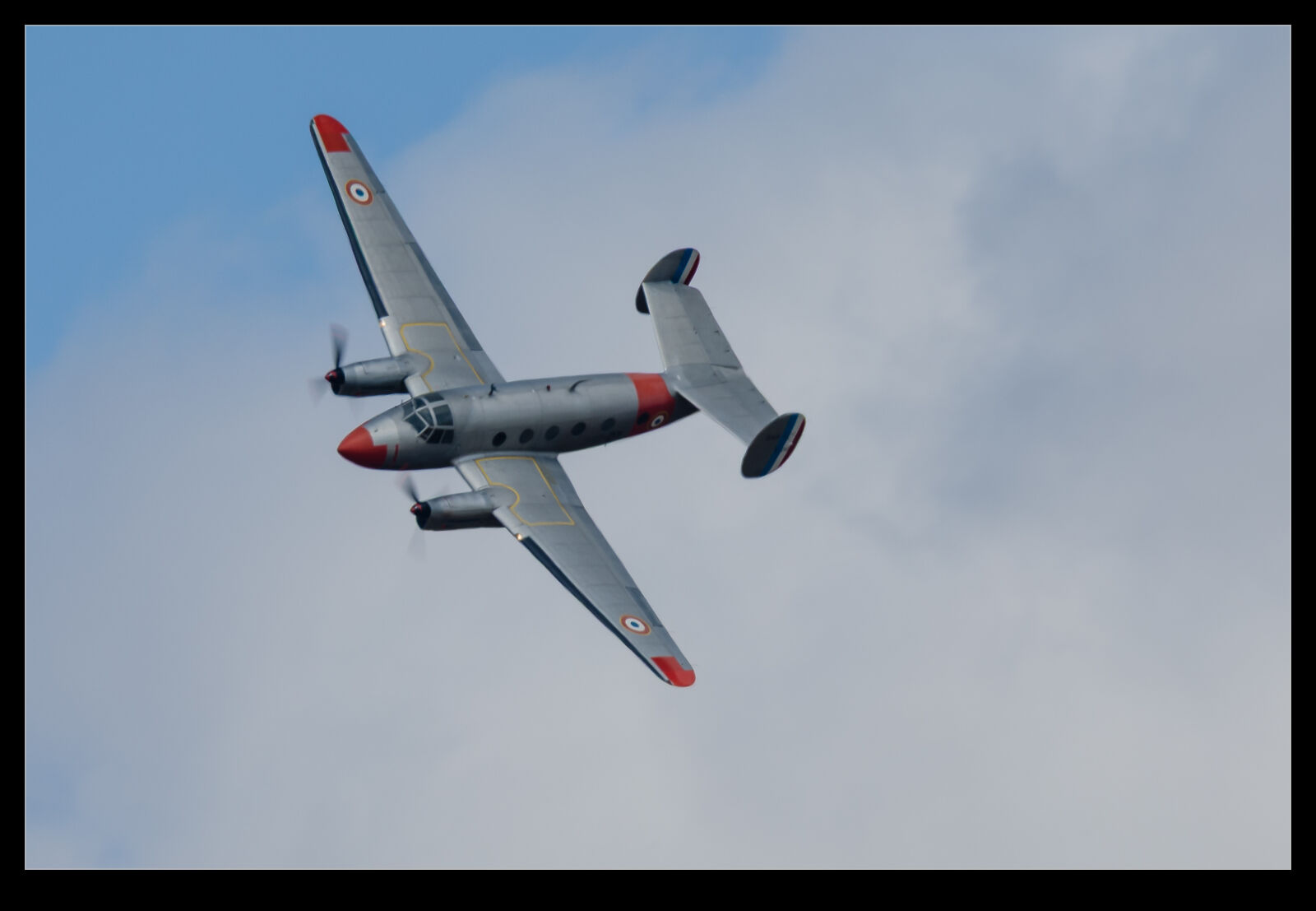 Now I was thinking about going. Saturday we already had plans, and I wasn’t going to mess with those. Sunday was a bit more open, and the forecast was certainly looking better. When Nancy said she didn’t have anything specific she wanted to do, I made the decision to go. This was absolutely the right call. The show turned out to be an absolute blast. The afternoon displays were excellent and then, after the pause, the evening display was started a little early. I will talk about the rest of the show during other posts, but this one is all about the Flamant. A transport aircraft that Dassault built for the French military, a few of these are apparently still around. It is such an interesting looking plane and seeing it operate at close quarters in such a nice location was great.
Now I was thinking about going. Saturday we already had plans, and I wasn’t going to mess with those. Sunday was a bit more open, and the forecast was certainly looking better. When Nancy said she didn’t have anything specific she wanted to do, I made the decision to go. This was absolutely the right call. The show turned out to be an absolute blast. The afternoon displays were excellent and then, after the pause, the evening display was started a little early. I will talk about the rest of the show during other posts, but this one is all about the Flamant. A transport aircraft that Dassault built for the French military, a few of these are apparently still around. It is such an interesting looking plane and seeing it operate at close quarters in such a nice location was great.
Ye Olde Pub Gets Closer to Home
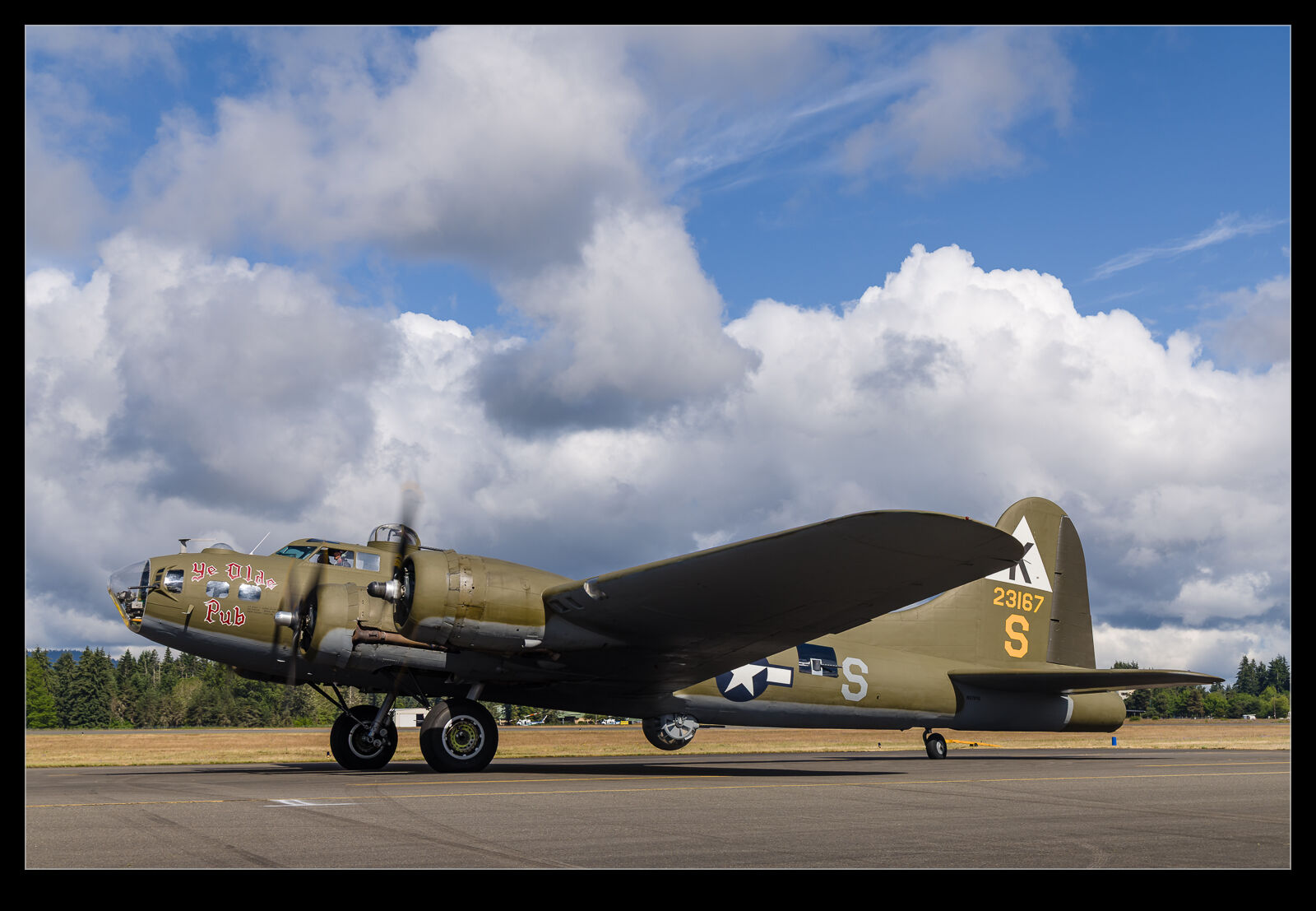 I had been able to photograph the B-17, Ye Olde Pub, when it appeared at the show down at Klamath Falls in Oregon. That was a bit of a hike to get to. In 2024 it put in an appearance at a show a lot nearer to our then home – the Olympic Air Show at Olympia. That made for a far shorter trip to see it – its home in Madras OR is also a fair trek. Olympia is only about 1:45 away if the roads are good.
I had been able to photograph the B-17, Ye Olde Pub, when it appeared at the show down at Klamath Falls in Oregon. That was a bit of a hike to get to. In 2024 it put in an appearance at a show a lot nearer to our then home – the Olympic Air Show at Olympia. That made for a far shorter trip to see it – its home in Madras OR is also a fair trek. Olympia is only about 1:45 away if the roads are good.
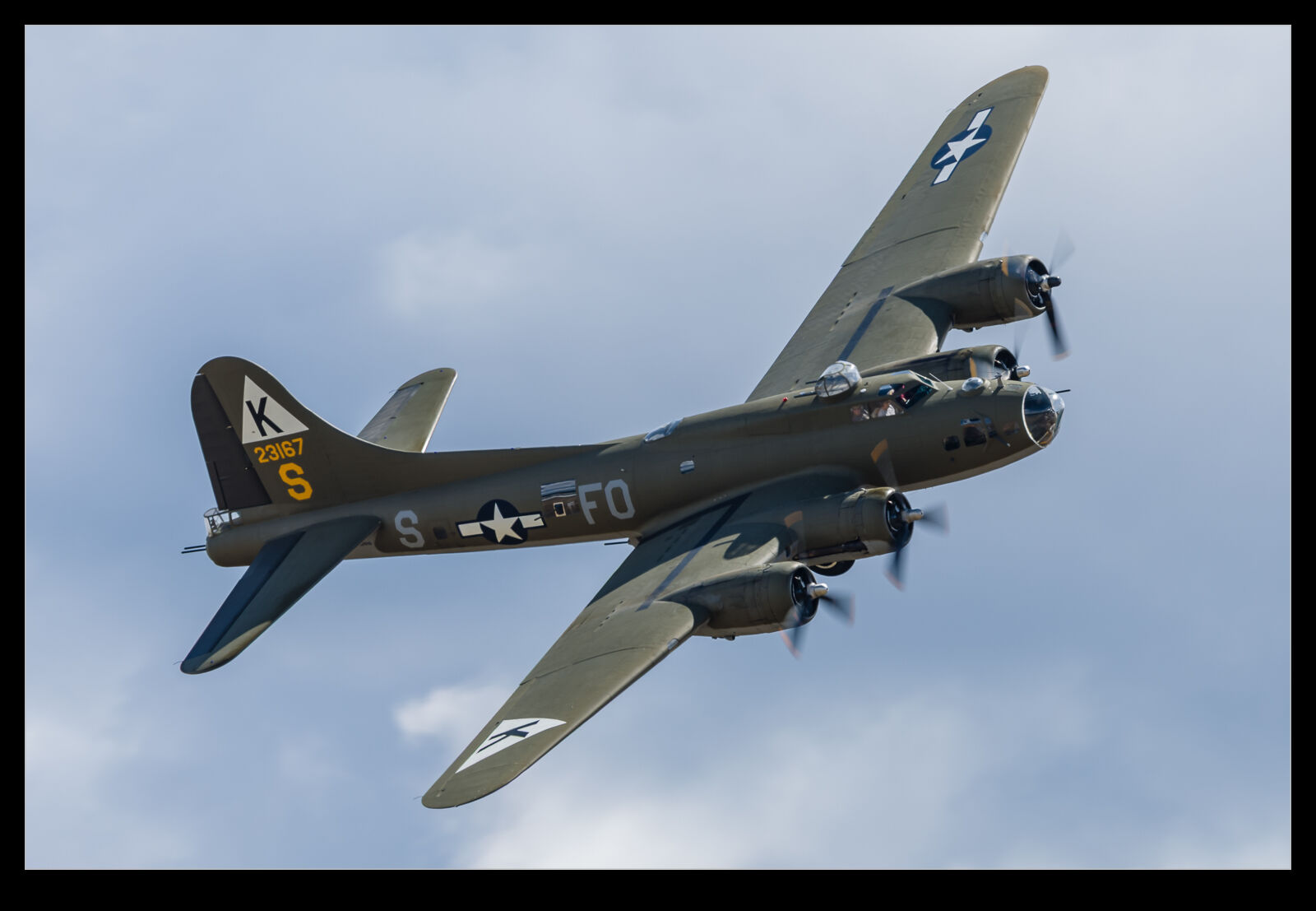 The put on a good flying display for the show. The light was surprisingly good for Olympia! It is held on a weekend in June that has a remarkable track record of delivering substandard weather. The local photographers constantly wish for it to be moved to a different time of year without any success. The plane was operating from the main ramp area which meant it was very close to you when it taxied in and out.
The put on a good flying display for the show. The light was surprisingly good for Olympia! It is held on a weekend in June that has a remarkable track record of delivering substandard weather. The local photographers constantly wish for it to be moved to a different time of year without any success. The plane was operating from the main ramp area which meant it was very close to you when it taxied in and out.
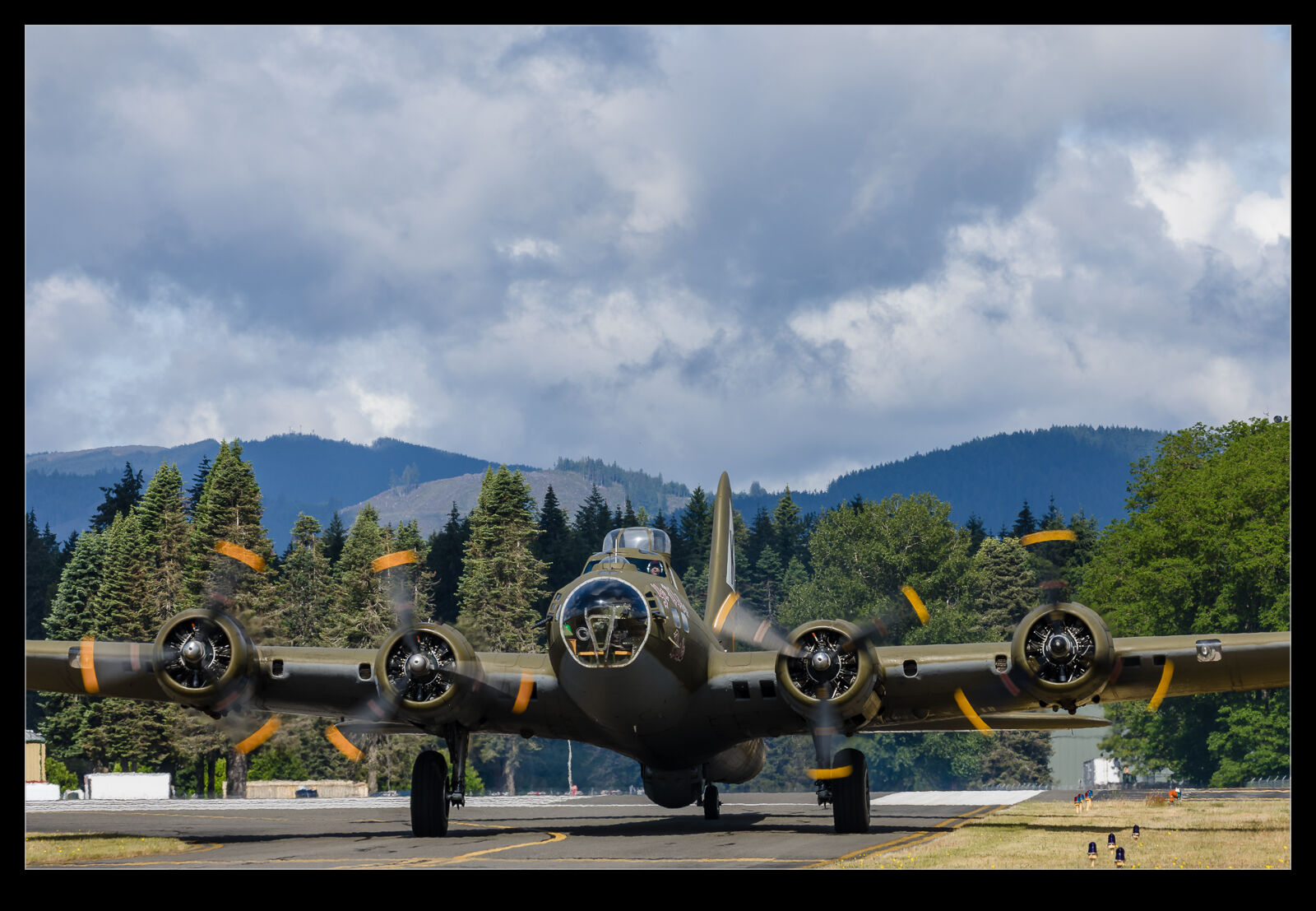 I wasn’t the first to spot this so I can’t claim to be the inspired person, but there is a taxiway marker board at Olympia that says B17. That made it quite easy to get a shot of the plane taxiing out with the B17 board in frame. A bit cutesy but I don’t think anyone was objecting. It seems like a lot of the airworthy B-17s are having major maintenance undertaken at the moment so having Ye Olde Pub active is great. I won’t even get upset about the use of the words “ye olde”!
I wasn’t the first to spot this so I can’t claim to be the inspired person, but there is a taxiway marker board at Olympia that says B17. That made it quite easy to get a shot of the plane taxiing out with the B17 board in frame. A bit cutesy but I don’t think anyone was objecting. It seems like a lot of the airworthy B-17s are having major maintenance undertaken at the moment so having Ye Olde Pub active is great. I won’t even get upset about the use of the words “ye olde”!
The Conditions Are Calm at Last
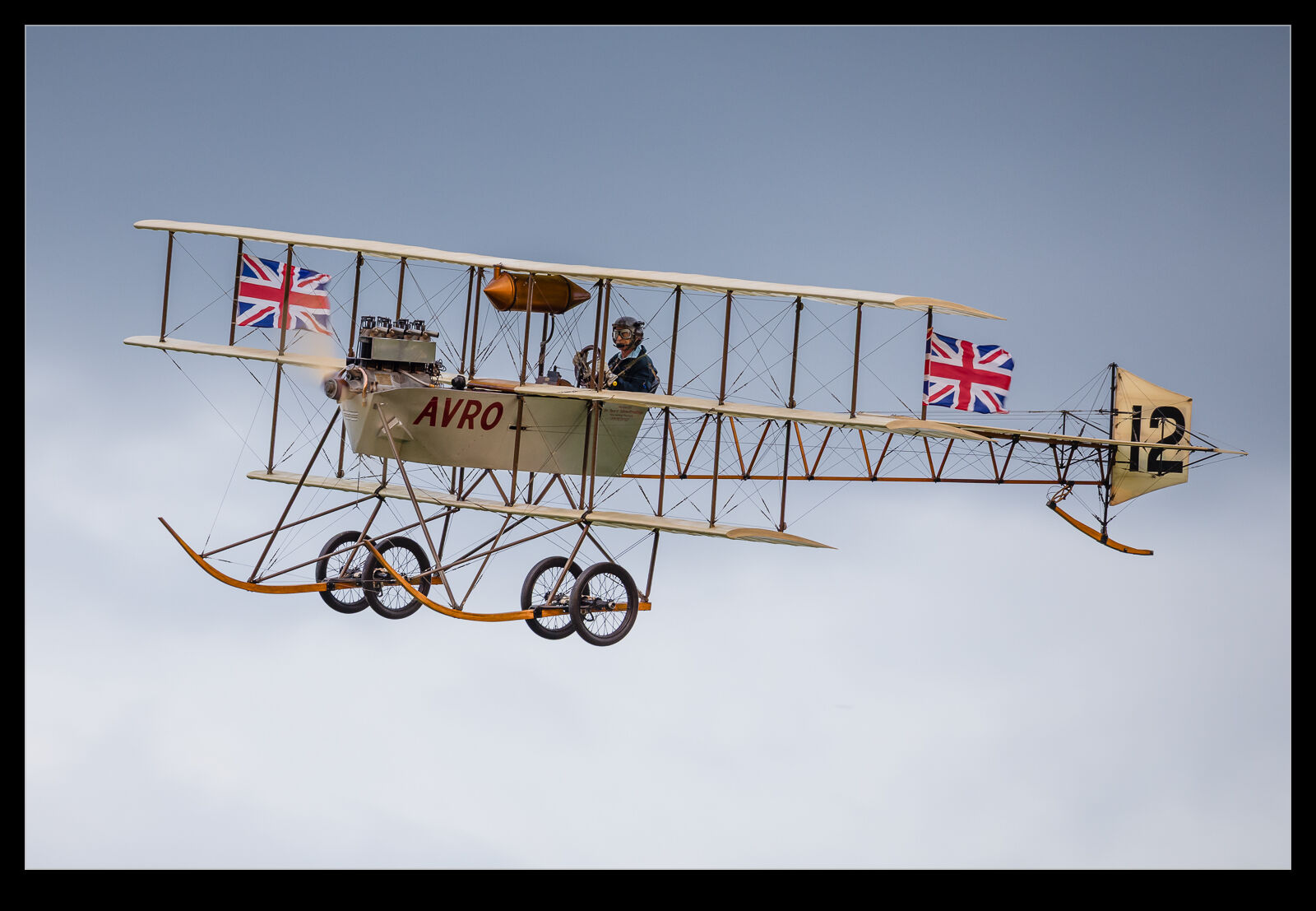 During my first show at Old Warden, there was a reasonable amount of wind throughout the day. This was in the back of all of our minds, and we wondered whether things would calm down enough to launch the Edwardian planes later in the day. The forecast was not for this to happen. As the sun started to get lower in the sky, I was quietly optimistic that the wind would calm but it was proving me wrong for the longest time.
During my first show at Old Warden, there was a reasonable amount of wind throughout the day. This was in the back of all of our minds, and we wondered whether things would calm down enough to launch the Edwardian planes later in the day. The forecast was not for this to happen. As the sun started to get lower in the sky, I was quietly optimistic that the wind would calm but it was proving me wrong for the longest time.
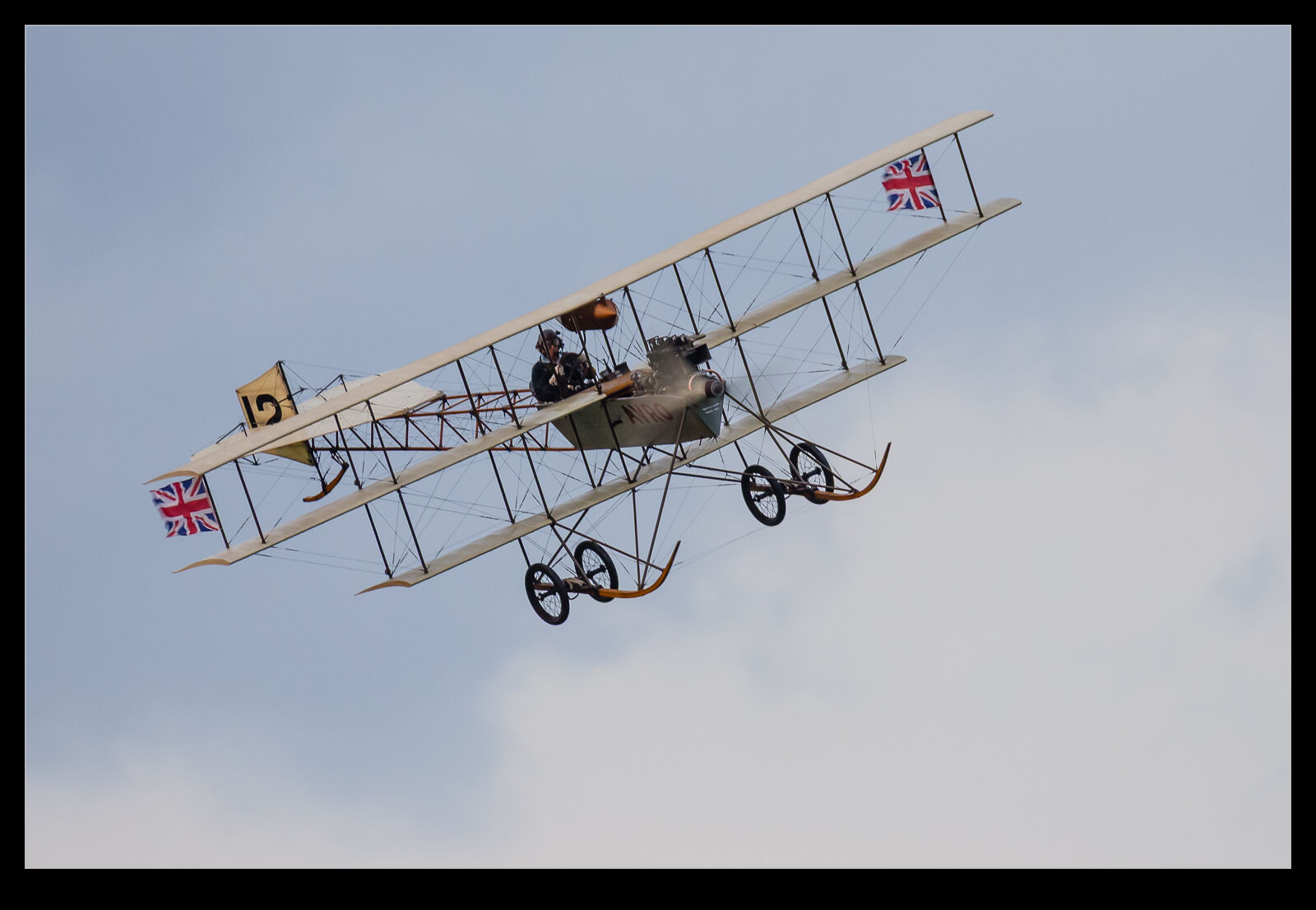 Then, very quickly, things seemed to change, and the organisers realised that there would be a chance to get some more fragile types up in the air. Then it was just a question of what would be willing to fly. Getting these vintage types airborne requires, skill and effort but also a bit of luck. They didn’t all play ball, but the Avro Triplane was up for the challenge. I know it is a reproduction but that doesn’t stop it being great to see it fly in the lovely evening conditions.
Then, very quickly, things seemed to change, and the organisers realised that there would be a chance to get some more fragile types up in the air. Then it was just a question of what would be willing to fly. Getting these vintage types airborne requires, skill and effort but also a bit of luck. They didn’t all play ball, but the Avro Triplane was up for the challenge. I know it is a reproduction but that doesn’t stop it being great to see it fly in the lovely evening conditions.
Getting the Shutter Speed Wrong Makes Editing Quicker
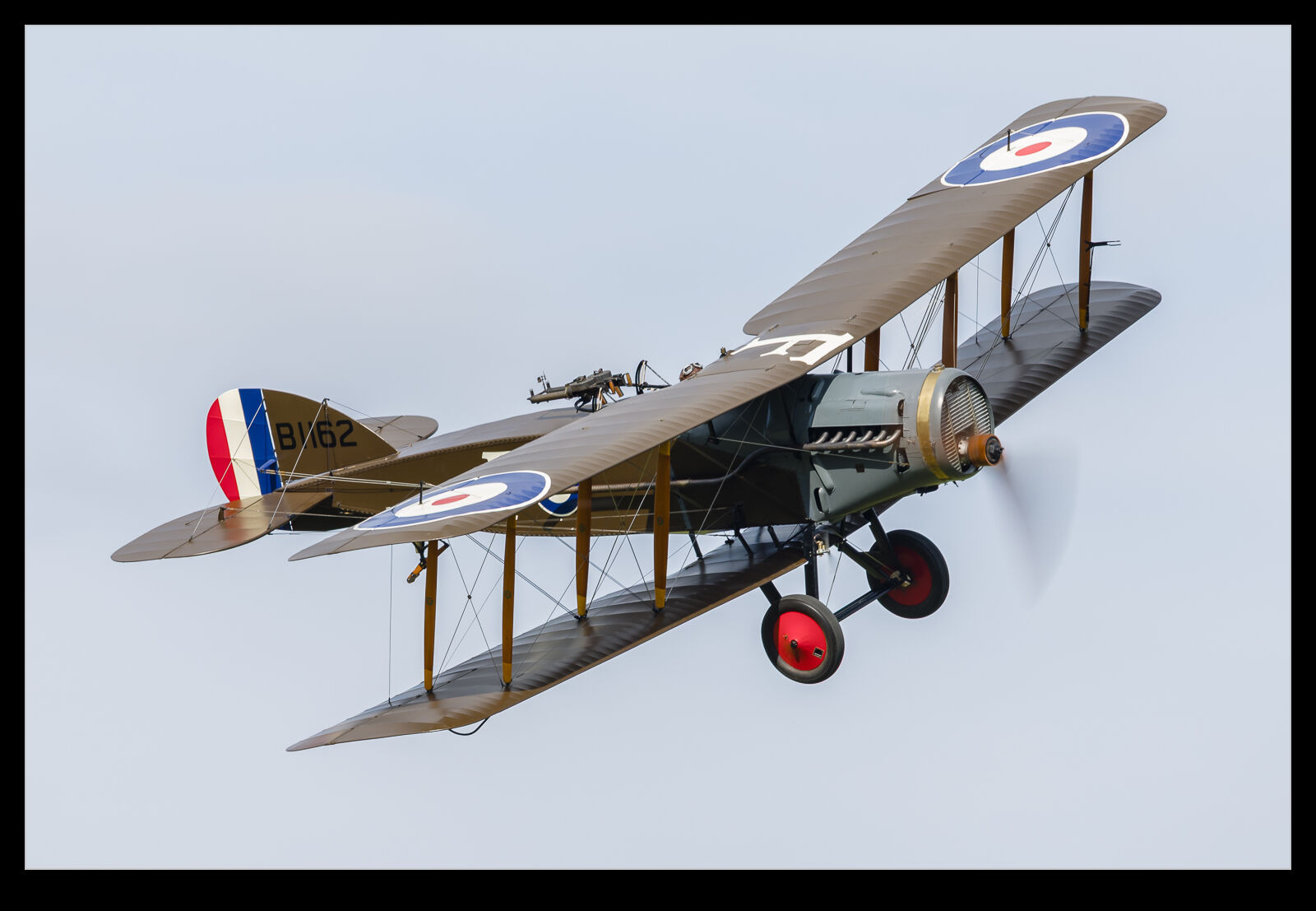 I have made this mistake before and, no doubt, I shall make this mistake again. Setting up the camera for one shot and then not changing the settings before shooting something else. I had the 200-800 lens on the camera, and I dropped the shutter speed down to 1/100th of a second for some take off shots. This is where I left it while shooting the flying display of a couple of aircraft. A long focal length and moving target with a slow shutter speed means that there are a ton of shots that are totally unusable. That really does help in the process of deleting shots. Most of them are toast. A few did survive and that was quite a relief!
I have made this mistake before and, no doubt, I shall make this mistake again. Setting up the camera for one shot and then not changing the settings before shooting something else. I had the 200-800 lens on the camera, and I dropped the shutter speed down to 1/100th of a second for some take off shots. This is where I left it while shooting the flying display of a couple of aircraft. A long focal length and moving target with a slow shutter speed means that there are a ton of shots that are totally unusable. That really does help in the process of deleting shots. Most of them are toast. A few did survive and that was quite a relief!
